
Search Product category Any value Sample Label 1 Sample Label 2 Sample Label 3

How to Write a Convenience Store Business Plan: Complete Guide
- January 11, 2023
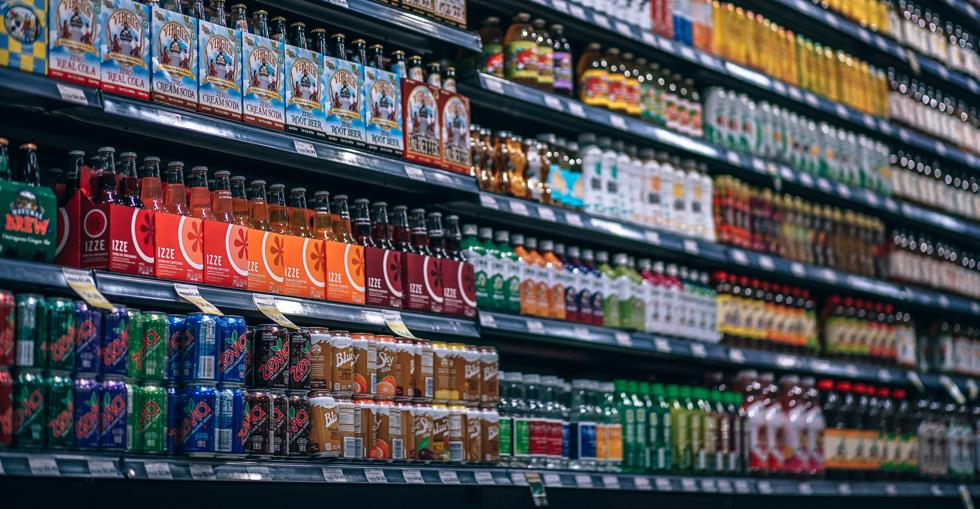
Whether you’re looking to raise funding from private investors or to get a loan from a bank (like a SBA loan) for your convenience store, you will need to prepare a solid business plan.
In this article we go through, step-by-step, all the different sections you need in the business plan of your convenience store. Use this template to create a complete, clear and solid business plan that get you funded.
1. Convenience Store Executive Summary
The executive summary of a business plan gives a sneak peek of the information about your business plan to lenders and/or investors.
If the information you provide here is not concise, informative, and scannable, potential lenders and investors will lose interest.
Though the executive summary is the first and the most important section, it should normally be the last section you write because it will have the summary of different sections included in the entire plan.
Why do you need a business plan for a convenience store?
The purpose of a business plan is to secure funding through one of the following channels:
- Obtain bank financing or secure a loan from other lenders (such as a SBA loan )
- Obtain private investments from investment funds, angel investors, etc.
- Obtain a public or a private grant
How to write an executive summary for a convenience store?
Provide a precise and high-level summary of every section that you have included in the business plan of your convenience store business. The information and the data you include in this segment should grab the attention of potential investors and lenders immediately.
Also make sure that the executive summary doesn’t exceed 2 pages in total: it’s supposed to be a summary for investors and lenders who don’t have time to scroll through 40-50 pages, so keep it short and brief.
The executive summary usually consists of 5 major sub-sections:
- Business overview : start by introducing your convenience store business, where it is located, the products you will sell, and the pricing strategy you want to implement. Mention what sets you apart from other businesses. For example, you may offer a hyper convenience store complete with a sit-down restaurant, bakery, pharmacy, and more.
- Market analysis : summarise the market where you will operate and provide a brief about your target market , target audience, spending capability, etc. Also give certain data points about the convenience store industry in the area where you want to operate (size and growth), as well as an overview of the main competitors, etc.
- People : introduce your convenience store business’ management and employee structure. Provide a brief (no more than a couple of sentences each) of the knowledge and experience of the team. Also, mention how the company will be structured (management roles and reporting lines)
- Financial plan: how much profit and revenue do you expect in the next 5 years? When will you reach the break-even point and start making profits? You can include here a chart with your key financials (revenue, gross profit, net profit )
- Funding ask : what loan/investment/grant are you seeking? How much do you need? How long will this last?
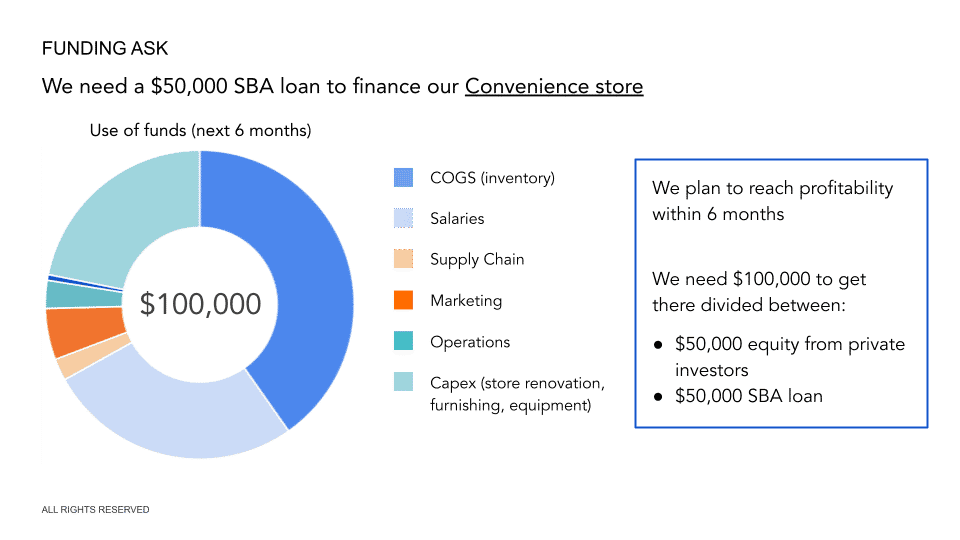
Convenience Store Financial Model
Download an expert-built 5-year Excel financial model for your business plan
2. Convenience Store Business Overview
In this segment of the business plan, you will provide details about the convenience store.
You must answer here some important questions that potential investors and lenders often ask about your business and operations. Here are some examples of questions you must answer:
- What is the rationale behind you opening a convenience store in your area today?
- Where will the business be located and why did you select that location?
- What type of products will you sell through your store?
- What will be your pricing strategy and why?
- What will be the legal structure of your company?
a) History of the Project
Any business overview must start with explaining the history of the project. There are 2 components here:
- Passion & experience of the business owner
- Rationale behind starting a convenience store today
Passion & experience
You may or may not have prior experience. If you have experience, speak about it and how it will help you to run your business. For instance, you may have worked as a store manager at a popular convenience store for 8 years. Now you want to start your own convenience store business and use your experience and knowledge to run the store efficiently.
Is there a certain problem (or perhaps, a set of problems) that your convenience store will try to solve when it comes into existence? For example, there may not be any hyper convenience store in the location that offers a sit-down restaurant, bakery, pharmacy, and other facilities.
But that’s not all! The market must be suitable for a business to exist and thrive. For instance, if you are trying to open a hyper convenience store in an area where there are highly established standalone pharmacies and restaurants with a loyal customer base, you may find it incredibly difficult to make a dent in their customer base.
Similarly, if the target customer base in the location prefers a traditional convenience store and you want to open a limited-selection convenience store, it will not work.
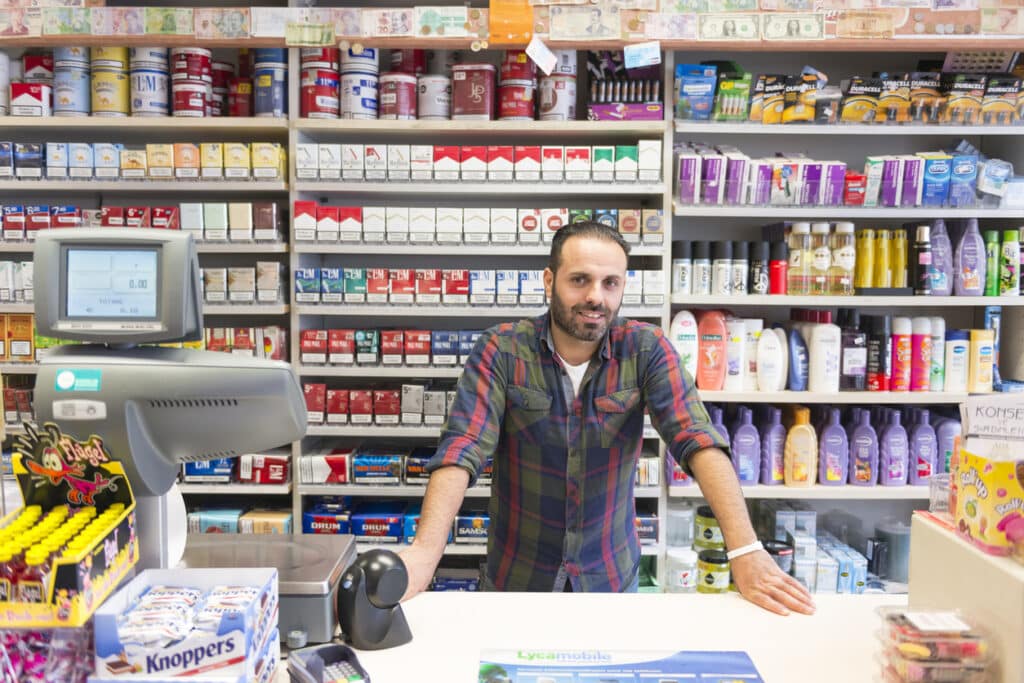
b) Business Model
This section of the Business Overview should explain the model you want to adopt for your convenience store business. For example:
- Will you buy an existing convenience store or an existing franchise convenience store, or will you start a new one from scratch?
- Where will the store be located and what made you select that location?
- What type of convenience store will you open?
- What type of products will you focus on?
- What will be the pricing strategy and why will you select that strategy?
What are the different types of convenience stores?
There are various types of convenience stores that you can select. You will start with one vital decision. Either you will buy an existing store (individually owned or a franchise) or you will start from scratch. Either way, there are different types of convenience stores you can start. Here are of them:
- Traditional stores : These are generally 2,400 to 2,500 square feet in size and offer a variety of products including baked products, dairy products, beverages, tobacco, beauty & health products, frozen & fresh meat, gasoline, limited produce items, etc.
- Expanded convenience stores : These ones are bigger with sizes ranging between 2,800 and 3,600 square feet. These stores will either offer more grocery options, or they may include a fast-food section with seating arrangements.
- Hyper convenience stores : These stores are the largest of all with an average size of anywhere between 4,000 and 5,000 square feet. They have different product and service departments. For instance, they may have a separate department for bakery products, a different section for a pharmacy, a sit-down restaurant, etc.
- Limited selection convenience stores : They are usually small with an area of 1,500 to 2,200 square feet. They sell a mix of grocery products, but the offerings are fewer than traditional stores. Food offerings are also limited to smaller things like hot dogs, popcorn, nachos, etc.
- Mini convenience stores : Not exceeding 800 to 1,200 square feet in size, these stores have very limited grocery offerings. For food service, they may offer no more than prepared sandwiches. These stores may operate 24 hours a day, but some may choose to operate only 18 hours.
- Kiosks : These are the smallest of all with the store area not exceeding 800 square feet (usually smaller). They mostly focus on selling gasoline, but some fast-moving items such as confectionaries, snacks, beverages, etc. can also be found.
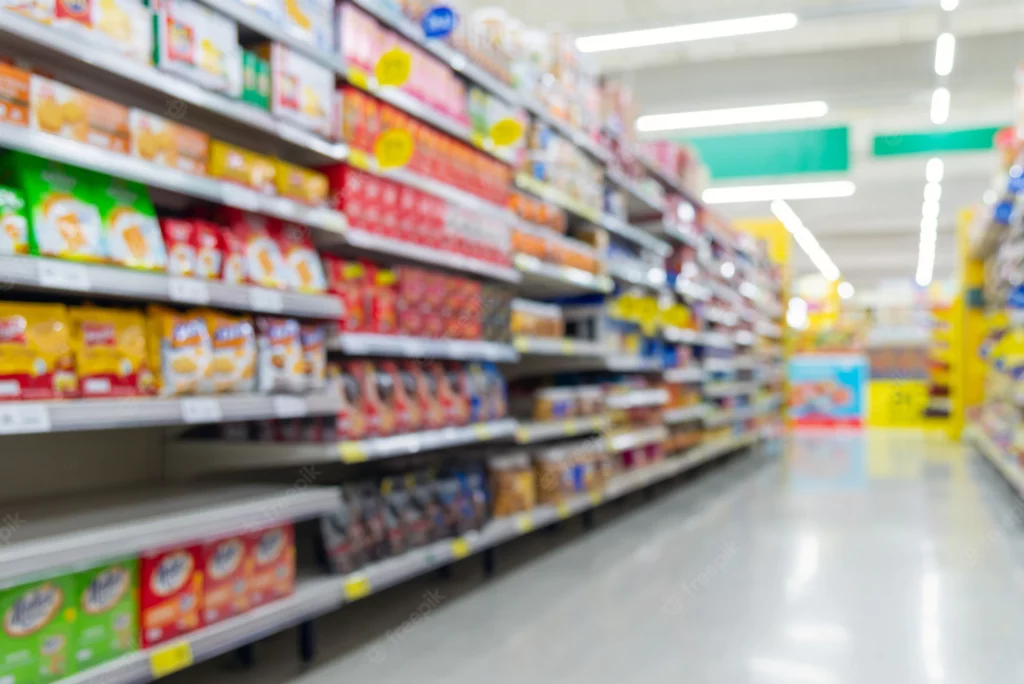
c) Products
The type of convenience store you want to open will define the type of products you offer. Of course, don’t provide a complete list of all the products you will sell here. Instead, you can list the main categories such as:
- Bakery products
- Frozen and fresh meat & fish
- OTC medicines & beauty products
- Restaurant (in case of a hyper convenience store)
- Fast-moving products (tobacco, snacks, etc.)
d) Pricing Strategy
This is where you will provide an overview of your pricing strategy. For instance, you may charge lower than your competitors because you may be enjoying huge wholesale discounts during inventory acquisition, and you may decide to pass on some benefits to your customers.
Similarly, you may decide to charge higher for certain items than your competitors because you offer 100% organic options for those products.
Pricing table
While it may not be possible to provide a proper pricing table for all products and services that you offer, it is still a great idea to provide a table that gives an overview of your pricing structure.
You can provide an average price based on categories. For instance, you can do something like this:
- Baked products: $1.25 to $12.45
- Frozen meat: $4.5 to $8.60
However, don’t go into extreme details because potential investors are not interested in the nitty-gritty of your pricing. They just need the big picture to assess the profitability, because they will tie your pricing strategy with financial projections.
e) Legal Structure
Finally, your business overview section should specify what type of business structure you want. Is this a corporation or a partnership (LLC)? Who are the investors? How much equity percentage do they own? Is there a Board of Directors? If so, whom? Do they have experience in the industry?
3. Convenience Store Market Overview
A complete understanding of the market where you want to operate is important for the success of your business. That’s also something you must showcase in your business plan.
For example, if you intend to sell pricey organic products through your convenience store in a low-income area, you will probably not succeed. You must understand the needs and the spending capacity of your target market and tailor your product offerings accordingly.
Therefore, you must cover here 3 important areas:
- Industry size & growth : how big is the convenience store business industry in your area? What is its growth rate (or decline rate) and what are the factors contributing to its growth or decline?
- Competition overview : how many competitors are there? How do they compare vs. your business? How can you differentiate yourself from them?
- Customer analysis : who is your target audience? What type of products do they usually buy at convenience stores? Do they prefer convenience stores to be open 24×7? What is their average bill size per visit? How frequently do they visit convenience stores?
a) Industry size & growth
How big is the convenience store business industry in the us.
According to Statista , the total sales of convenience stores in the US stood at $532.9 billion in 2020. Of this, $243.1 billion came from in-store sale alone (vs. gas sales).
In total, there were 150,274 convenience stores in the US in 2020, of which the vast majority are independent stores.
In other words, each store generates an average annual turnover $1,600,000 (excluding gas sales).
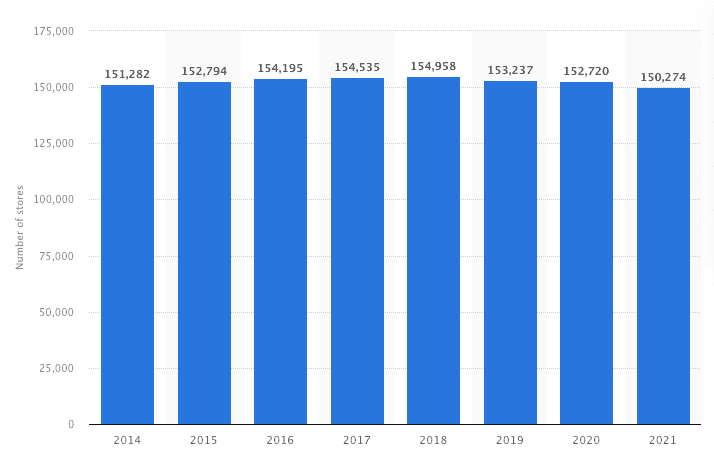
How big is the convenience store business industry in your area?
After getting a clear picture of the convenience store industry in the US as a whole, narrow down to your location. Unfortunately, it’s likely that you won’t find the number anywhere (at least not for free).
In that case, you can use our guide to estimate the TAM, SAM, and SOM for your business. Here is an example of how to do it:
We know the average convenience store in the US generates an annual turnover of $1.6 million (in-store sales only). Therefore, if the location where you will operate has a total of 40 convenience stores, the convenience store industry in your area is worth approximately $64 million.
How fast is the convenience store business industry growing in your area?
According to IBISWorld , the convenience store market in the US registered an annual growth rate of 3.1% from 2017 to 2022.
What about the location where you want to open your convenience store? US national averages can be a great addition to your business plan, yet they don’t necessarily help to assess the convenience store business industry where you want to open your store. For example, the industry might be growing in the US, but declining in your region for a number of reasons (businesses shutting down due to losses, etc.).
As you likely won’t find this information online, you can instead rely on the number of convenience stores in the location to calculate the average growth rate of the industry in your area.
For example, if the region had only 34 convenience stores in 2017 and 40 in 2022, you can assume that the average annual growth rate of the convenience store industry in the area is 3.53%, in line with the US national average.

b) Competition Overview
Studying your competitors’ business models is vital. You need to understand what makes them successful or why they fail. A clear understanding of their business model, the products they sell, their marketing strategies, etc., will allow you to provide a better service.
If your competitors are offering nearly the same products, then what is their market share and how do they market their products & services to attract new customers?
It is always a good idea to do some research (if necessary, you may consider physically visiting your competitors without revealing your business intentions) and create a comparative table summarizing their respective product offering, marketing strategy , store size, etc.
Here is a sample table that you can use:
Convenience Store SWOT Analysis
SWOT stands for Strength, Weakness, Opportunities, and Threats. This analysis will help lenders and investors better understand how you compare vs. competitors as well as the overall risk and reward profile of your business.
Here is a sample that you can use as a reference:
- Strengths : A master’s degree in business management, 9 years of experience as a general manager in a convenience store chain
- Weaknesses : Startup cost, no initial brand reputation
- Opportunities : Steady growth in residential population as people from other places are migrating to the area owing to its low cost of living, only 2 convenience stores in a 6-mile radius and 3 stores in a 12-mile radius
- Threats : Existing stores planning on opening new stores

c) Customer Analysis
This is the sub-section where you will provide a detailed analysis of your target audience. Some important points that you must include in your customer analysis include:
- What in-store products do they usually buy (apart from gas)?
- How long do they spend in a convenience store?
- What is the average amount they spend at a convenience store each month?
- Do they purchase beauty and OTC health products from convenience stores?
- What is the percentage of smokers and tobacco users in the area? This will give you a fair idea of whether you should stock cigarettes and other tobacco products or not
You can add as many data points as required to validate your business decision. The idea here is to display your deep understanding of the target audience and their needs, preferences, and expectations. This knowledge can help you to tailor your products & services to attract new customers.
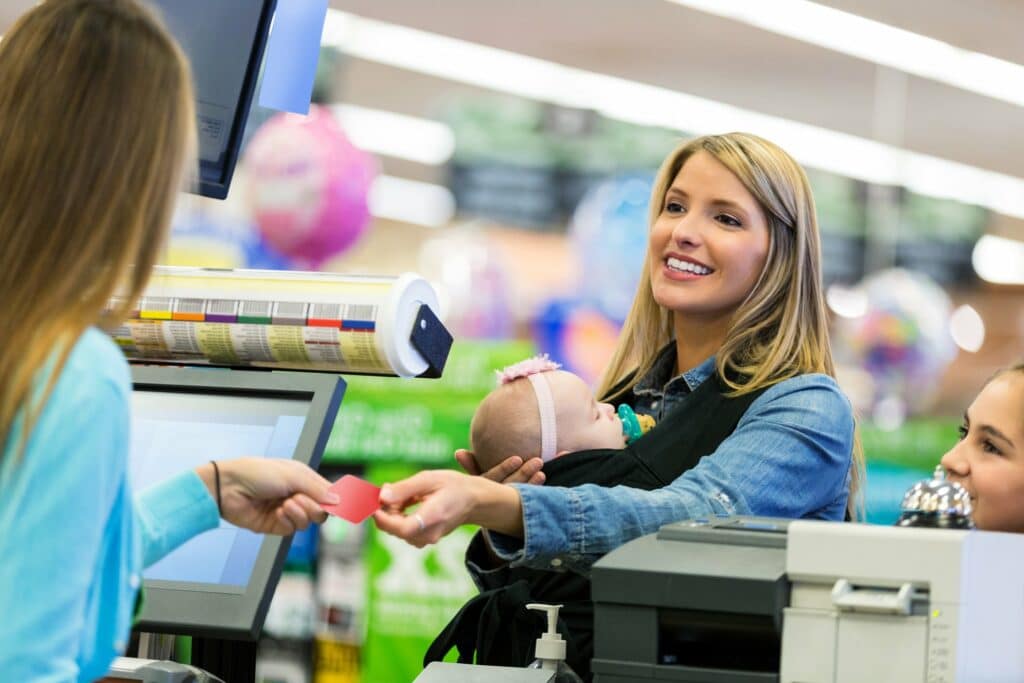
4. Sales & Marketing Strategy
This is the section where you outline your customer acquisition strategy. Try to answer the following questions:
What is your Unique Selling Proposition (USP)?
- What are the different marketing strategies you will use?
- How do you intend to track the success of your marketing strategy?
- What is your CAC or customer acquisition cost?
- What is your marketing budget?
What marketing channels do convenience stores use?
A few marketing channels that convenience store businesses typically use are:
- Signages (most common)
- Local listings
- Loyalty programs
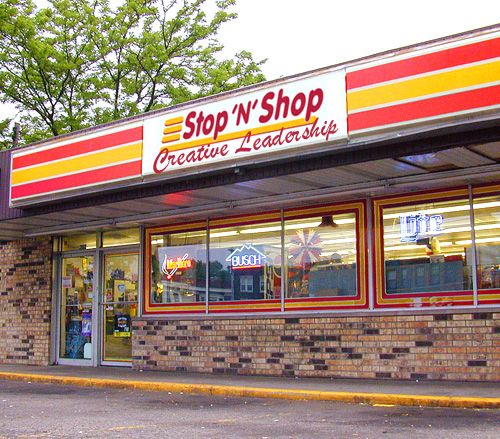
In other words, how do you differentiate yourself vs. competitors? This is very important as you might need to win customers from competitors.
A few examples of USPs are:
- Location: your store may be located in a very busy area
- Product variety : you may offer varied products for all your customers’ need
- Pricing : you may have cheaper products vs. competitors
Your USP will depend on your business model, competitor analysis , and target audience. Whatever your USP be, it should be clear and appealing to your target audience.
5. Management & People
You must address 2 things here:
- The management team and their experience/track record
- The organizational structure : different team members and who reports to whom?
Small businesses often fail because of managerial weaknesses. Thus, having a strong management team is vital. Highlight the experience and education of senior managers that you intend to hire to oversee your convenience store business.
Describe their duties, responsibilities, and roles. Also, highlight their previous experience and explain how they succeeded in their previous roles.
It is also important that you explain how their experiences and qualifications help you in implementing the convenience store business you are proposing. If they have specialized training and experience (for example, 9 years of general manager experience in a leading convenience store chain, 7 years of vendor management experience, etc.), add that information.
Organization Structure
Even if you haven’t already hired a general manager, stockist, salesperson, cashier, guard, and other relevant staff members, you must provide a flowchart of the organizational structure defining hierarchy and reporting lines.
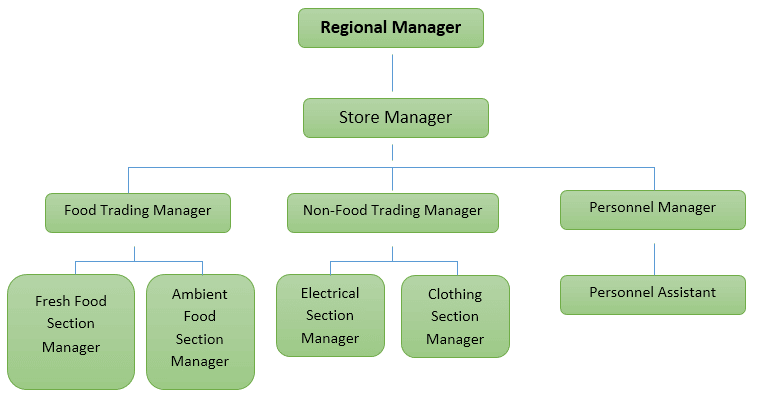
6. Financial Plan
The financial plan is perhaps, with the executive summary, the most important section of any business plan for a convenience store.
Indeed, a solid financial plan tells lenders that your business is viable and can repay the loan you need from them. If you’re looking to raise equity from private investors, a solid financial plan will prove them your convenience store is an attractive investment.
There should be 2 sections to your financial plan section:
- The startup costs of your project (if you plan to start a new store, add a new store to your chain, etc.)
- The 5-year financial projections of your convenience store(s)
a) Startup Costs
Before we expand on 5-year financial projections in the following section, it’s always best practice to start with listing the startup costs of your project. For a convenience store business, startup costs are all the expenses you incur before you start making sales. These expenses typically are:
- The acquisition of the real estate (if you buy)
- The lease deposit (if you rent)
- The renovation and equipment costs
- Business insurance, etc.
Of course, the startup costs depend on a number of factors, like the number of stores you plan to open, their size, the products you will sell, etc.
For example, it costs on average $290,000 to $351,000 to start a 1,500 sq. ft. convenience store (assuming you need to do a lot of renovation and overhaul).
Note that these costs are for illustrative purposes and may not be fully relevant for your business. For more information on how much it costs to open and run a convenience store, read our article here .
b) Financial Projections
In addition to startup costs, you will also need to build a solid 5-year financial model in the business plan of your convenience store.
Note that your financial projections should be built using a spreadsheet (e.g. Excel or Google Sheets) and presented in the form of tables and charts in your business plan.
As usual, keep it concise here and save details (for example detailed financial statements, financial metrics, key assumptions used for the projections) for the appendix instead.
Your financial projections should answer at least the following questions:
- How much revenue do you expect to generate over the next 5 years?
- When do you expect to break even?
- How much cash will you burn until you get there?
- What’s the impact of a change in pricing (say 10%) on your margins?
- What is your average customer acquisition cost?
You should include here your 3 financial statements (income statement, balance sheet and cash flow statement). This means you must forecast:
- The number of customers / orders over time ;
- Your expected revenue ;
- Operating costs to run the business ;
- Capex (cost to renovate / build your store, furniture and equipment, etc.)
When projecting your financials, make sure to sensitize sales volume (customers), pricing as well as the expenses (inventory, salaries, etc.). Indeed, a small change in these assumptions may have a significant impact on your revenues, and most importantly, your profits.

7. Use of Funds
This is the last section of the business plan of your convenience store. Now that we have explained what your business model is, what type of products you sell, how you get customers, etc., this section must now answer the following questions:
- How much funding do you need?
- What financial instrument(s) do you need: is this equity or debt, or even a free-money public grant?
- How long will this funding last?
- Where else does the money come from? If you apply for a SBA loan for example, where does the other part of the investment come from (your own capital, private investors?)
If you raise debt:
- What percentage of the total funding the loan represents?
- What is the corresponding Debt Service Coverage Ratio ?
If you raise equity
- What percentage ownership are you selling as part of this funding round?
- What is the corresponding valuation of your business?
Use of Funds
Any business plan for a convenience store should include a clear use of funds section. This is where you explain how the money will be spent.
Will you spend most of the loan / investment in paying your employees’ salaries and the COGS (inventory)? Or will it cover mostly the cost for acquiring the real estate and renovations?
For the use of funds, we also recommend using a pie chart like the one we have in our financial model template where we outline the main expenses categories as shown below.
Privacy Overview
Convenience Store Business Plan Template
Written by Dave Lavinsky
Convenience Store Business Plan
You’ve come to the right place to create your Convenience Store business plan.
We have helped over 5,000 entrepreneurs and business owners create business plans and many have used them to start or grow their convenience stores.
Below is a template to help you create each section of a business plan for your convenience store.
Executive Summary
Business overview.
Speedy Pete’s Convenience Store is a new convenience store located in Lansing, Michigan. The business is a newly established convenience store set up by its founder, Pete McGee. As a longtime retailer and employee of various convenience stores throughout Lansing, Pete realized that the small suburb that he resides in has grown too quickly to meet the demand of the area residents. There is an intersection that Pete has identified to be without a convenience store within 5 miles.
For the past ten years, Pete has been the area manager for 6 convenience stores for a locally-owned brand. Through his promotion, Pete oversaw the store managers and made sure each store was profitable, well stocked, and had the proper staff in place. Through his knowledge and training, Pete is well-equipped to be able to open his own convenience store and manage it properly.
Speedy Pete’s will offer gas as well as a car wash and air machine for tires. The store itself will offer alcoholic and non-alcoholic beverages, snacks, basic groceries, and ready-made coffee, donuts, and hot food. It will be the perfect stop for the area residents to stop in and purchase their products without having to go out of their way.
Product Offering
The following are the products that Speedy Pete’s Convenience Store will provide:
- Air Machine
- Non-alcoholic beverages
- Beer and Wine
- Basic Groceries
- Beverage Machine
- Freshly Made Hot Coffee
- Freshly Made Donuts/Cookies
- Freshly Made Hot Food (hot dogs, burritos, sandwiches)
Customer Focus
Speedy Pete’s Convenience Store will target all residents residing in southeastern Lansing and commuters traveling through the area. The customers will come from all demographics and ages.
Management Team
Speedy Pete’s Convenience Store will be owned and operated by Pete McGee. As a former area manager that oversaw 6 convenience stores in the area, Pete is able to open, train his employees, and ensure that the convenience store will run smoothly and efficiently. He is exceptionally knowledgeable in monitoring profit margins and ensuring the store is profitable.
Pete McGee has worked in the retail industry for most of his life. He has worked in convenience stores, home improvement stores, and large retailers. For the past ten years, Pete has been the area manager for 6 convenience stores for a locally-owned brand. Through his promotion, Pete oversaw the store managers and made sure each store was profitable, well stocked, and had the proper staff in place. Pete was exceptional at his job as he was able to monitor profit margins and teach his store managers which products to keep on the shelves and which products to get rid of. Through his knowledge and training, Pete is well-equipped to be able to open his own convenience store and manage it properly.
Success Factors
Speedy Pete’s Convenience Store will be able to achieve success by offering the following competitive advantages:
- Ideal location – there is not a convenience store within 5 miles of the newly developed neighborhood
- Large selection of snacks, beverages, and freshly made items
- The gas to be sold is from the highest quality gas distributor
Financial Highlights
Speedy Pete’s Convenience Store is seeking $400,000 in debt financing to open the convenience store. The funding will be dedicated towards securing the land, funding the construction, and purchasing the initial inventory. Funding will also be dedicated towards three months of overhead costs to include payroll of the staff, utilities, and marketing costs for the convenience store. The breakout of the funding is below:
- Purchase 0.5 acre of retail land located at an intersection: $100,000
- Construction and build-out of the small convenience store: $100,000
- Three months of overhead expenses (payroll, rent, utilities): $150,000
- Marketing costs: $10,000
- Working capital: $40,000
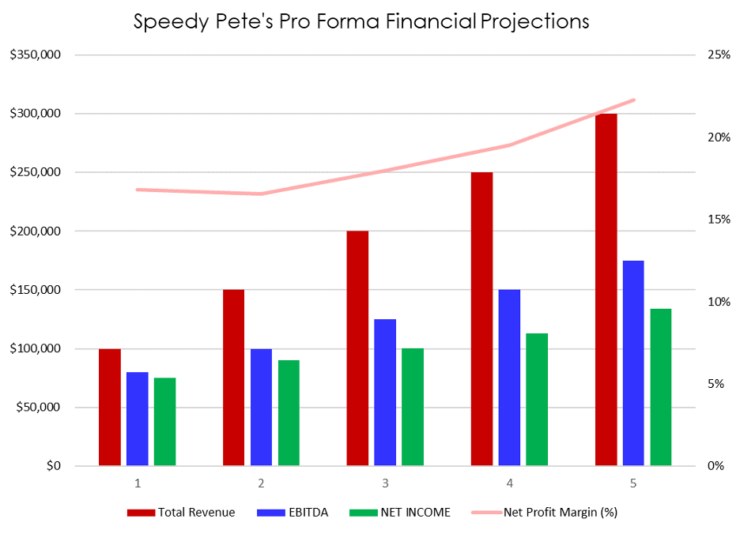
Company Overview
Who is speedy pete’s convenience store.
Speedy Pete’s Convenience Store is a new convenience store located in Lansing, Michigan. The business is a newly established convenience store set up by its founder, Pete McGee. As a longtime retailer and employee of various convenience stores throughout Lansing, Pete realized that the small suburb that he resides in has grown too quickly to meet the demand of the area residents. There is an intersection that Pete has identified to be without a convenience store within 5 miles. The city just put up a traffic light because the traffic has increased significantly within the past two years. The intersection is at the bottom of a newly developed neighborhood so the convenience store will be passed by its residents multiple times throughout the day and will be accessible through two points of entry.
Speedy Pete’s Convenience Store History
Speedy Pete’s Convenience Store is owned and operated by Pete McGee. Pete is a former convenience store employee, manager, and area manager. He has experience in monitoring profit margins, managing employees, and managing inventories.
Since incorporation, Speedy Pete’s Convenience Store has achieved the following milestones:
- Registered Speedy Pete’s Convenience Store, LLC to transact business in the state of Michigan.
- Has contracts in place for his gas, grocery, and drink suppliers.
- Contacted an architectural and construction firm to begin the design and construction of the convenience store.
- Began recruiting a staff of employees to help him with the day to day operations.
Speedy Pete’s Convenience Store Products
The following will be the products Speedy Pete’s Convenience Store will provide:
Industry Analysis
Customer analysis, demographic profile of target market.
Speedy Pete’s Convenience Store will target all residents of Lansing Michigan. The target market will consist of area residents, students, and employees working in the area.
The precise demographics for Lansing, Michigan are:
- 1,006,032 residents
- 560,000 households
- 584 schools
- 300,084 area businesses
- 3 major highways within 20 miles
Customer Segmentation
Speedy Pete’s Convenience Store will primarily target the following customer profiles:
- Residents living in the area
- Employees working in the area
- Travelers driving through Lansing
Competitive Analysis
Direct and indirect competitors.
Speedy Pete’s Convenience Store will face competition from other companies with similar business profiles. A description of each competitor company is below.
Speed Demon Convenience Stores
Speed Demon is a gasoline-convenience store brand that has over 3,500 stores across the country. They service over 2 million customers everyday and offer a robust rewards program where customers are able to earn discounts on gas and products by being a frequent shopper. The stores include a Speedy Cafe that is a fast-casual dining option and is on track to open another 100 stores by the end of next year. The company is headquartered in Ohio and is a sub-organization with Marathon Petroleum.
9-29 Convenience Stores
9-29 Convenience Stores is a large name in the convenience-retailing industry. Based in Irving, Texas, 9-29 operates, franchises, and/or licenses more than 13,000 stores in the U.S. and Canada. The company offers cold drinks, candy, pizzas, groceries, tobacco items, lottery tickets, coffee, juices, sandwiches, ice creams, snacks, and other related items. The chain was founded in 1927.
A couple of the most popular items 9-29 offers are their large Slurpee drinks and large soft drink cups for its soda fountain machine. The cups offered are the largest on the market at 128 ounces.
Fast Time Convenience Stores
Fast Time Convenience Stores is an operator of a network of convenience stores and gas stations in the northeastern part of the United States. The company’s stores offer groceries, beverages, fresh food, car wash services, road transportation fuel, stationeries and other retail products. Fast Time was founded in 1958 and continues to operate from the original family that established it.
Most recently, Fast Time has attempted to grow its footprint to the midwestern states of the US. The company is currently conducting market research to see if the investment would be viable as those states tend to be saturated with a multitude of convenience store chains.
Competitive Advantage
Speedy Pete’s Convenience Store will be able to offer the following advantages over their competition:
Marketing Plan
Brand & value proposition.
Speedy Pete’s Convenience Store will offer the unique value proposition to its clientele:
- The location is strategically located in a convenience store desert where there is no other convenience store within 5 miles.
- Large selection of snacks, beverages, and freshly made hot food items.
- The store will contract with the highest quality fuel distributor.
- Pricing will be competitive and on par with other convenience store chains.
Promotions Strategy
The promotions strategy for Speedy Pete’s Convenience Store is as follows:
Speedy Pete’s will be located in a newly developed neighborhood where there are no other convenience stores in the area yet. The owner has identified a parcel of land in a highly trafficked area where a traffic light was just put up. The intersection sees thousands of residents and cars pass by on a daily basis.
Print Advertising
Speedy Pete’s Convenience Store will invest in professionally designed print ads to display in newspapers, paper programs, or flyers to be handed out at local events.
Website/SEO Marketing
Speedy Pete’s Convenience Store will hire a third-party marketing company to design their print ads and design their website. The website will be well organized, informative, and list all the convenience store products they plan to offer. The website will also list their contact information and directions to the convenience store. The marketing company will also include SEO tactics so that anytime someone types in the Google or Bing search engine “Lansing convenience store” or “convenience store near me”, Speedy Pete’s Convenience Store will be listed at the top of the search results.
The owner will also hire the marketing company to design eye-catching billboard designs to be displayed in different parts of the city. The billboards will target the drivers and/or tourists that will be heading in the direction of the convenience store.
The pricing of Speedy Pete’s Convenience Store will be moderate and on par with competitors so customers feel they receive value when purchasing their convenience store products.
Operations Plan
The following will be the operations plan for Speedy Pete’s Convenience Store.
Operation Functions:
- Pete McGee will be the Owner and Operator of the company. He will oversee all staff, hire, train, and manage store inventory, and supplier contracts and relationships.
- Bob Jones – will be the Head Manager to be in charge of the convenience store when Pete is not there. He will also work closely with Pete to learn all aspects of managing a convenience store.
- Bookkeeper – Will be in charge of payroll, accounts receivable and payable, and tax payments.
- Staff of 3 – 4 employees to assist with customer service and cleaning.
Milestones:
Speedy Pete’s Convenience Store will have the following milestones complete in the next six months.
1/1/202X – Finalize purchase of retail land
2/15/202X – Begin construction on the convenience store
3/1/202X – Finalize contracts for gas and grocery supplier
4/15/202X – Purchase all store inventory and supplies
5/1/202X – Final walk through of convenience store
5/15/202X – Hire and train convenience store staff
6/1/202X – Speedy Pete’s Convenience Store opens for business
Speedy Pete’s Convenience Store will be owned and operated by Pete McGee, a lifelong Lansing resident who has extensive experience in the convenience store industry, having worked as an hourly employee and up to an area manager overseeing 6 stores.
Financial Plan
Key revenue & costs.
The revenue drivers for Speedy Pete’s Convenience Store are the revenues it will receive from the sales of gas, car washes, grocery, snacks, beverages, alcoholic beverages, and hot ready made food.
The cost drivers will be the overhead costs required in order to staff and maintain a profitable and successful convenience store. The expenses will be the payroll cost, land payment, utilities, store supplies and inventory, car wash maintenance, and marketing materials.
Funding Requirements and Use of Funds
Key assumptions.
The following outlines the key assumptions required in order to achieve the revenue and cost numbers in the financials and in order to pay off the startup business loan.
- Number of Products Sold per Month: 10,300
- Average Price per Product: $5
- Number of Convenience Store Products Sold Per Year: 123,600
Financial Projections
Income statement, balance sheet, cash flow statement, convenience store business plan faqs, what is a convenience store business plan.
A convenience store business plan is a plan to start and/or grow your convenience store business. Among other things, it outlines your business concept, identifies your target customers, presents your marketing plan and details your financial projections.
You can easily complete your Convenience Store business plan using our Convenience Store Business Plan Template here .
What are the Main Types of Convenience Stores?
There are a number of different kinds of convenience stores , some examples include: Traditional Convenience Store, Mini Convenience Store, Limited Selection Convenience Store, Expanded Convenience Store, Hyper Convenience Store, and Kiosk.
How Do You Get Funding for Your Convenience Store Business Plan?
Convenience Stores are often funded through small business loans. Personal savings, credit card financing and angel investors are also popular forms of funding.
What are the Steps To Start a Convenience Store Business?
Starting a convenience store business can be an exciting endeavor. Having a clear roadmap of the steps to start a business will help you stay focused on your goals and get started faster.
1. Develop A Convenience Store Business Plan - The first step in starting a business is to create a detailed convenience store start up business plan that outlines all aspects of the venture. This should include potential market size and target customers, the services or products you will offer, pricing strategies and a detailed financial forecast.
2. Choose Your Legal Structure - It's important to select an appropriate legal entity for your convenience store business. This could be a limited liability company (LLC), corporation, partnership, or sole proprietorship. Each type has its own benefits and drawbacks so it’s important to do research and choose wisely so that your convenience store business is in compliance with local laws.
3. Register Your Convenience Store Business - Once you have chosen a legal structure, the next step is to register your convenience store business with the government or state where you’re operating from. This includes obtaining licenses and permits as required by federal, state, and local laws.
4. Identify Financing Options - It’s likely that you’ll need some capital to start your convenience store business, so take some time to identify what financing options are available such as bank loans, investor funding, grants, or crowdfunding platforms.
5. Choose a Location - Whether you plan on operating out of a physical location or not, you should always have an idea of where you’ll be based should it become necessary in the future as well as what kind of space would be suitable for your operations.
6. Hire Employees - There are several ways to find qualified employees including job boards like LinkedIn or Indeed as well as hiring agencies if needed – depending on what type of employees you need it might also be more effective to reach out directly through networking events.
7. Acquire Necessary Convenience Store Equipment & Supplies - In order to start your convenience store business, you'll need to purchase all of the necessary equipment and supplies to run a successful operation.
8. Market & Promote Your Business - Once you have all the necessary pieces in place, it’s time to start promoting and marketing your convenience store business. This includes creating a website, utilizing social media platforms like Facebook or Twitter, and having an effective Search Engine Optimization (SEO) strategy. You should also consider traditional marketing techniques such as radio or print advertising.
Learn more about how to start a successful convenience store business:
- How to Start a Convenience Store Business
- Business Plan for Investors
- Bank/SBA Business Plan
Operational/Strategic Planning Services
- L1 Visa Business Plan
- E1 Treaty Trader Visa Business Plan
- E2 Treaty Investor Visa Business Plan
- EB-1 Business Plan
- EB-2 NIW Business Plan
- EB-5 Business Plan
- Innovator Founder Visa Business Plan
- Start-Up Visa Business Plan
- Expansion Worker Visa Business Plan
- Manitoba MPNP Visa Business Plan
- Nova Scotia NSNP Visa Business Plan
- British Columbia BC PNP Visa Business Plan
- Self-Employed Visa Business Plan
- OINP Entrepreneur Stream Business Plan
- LMIA Owner Operator Business Plan
- ICT Work Permit Business Plan
- LMIA Mobility Program – C11 Entrepreneur Business Plan
- USMCA (ex-NAFTA) Business Plan
- Franchise Business Plan
- Landlord business plan
- Nonprofit Start-Up Business Plan
- USDA Business Plan
- Cannabis business plan
- Ecommerce business plan
- Online boutique business plan
- Mobile application business plan
- Daycare business plan
- Restaurant business plan
- Food delivery business plan
- Real estate business plan
- Business Continuity Plan
- Pitch Deck Consulting Services
- Financial Due Diligence Services
- ICO whitepaper
- ICO consulting services
- Confidential Information Memorandum
- Private Placement Memorandum
- Feasibility study
- Fractional CFO
- How it works
- Business Plan Examples
Convenience Store Business Plan Sample
JAN.04, 2018
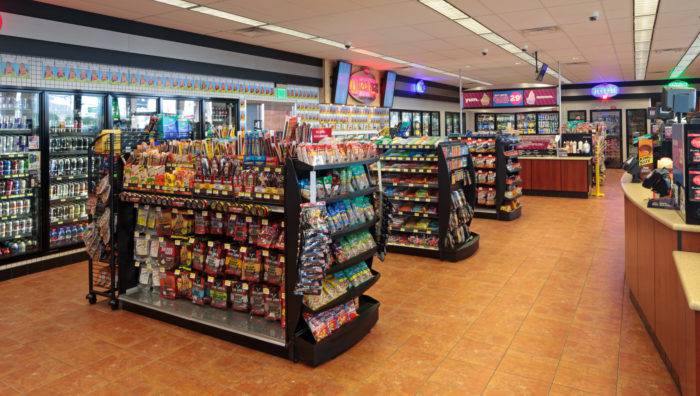
Do you want to start your own convenience store?
Are you planning to start a convenience store ? Well, the yearly sales of the US convenience store industry exceed $680 billion so it is undoubtedly one of the most profitable businesses out there. As of December 31, 2016, there were more than 154,000 convenience stores in the US and their numbers are still increasing steadily.
The biggest reason of the popularity of this business is that the convenience stores offer various products which allow the consumers to obtain all their needs from a single roof thus keeping the traffic flowing day and night throughout the year. They are undoubtedly the need of the hour in today’s time where everyone is busier than ever. That is why this business starts yielding a profit as soon as it is launched as compared to most of the businesses which need months or even years to yield the desired rate of return.
Another important aspect is that, unlike other businesses, a convenience store business has the least amount of risk associated with it provided that you plan it successfully. So before you move on to open a convenience store, you will have to prepare a convenience store business plan which will establish the basis of your company’s future operations and decisions. It will help you determine everything; the types of products you will be selling, who your target customers will be and how you will allocate your resources for the required equipment, inventory, and payroll.
So, if you are wondering how to write an effective business plan then here we are providing you the business plan for a convenience store business startup named ‘EasyShop’.
Executive Summary
2.1 the business.
EasyShop will be a bonded, insured and licensed convenience store business, located in the Manhattan borough of the New York City. We aim to serve the nearby residential community and working class of Manhattan by proving them all they need under a single roof. We have strategically selected a furniture showroom, located in the main commercial center of downtown Manhattan, to be converted into our store. The location is ideal for opening convenience store since it is amidst all commercial and business activities and at a 10 minutes’ drive from the residential zone.
The business will be owned by Doug Spencer of Spencer family, one of the richest families in the United States. Mr. Spencer has been associated with the family business of fast-food restaurants for the last 20 years after doing his Masters in Business Administration from the Harvard University. Due to the similar family business, Mr. Spencer knows exactly how to start a convenience store and he has all the resources needed for starting a convenience store .
Although there are hundreds of already established convenience stores we have several competitive advantages over other competitors. The first one is our mobile app which can be used to make payments, order the goods for home delivery, or pre-book the goods. This app is strategically built to facilitate the ever-busy working class of the society. Our second competitive edge will be the availability of everything, every time. Unlike other stores, we will make sure that our stock never runs out and everything our customers may need is available to us. Finally, our customer service will be the best in town and will also give us an edge over other convenience stores.
2.2 Management
The company will be managed by Mr. Spencer himself and he will be assisted by his friend Carl John. Carl is highly experienced in retail businesses and will serve as the Chief Executive Officer of the EasyShop. The store will remain open 24-7 and will be operated and managed by three shifts of workers. A law firm will be contracted for covering the legal aspects of the business and an insurance firm will be contacted for insuring the company.
The convenience store industry is one of the few industries which have seen a constant increase in revenue along with the increase in business locations with time. The total sales from the US convenience store industry increased by approximately $80 billion within the course of one year from 2015 to 2016. The number of convenience stores has increased by 63% during the last three decades and is still on the rise. The main reason behind this increase is that it is very easy to open a convenience store as you can see from the hundreds of convenience store examples present in every city of the United States. The actual challenge is to successfully manage that convenience store to yield profits from the start.
2.3 Customers
The company aims to serve the community living in the residential zones of the Manhattan borough and the people working in the commercial and business centers located near us. The community living in our vicinity is financially established so we hope to have a lot of sales as soon as we are launched. There are also a lot of working-class people who are extremely tight up with their busy routines and prefer to go to a place where they can find everything under a single roof. We will provide the perfect place to our busy customers where they can find a huge number of products as well as services. This diversity of products and services will be one of our primary competitive advantages over other competitors.
We will provide every basic necessity of life to our customers under a single roof so that they don’t have to visit various stores in search of their needed goods. Some categories of the products offered by us include but are not limited to fresh and packed foods, beverages, meat, dairy products, stationery, personal care, healthcare products, baby items, pet items, newspapers, magazines, batteries, greeting cards, lottery tickets etc. We will offer money transfer services and utilities bill payment services to our customers. We will also provide home delivery services for online purchases to the nearby resident community. Customers can also pre-book their goods by using our smartphone app.
2.4 Target of the Company
The target of the company is to become the best convenience store business in the New York City within next five years of our startup. Ronald Spencer aims to become one of the biggest convenience store chains in the New York City within the next ten years of our launch. This target can only be achieved by growing the sales at the forecasted rate. We also aim to balance the initial cost of the startup with earned profits by the end of the first year and open multiple stores by the end of five years in the New York City.
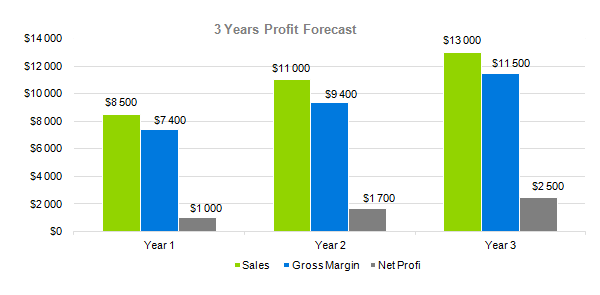
- Comprehensive planning of ‘everything’
- Hiring the best staff for operations
- Respecting our customers and making sure that they get what they want in the least time
Company Summary
3.1 company owner.
EasyShop will be owned by the Spencers, one of the richest families in the United States. Spencers are already operating a chain of fast food restaurants in North America but it was until this year that they have decided to enter the retail industry as well. The venture will be completely financed by the family while it will be led and operated by Doug Spencer.
Mr. Spencer is the eldest son of Ronald Spencer, the head of the family, and has been associated with the family business for the last 20 years after doing his Masters in Business Administration from the Harvard University. Mr. Spencer will be the General Manager of the business and will be assisted by his friend Carl John. John has served in multiple executive positions in various retail giants such as Wal-Mart, 7-Eleven, and Costco. For the last 6 years, John was serving in 7-Eleven as the Director Operations of the New York City.
3.2 Why the Business is being started
This business will basically provide a gateway for the Spencer family to enter the massive retail industry of the United States. Ronald had been planning this venture for a long time as it was undoubtedly the best way to invest the family’s wealth and profit earned via restaurants.
3.3 How the Business will be started
EasyShop will be initially launched as an open convenience store in the Manhattan borough of the New York City. A 15,000 square feet place has already been acquired on lease in the center of the main commercial district of downtown Manhattan. The place was formerly used as a furniture display showroom so a contracting firm has been hired to turn the place into a convenience store. A law firm, Wigdor LLP, has also been contracted for getting the permits and licenses from the city’s administration.
Spencer’s convenience store startup will be unique in many ways. It will remain open 24-7 and will be operated and managed by three shifts of workers with each shift working a standard eight hours a day. Mr. Spencer has planned everything about his business including the required equipment and inventory, and has hired experts from various fields to help him craft a detailed map about it. The financial experts have forecasted following costs for expenses, assets, investment, and loans for the Start-up.
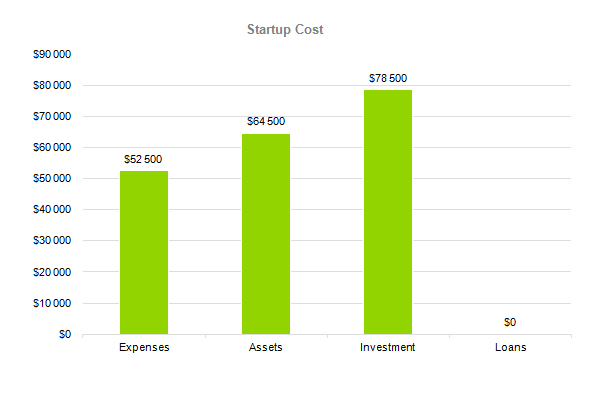
The detailed start-up requirements, start-up funding, start-up expenses, total assets, total funding required, total liabilities, total planned investment, total capital and liabilities as forecasted by experts, is given below:
Services for customers
Being launched as one of the biggest convenience store business in the New York City, we plan to offer a huge number of products as well as services to our consumers. This diversity of products and services will be one of our primary competitive advantages over other competitors. We will provide every basic necessity of life to our customers under a single roof so that they don’t have to visit various stores in search of their needed goods. Some categories of the products offered by us include but are not limited to
- Meat – poultry, beef, lunch meat, pork
- Produce – fruits, vegetables
- Paper Goods – aluminum foil, sandwich bags paper towels, toilet paper
- Bread or Bakery products– sandwich loaves, tortillas, bagels, dinner rolls
- Baking Goods – cereals, pasta, mixes, flour, sugar
- Personal Care – shampoo, shaving cream, soap, hand soap
- Frozen Foods – waffles, vegetables, individual meals, ice cream
- Beverages – coffee, tea, juice, soda, drinks
- Canned or Jarred Goods – vegetables, spaghetti sauce, ketchup
- Dairy – cheese, eggs, milk, yogurt, butter
- Cleaners – all purpose, laundry detergent, dishwashing liquid and detergents
- Other – baby items, pet items, newspapers, magazines, batteries, greeting cards, lottery tickets
We will sell our products in the standard packaging sizes, quantity and quality as other as other convenience stores. We will sell the products of local as well as international brands such as Charmin, Stouffer’s, Frito-Lay, Jolly Green Coca-Cola, Giant etc. One of the biggest problems in opening a convenience store is to incorporate some innovation in your business to make it unique and better as compared to the existing and established businesses. Considering this aspect, we will also offer money transfer services and utilities bill payment services to our customers. Customers can also pre-book their goods by using our smartphone app. We will also provide home delivery services for online purchases to the nearby resident community. There will be no delivery charges for goods worth greater than or equal to $50.
Finally, we will offer ready-to-eat fast foods so that our customers can grab a bite despite their tight schedule.
Marketing Analysis of Convenience store business
The most important component of an effective convenience store business plan is its accurate marketing analysis that’s why Mr. Spencer acquired the services of marketing experts to help him through this phase. It is only after this stage that a good convenience store business plan could have been developed. After identifying the local market trends in the New York City, the marketing experts and analysts also helped him to select the best site for starting a convenience store business .
The success or failure of a convenience store totally depends upon its marketing strategy which can only be developed on the basis of accurate marketing analysis. There are four main steps to carry out an accurate marketing analysis which are to identify the current market trends of convenience store business, identify your target audience and potential customers, set out the business targets to achieve, and finally set the prices of your products and services. Marketing analysis is a must-do thing before you even think about how to start your own convenience store . It must be considered beforehand even if you are developing a small convenience store business plan .
5.1 Market Trends
The convenience store industry is one of the few industries which have seen a constant increase in revenue along with the increase in business locations with time. The total sales from the US convenience store industry generated in 2015 amounted to more than $603 billion while the sales exceeded $680 billion by the end of 2016. The sales increase by approximately $80 billion within the course of one year. Although these stats include the sales of the fuels since most of the convenience stores in the US primarily provide gas services but still merchandise makes a major chunk of these stats. As per other services provided by the convenience stores, the weekly wire transfers in 2015 were more than 5800.
The convenience store industry is subdivided according to the major categories of products it provides with the biggest being food service. Foodservice sales are growing to become the convenience store’s most profitable category, contributing 21.4% of sales as of 2016. Similarly, fresh fruits and vegetable sales (including salads and packaged products) also increased 10.3% to $362 million in 2014. The number of convenience stores has increased by 63% during the last three decades and, currently, they make up more than 34% of all retail outlets in the United States. After identifying these market trends, it is clearly evident that convenience store industry is always blooming and can be immensely profitable.
5.2 Marketing Segmentation
Our target market is the community living nearby at the 10 minutes’ drive from our store. The community consists of all types of people from varying backgrounds. As per the financial position, nearly half of the community has monthly income ranging from $40k to $50k while nearly 10% people have incomes even around $100,000. There are also a lot of working-class people who are extremely tight up with their busy routines and prefer to go to a place where they can find everything under a single roof.
For developing a good convenience store business model it was crucial to analyze the market segmentation of the future customers of our convenience store. A successful and efficient marketing strategy can only be developed after we completely know our potential customers. Our experts have identified the following type of target audience which can become the future consumers of our baby clothes:
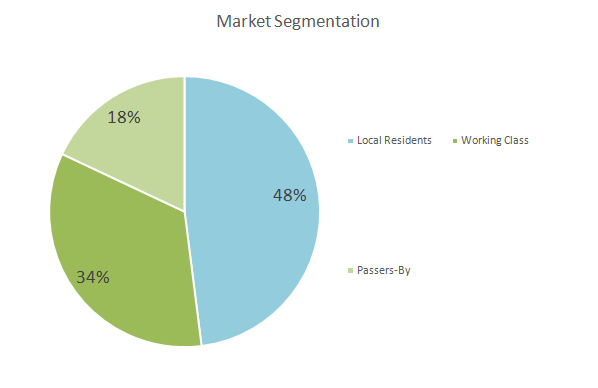
The detailed marketing segmentation of our target audience is as follows:
5.1.1 Local Residents:
The first and the most numerous group of our customers will be the community living in the vicinity of our convenience store. These residents are financially stable and can become our potential customers of merchandise like food products and other accessories. These customers will also rely on us for money transfer and utilities bill payment facilities. This customer group will drive the most number of sales so our marketing strategy will be specifically built to attract this group towards us. Initially, we will also offer various promotional packages.
5.1.2 Working Class:
The second category includes the workers and employees who work in the businesses or offices located in the vicinity of our convenience store. Most of these workers have a tight routine and they prefer to get everything under a single roof as compared to visiting different stores. They want to shop as fast as they can without compromising on their busy schedule. Our convenience store is specifically designed while keeping such busy people in mind and the average time for shopping in our store will be around 3 to 4 minutes. Our ready-to-eat fast foods will always be ready for these people to pick up while on their way to their respective companies and offices.
5.1.3 Passers-by:
The third category includes those people who do not live or work near our convenience store but have come to the area for any business purpose or commercial activity. Most of the time these people need to pick some stuff for their homes while on the way to their respective destinations. They will also stop by us to grab some fast food or make some wire transfer. The detailed market analysis of our potential customers is given in the following table:
5.3 Business Target
We aim to become the best convenience store business of the New York City within next five years of our startup. Ronald Spencer aims to become one of the biggest convenience store chains in the New York City within the next ten years of our launch. Our main business targets to be achieved as milestones over the course of next three years are as follows:
- To achieve the net profit margin of $10k per month by the end of the first year, $15k per month by the end of the second year, and $25k per month by the end of the third year
- To balance the initial cost of the startup with earned profits by the end of the first year
- To open up two more stores by the end of three years, three more stores by the end of five years
5.4 Product Pricing
Product pricing is one of the most important factors in deciding the strategy for convenience store marketing . Selecting the price for products is a difficult task, especially for the startups, because one have to attract customers while yield profit at the same time. These two things cannot be achieved at the same time and the only way out is to select a compromised trade-off or balance between the two. After considering the market demands, we have priced all our products in the similar ranges as of our competitors except for some of our food products. Our food products of Spencer brand will be nearly 10% cheaper so as to attract customers toward us. The reason behind our pricing policy is to achieve the minimum attractive rate of return which would not be possible in case of offering our other products for low prices.
Great Work!!
Had the pleasure of working with Alex on a business plan for a new venture. The end result looks very professional. His communication is always prompt and he was very patient with my detailed requests. I would definitely work with this company in the future.
Like marketing analysis, sales strategy is also an important component of the business plan for a convenience store . After identifying the market trends, the market demand, and the potential customers of the startup, the next step is to develop an ingenious strategy to attract those customers toward us. Mr. Spencer carried out an extensive research about various marketing and advertising strategies being implemented on established grocery store business model before developing an effective sales strategy for EasyShop.
6.1 Competitive Analysis:
Convenience store industry is one of the biggest industries of the United States making up 34% of all retail stores located in the United States. There are over 150,000 convenience stores in the United States; likewise, there are hundreds of established convenience stores in the New York City that’s why we have a really tough competition ahead of us.
Considering this fact, we have already made preparations for entering the massive retail industry of the United States. Our biggest competitive edge over other competitors will be our mobile app which can be used to make payments, order the goods for home delivery, or pre-book the goods. By pre-booking the goods, you don’t have to spend time on searching for all the goods at the store as one of our salesmen will have already collected them for you to pick up on the way. We have strategically built this app to facilitate the ever-busy working class of the society.
Our second competitive edge will be the availability of everything, every time. Unlike other stores, we will make sure that our stock never runs out and everything our customers may need is available with us. We will provide all kind of goods as compared to conventional convenience stores. Finally, our customer service will be the best in town. We will treat every customer with utmost respect and make sure that our customers leave our stores with big smiles on their faces.
6.2 Sales Strategy
After carrying out a detailed grocery store industry analysis , our experts came up with the following brilliant ideas to advertise and sell ourselves.
- We will carry out a large-scale social media campaign for our advertisement.
- We will allow our customers to buy our products online through our Facebook page and mobile app. Customers can pay online, order or pre-book their required goods.
- We will offer various discounts and gifts on our products for the first month of our launch to encourage sales.
6.3 Sales Forecast
Considering our innovative app, the quality and availability of our products, and our unparalleled customer service, our sales pattern is expected to increase with years. By analyzing our market segmentation strategy, our experts have forecasted the following sales on a yearly basis which are summarized in the column charts.
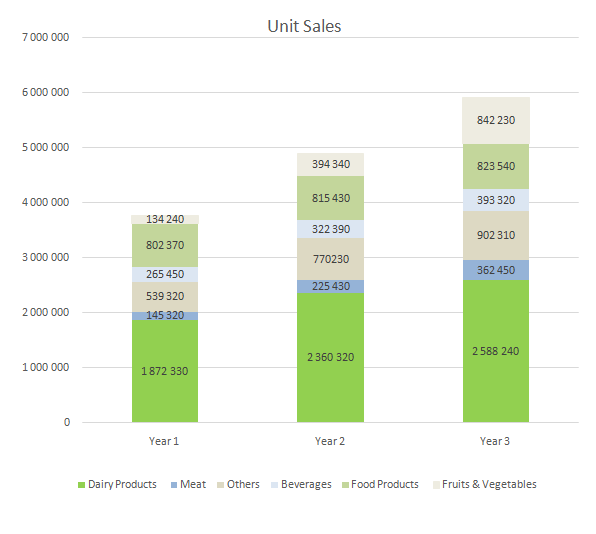
The detailed information about sales forecast, total unit sales, total sales is given in the following table:
Personnel plan
The key to the success of a business is its careful planning in the initial stages. Just like the planning of other components, you must also prepare a personnel plan before you think about how to start a grocery store business . It is also an extremely important stage because success of any business significantly depends upon its employees. So you have to prepare a plan for the staff needed whether you are developing a convenience store business plan for a small shop.
It is never easy to estimate the number and type of staff needed for a company before it is even launched therefore it is always better to seek the help of HR experts to get through this phase. Mr. Spencer acquired the services of experts to help him developed the following personnel plan for his company.
7.1 Company Staff
Mr. Spencer will act as the General Manager of the company while Carl John will serve as the Chief Executive Officer of the company. The company will initially hire following people in t:
- 1 Store Manager to manage the operations of the store
- 2 Administrators / Accountants to maintain financial records
- 4 Sales Executives responsible for marketing and discovering new ventures
- 10 Employees for operating and maintaining the store
- 2 Inventory Manager to manage the merchandise present in store and storage
- 1 Supply Chain Manager to purchase goods for the store
- 5 Drivers to transport products from storage to store and for delivering products to customers
- 4 Cleaners to keep the store clean at all times
- 1 Front Desk Officer to act as a receptionist
- 2 Security Officers
To ensure the best quality service, all employees will be selected through vigorous testing and will be trained for a month before starting their jobs.
7.2 Average Salary of Employees
The following table shows the forecasted data about employees and their salaries for next three years.
Financial Plan
After deciding the strategy and personnel plan of the company, the next step was to develop a detailed map about the financial projections covering all aspects of the company. Just like the planning of other aspects, you must also prepare a financial plan before you start thinking about how to start a convenience store business . The financial plan should craft a detailed map about the cost of startup, inventory, payroll, equipment, rent, utilities and how these costs will be covered with the earned profits. Before getting to think about how to start a convenience store, cost and profit analysis should be carried out.
Mr. Spencer hired experts to incorporate the financial aspect in the convenience store business plan . The financial plan outlines the development of the company over the next three years and is specifically developed to achieve both the company’s short-term and long-term objectives.
8.1 Important Assumptions
The company’s financial projections are forecasted on the basis of following assumptions. These assumptions are quite conservative and are also expected to show deviation but to a limited level such that the company’s major financial strategy will not be affected.
8.2 Brake-even Analysis
The following graph shows the company’s Brake-even Analysis.
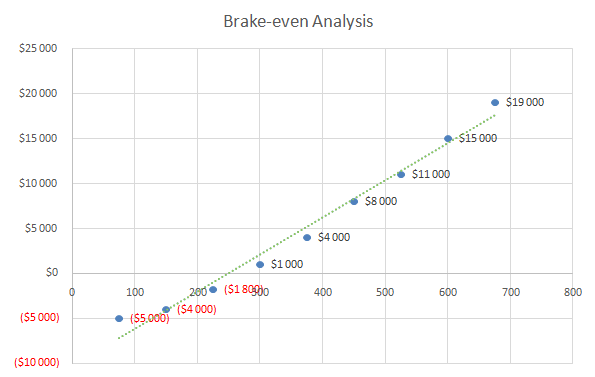
8.3 Projected Profit and Loss
The following charts show the company’s expected Profit and Loss situation on the monthly and yearly basis.
8.3.1 Profit Monthly
The following graph shows the monthly profit, as forecasted by the company’s financial experts.
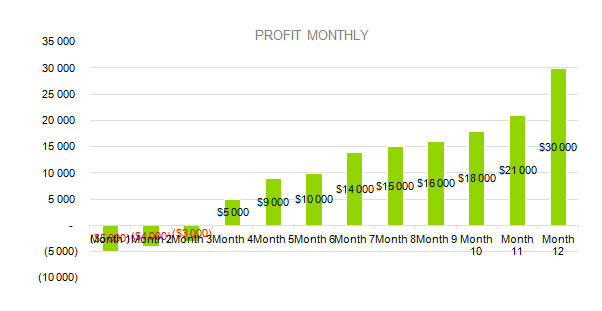
8.3.2 Profit Yearly
The following graph shows the yearly profit, as forecasted by the company’s financial experts.
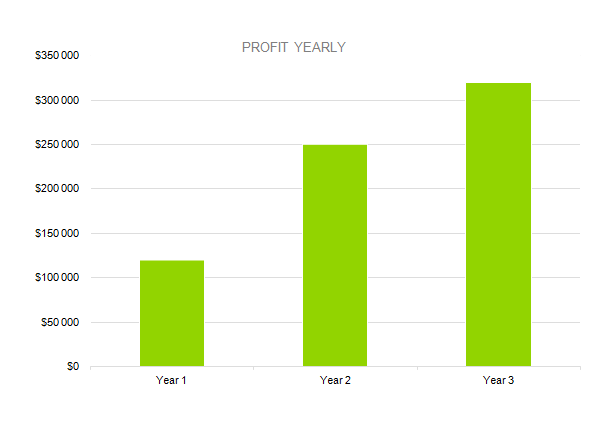
8.3.3 Gross Margin Monthly
The following graph shows the monthly gross margin, as forecasted by the company’s financial experts.
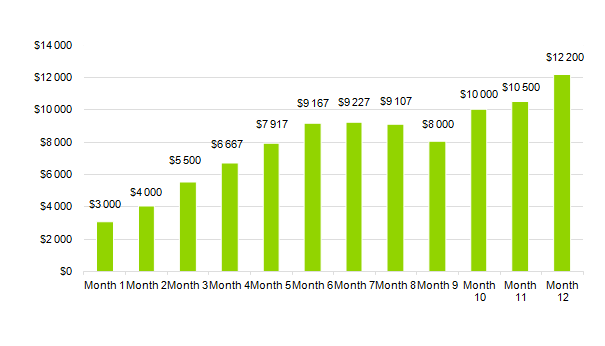
8.3.4 Gross Margin Yearly
The following graph shows the yearly gross margin, as forecasted by the company’s financial experts.
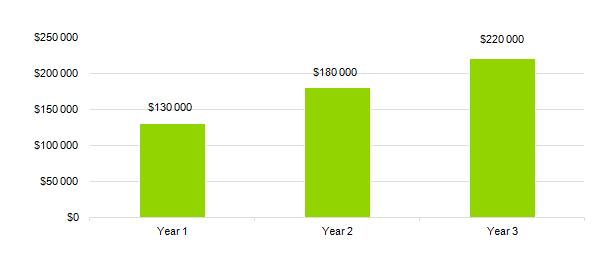
The following table shows detailed information about profit and loss, and total cost of sales.
8.4 Projected Cash Flow
The following column diagram shows the projected cash flow.
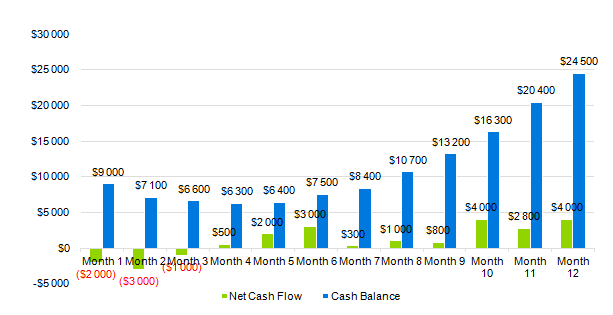
8.5 Projected Balance Sheet
The following table shows detailed data about pro forma cash flow, subtotal cash from operations, subtotal cash received, sub-total spent on operations, subtotal cash spent. The following projected balance sheet shows data about total current assets, total long-term assets, total assets, subtotal current liabilities, total liabilities, total capital, total liabilities and capital.
8.6 Business Ratios
The following table shows data about business ratios, ratio analysis, total assets, net worth.
Download Convenience Store Business Plan Sample in pdf
OGS capital professional writers specialized also in themes such as florist business plan , business plan for a funeral home , skateboard business plan , donut shop business plan , beauty supply store business plan , boutique store business plan and many other business plans.
OGSCapital’s team has assisted thousands of entrepreneurs with top-rate business plan development, consultancy and analysis. They’ve helped thousands of SME owners secure more than $1.5 billion in funding, and they can do the same for you.

Add comment
E-mail is already registered on the site. Please use the Login form or enter another .
You entered an incorrect username or password
Comments (0)
mentioned in the press:
Search the site:
OGScapital website is not supported for your current browser. Please use:

Upmetrics AI Assistant: Simplifying Business Planning through AI-Powered Insights. Learn How
Entrepreneurs & Small Business
Accelerators & Incubators
Business Consultants & Advisors
Educators & Business Schools
Students & Scholars
AI Business Plan Generator
Financial Forecasting
AI Assistance
Ai pitch deck generator
Strategic Planning
See How Upmetrics Works →
- Sample Plans
- WHY UPMETRICS?
Customers Success Stories
Business Plan Course
Small Business Tools
Strategic Canvas Templates
E-books, Guides & More
- Sample Business Plans
- Retail, Consumers & E-commerce
Convenience Store Business Plan

Things to Consider Before Writing Your Convenience Store Business Plan
Pick a legal structure.
The legal structure for your business not only decides the amount you’ll pay in taxes, but it also decides how much paperwork you’ll have to go through, if you’ll require legal help or not, what would be the liability on your assets, and so on.
Hence, you should take your time and pick a legal structure that fits your business.
Get the necessary permits
Several legal documents can help you avoid unnecessary legal hassles and carry out your business with ease. Several such documents can also help you avail yourself of tax and government benefits.
Hence, it is always a good practice to make a list of all the permits you’ll need and to get all of them before getting started.
Choose the right location
The location can make or break a convenience store business. The accessibility and convenience your store provides to your target audience help your business thrive and succeed.
Hence, you should make sure that you choose a good location for your business .
Offer something that helps your store stand out
As the convenience store business is quite competitive, your business must offer something that helps you stand apart from others who offer a similar product.
From taking inspiration from East Asian 7-elevens that offer microwaves and tables to eat food to offering vegan alternatives of snacks, you can choose from a wide variety of things to help your business stand out.
But make sure that it is something that your target audience prefers.
Chalking out Your Business Plan
If you are planning to start a new grocery or convenience store , the first thing you will need is a business plan. Use our sample business plan created using Upmetrics business plan software to start writing your business plan in no time.
Before you start writing a business plan for your new convenience store, spend as much time as you can reading through some samples of the grocery or convenience store business plans.
Reading some sample business plans will give you a good idea of what you’re aiming for. Also, it will show you the different sections that different entrepreneurs include and the language they use to write about themselves and their business plans.
We have created this sample business plan for you to get a good idea about how perfect a convenience store business plan should look and what details you will need to include in your stunning business plan.
Convenience Store Business Plan Outline
This is the standard convenience store business plan outline, which will cover all important sections that you should include in your business plan.
- Keys to Success
- Past Performance
- Products and services
- Industry Analysis
- Market Analysis
- Target Market Segment Strategy
- Competition and Buying Patterns
- Website Marketing Strategy
- Development Requirements
- SWOT Analysis
- Competitive Edge
- Marketing Strategy
- Sales Forecast
- Personnel Plan
- Important Assumptions
- Break-even Analysis
- Projected Profit and Loss
- Projected Cash Flow
- Projected Balance Sheet
- Business Ratios
- Profit and Loss
- Balance Sheet
After getting started with Upmetrics , you can copy this sample convenience store business plan into your business plan and modify the required information and download your convenience store business plan pdf or doc file. It’s the fastest and easiest way to start writing your business plan.
The Quickest Way to turn a Business Idea into a Business Plan
Fill-in-the-blanks and automatic financials make it easy.

Download a sample convenience store business plan
Need help writing your business plan from scratch? Here you go; download our free convenience store business plan pdf to start.
It’s a modern business plan template specifically designed for your convenience store business. Use the example business plan as a guide for writing your own.
Related Posts
Grocery Business Plan
Online Shopping Store Business Plan
Write Business Plan Step By Step
10 Essential Business Plan Elements
About the Author
Upmetrics Team
Upmetrics is the #1 business planning software that helps entrepreneurs and business owners create investment-ready business plans using AI. We regularly share business planning insights on our blog. Check out the Upmetrics blog for such interesting reads. Read more
Plan your business in the shortest time possible
No Risk – Cancel at Any Time – 15 Day Money Back Guarantee
Popular Templates

Create a great Business Plan with great price.
- 400+ Business plan templates & examples
- AI Assistance & step by step guidance
- 4.8 Star rating on Trustpilot
Streamline your business planning process with Upmetrics .

How to write a business plan for a convenience store?
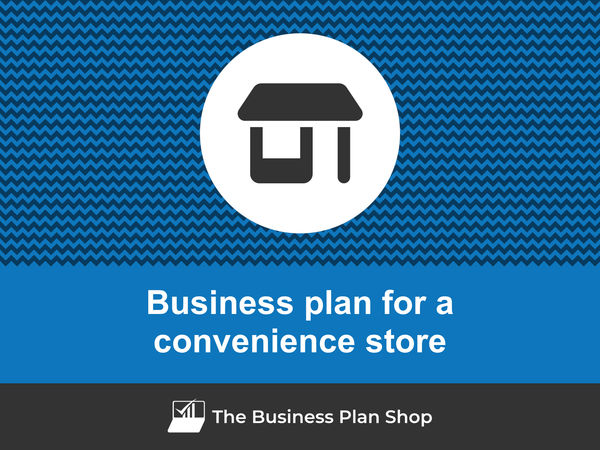
Writing a business plan for a convenience store can be an intimidating task, especially for those just starting.
This in-depth guide is designed to help entrepreneurs like you understand how to create a comprehensive business plan so that you can approach the exercise with method and confidence.
We'll cover: why writing a convenience store business plan is so important - both when starting up, and when running and growing the business - what information you need to include in your plan, how it should be structured, and what tools you can use to get the job done efficiently.
Let's get started!
In this guide:
Why write a business plan for a convenience store?
What information is needed to create a business plan for a convenience store.
- What goes in the financial forecast for a convenience store?
- What goes in the written part of a convenience store business plan?
- What tool can I use to write my convenience store business plan?
Being clear on the scope and goals of the document will make it easier to understand its structure and content. So before diving into the actual content of the plan, let's have a quick look at the main reasons why you would want to write a convenience store business plan in the first place.
To have a clear roadmap to grow the business
Small businesses rarely experience a constant and predictable environment. Economic cycles go up and down, while the business landscape is mutating constantly with new regulations, technologies, competitors, and consumer behaviours emerging when we least expect it.
In this dynamic context, it's essential to have a clear roadmap for your convenience store. Otherwise, you are navigating in the dark which is dangerous given that - as a business owner - your capital is at risk.
That's why crafting a well-thought-out business plan is crucial to ensure the long-term success and sustainability of your venture.
To create an effective business plan, you'll need to take a step-by-step approach. First, you'll have to assess your current position (if you're already in business), and then identify where you'd like your convenience store to be in the next three to five years.
Once you have a clear destination for your convenience store, you'll focus on three key areas:
- Resources: you'll determine the human, equipment, and capital resources needed to reach your goals successfully.
- Speed: you'll establish the optimal pace at which your business needs to grow if it is to meet its objectives within the desired timeframe.
- Risks: you'll identify and address potential risks you might encounter along the way.
By going through this process regularly, you'll be able to make informed decisions about resource allocation, paving the way for the long-term success of your business.
To get visibility on future cash flows
If your small convenience store runs out of cash: it's game over. That's why we often say "cash is king", and it's crucial to have a clear view of your convenience store's future cash flows.
So, how can you achieve this? It's simple - you need to have an up-to-date financial forecast.
The good news is that your convenience store business plan already includes a financial forecast (which we'll discuss further in this guide). Your task is to ensure it stays current.
To accomplish this, it's essential to regularly compare your actual financial performance with what was planned in your financial forecast. Based on your business's current trajectory, you can make adjustments to the forecast.
By diligently monitoring your convenience store's financial health, you'll be able to spot potential financial issues, like unexpected cash shortfalls, early on and take corrective actions. Moreover, this practice will enable you to recognize and capitalize on growth opportunities, such as excess cash flow enabling you to expand to new locations.
To secure financing
Whether you are a startup or an existing business, writing a detailed convenience store business plan is essential when seeking financing from banks or investors.
This makes sense given what we've just seen: financiers want to ensure you have a clear roadmap and visibility on your future cash flows.
Banks will use the information included in the plan to assess your borrowing capacity (how much debt your business can support) and your ability to repay the loan before deciding whether they will extend credit to your business and on what terms.
Similarly, investors will review your plan carefully to assess if their investment can generate an attractive return on investment.
To do so, they will be looking for evidence that your convenience store has the potential for healthy growth, profitability, and cash flow generation over time.
Now that you understand why it is important to create a business plan for a convenience store, let's take a look at what information is needed to create one.
Need a convincing business plan?
The Business Plan Shop makes it easy to create a financial forecast to assess the potential profitability of your projects, and write a business plan that’ll wow investors.

Writing a convenience store business plan requires research so that you can project sales, investments and cost accurately in your financial forecast.
In this section, we cover three key pieces of information you should gather before drafting your business plan!

Carrying out market research for a convenience store
Carrying out market research before writing a business plan for a convenience store is essential to ensure that the financial projections are accurate and realistic.
Market research helps you gain insight into your target customer base, competitors, pricing strategies and other key factors which can have an impact on the commercial success of your business.
In particular, it is useful in forecasting revenue as it provides valuable data regarding potential customers’ spending habits and preferences.
You could discover that customers may be looking for more healthy snack options, such as nuts, yogurt, and granola bars. Additionally, customers might be interested in more convenient grab-and-go meal options, such as pre-made sandwiches and salads.
This information can then be used to create more accurate financial projections which will help investors make informed decisions about investing in your convenience store.

Developing the sales and marketing plan for a convenience store
Budgeting sales and marketing expenses is essential before creating a convenience store business plan.
A comprehensive sales and marketing plan should provide an accurate projection of what actions need to be implemented to acquire and retain customers, how many people are needed to carry out these initiatives, and how much needs to be spent on promotions, advertising, and other aspects.
This helps ensure that the right amount of resources is allocated to these activities in order to hit the sales and growth objectives forecasted in your business plan.
The staffing and equipment needs of a convenience store
As you embark on starting or expanding your convenience store, having a clear plan for recruitment and capital expenditures (investment in equipment and real estate) is essential for ensuring your business's success.
Both the recruitment and investment plans must align with the timing and level of growth projected in your forecast, and they require appropriate funding.
A convenience store might incur staffing costs such as wages for cashiers, stockers, and managers. They may also need to buy equipment such as cash registers, shelving units, and refrigerators. Additionally, they may need to pay for other supplies such as cleaning supplies, paper towels, and food packaging.
To create a realistic financial forecast, you also need to consider other operating expenses associated with the day-to-day running of your business, such as insurance and bookkeeping.
With all the necessary information at hand, you are ready to begin crafting your business plan and developing your financial forecast.
What goes into your convenience store's financial forecast?
The financial forecast of your convenience store's business plan will enable you to assess the growth, profitability, funding requirements, and cash generation potential of your business in the coming years.
The four key outputs of a financial forecast for a convenience store are:
- The profit and loss (P&L) statement ,
- The projected balance sheet ,
- The cash flow forecast ,
- And the sources and uses table .
Let's look at each of these in a bit more detail.
The projected P&L statement
Your convenience store forecasted P&L statement enables the reader of your business plan to get an idea of how much revenue and profits your business is expected to make in the near future.

Ideally, your reader will want to see:
- Growth above the inflation level
- Expanding profit margins
- Positive net profit throughout the plan
Expectations for an established convenience store will of course be different than for a startup. Existing businesses which have reached their cruising altitude might have slower growth and higher margins than ventures just being started.
The forecasted balance sheet of your convenience store
The projected balance sheet of your convenience store will enable the reader of your business plan to assess the overall financial health of your business.
It shows three elements: assets, liabilities and equity:
- Assets: are productive resources owned by the business, such as equipment, cash, and accounts receivable (money owed by clients).
- Liabilities: are debts owed to creditors, lenders, and other entities, such as accounts payable (money owed to suppliers).
- Equity: includes the sums invested by the shareholders or business owners and the profits and losses accumulated by the business to date (which are called retained earnings). It is a proxy for the value of the owner's stake in the business.
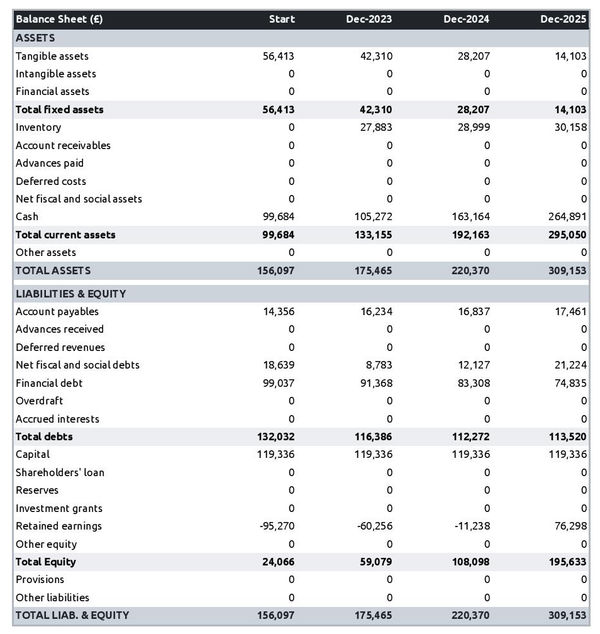
Analysing your convenience store projected balance sheet provides an understanding of your convenience store's working capital structure, investment and financing policies.
In particular, the readers of your plan can compare the level of financial debt on the balance sheet to the equity value to measure the level of financial risk (equity doesn't need to be reimbursed, while financial debt must be repaid, making it riskier).
They can also use your balance sheet to assess your convenience store's liquidity and solvency:
- A liquidity analysis: focuses on whether or not your business has sufficient cash and short-term assets to cover its liabilities due in the next 12 months.
- A solvency analysis: takes and longer view to assess whether or not your business has the capacity to repay its debts over the medium-term.
The cash flow forecast
As we've seen earlier in this guide, monitoring future cash flows is the key to success and the only way of ensuring that your convenience store has enough cash to operate.
As you can expect showing future cash flows is the main role of the cash flow forecast in your convenience store business plan.
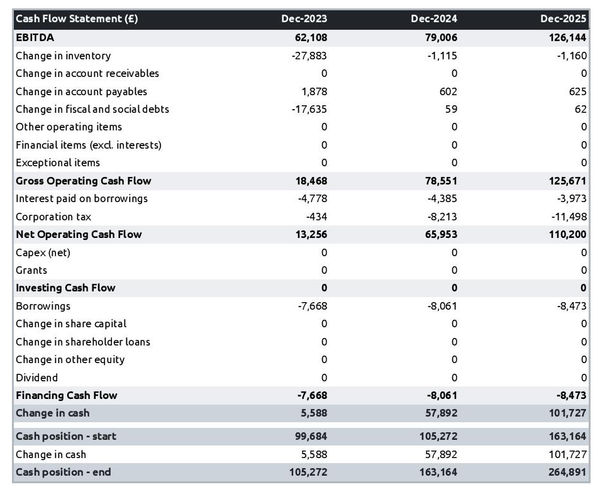
It is best practice to organise the cash flow statement by nature in order to show the cash impact of the following areas:
- Cash flow generated from operations: the operating cash flow shows how much cash is generated or consumed by the business's commercial activities
- Cash flow from investing activities: the investing cash flow shows how much cash is being invested in capital expenditure (equipment, real estate, etc.) either to maintain the business's equipment or to expand its capabilities
- Cash flow from financing activities: the financing cash flow shows how much cash is raised or distributed to financiers
Looking at the cash flow forecast helps you to make sure that your business has enough cash to keep running, and can help you anticipate potential cash shortfalls.
Your convenience store business plan will normally include both yearly and monthly cash flow forecasts so that the readers can view the impact of seasonality on your business cash position and generation.
The initial financing plan
The sources and uses table or initial financing plan is a key component of your business plan when starting a convenience store.
It shows where the capital needed to set up the business will come from (sources) and how it will be spent (uses).

This table helps size the investment required to set up the convenience store, and understand how risks will be distributed between the business owners, and the financiers.
The sources and uses table also highlights what the starting cash position will be. This is key for startups as the business needs to have sufficient funding to sustain operations until the break-even point is reached.
Now that you have a clear understanding of what will go into the financial forecast of your convenience store business plan, let's have a look at the written part of the plan.
Need inspiration for your business plan?
The Business Plan Shop has dozens of business plan templates that you can use to get a clear idea of what a complete business plan looks like.

The written part of a convenience store business plan
The written part of the business plan is where you will explain what your business does and how it operates, what your target market is, whom you compete against, and what strategy you will put in place to seize the commercial opportunity you've identified.
Having this context is key for the reader to form a view on whether or not they believe that your plan is achievable and the numbers in your forecast realistic.
The written part of a convenience store business plan is composed of 7 main sections:
- The executive summary
- The presentation of the company
- The products and services
- The market analysis
- The strategy
- The operations
- The financial plan
Let's go through the content of each section in more detail!
1. The executive summary
The executive summary, the first section of your convenience store's business plan, serves as an inviting snapshot of your entire plan, leaving readers eager to know more about your business.
To compose an effective executive summary, start with a concise introduction of your business, covering its name, concept, location, history, and unique aspects. Share insights about the services or products you intend to offer and your target customer base.
Subsequently, provide an overview of your convenience store's addressable market, highlighting current trends and potential growth opportunities.
Then, present a summary of critical financial figures, such as projected revenues, profits, and cash flows.
You should then include a summary of your key financial figures such as projected revenues, profits, and cash flows.
Lastly, address any funding needs in the "ask" section of your executive summary.
2. The presentation of the company
In your convenience store business plan, the second section should focus on the structure and ownership, location, and management team of your company.
In the structure and ownership part, you'll provide an overview of the business's legal structure, details about the owners, and their respective investments and ownership shares. This clarity is crucial, especially if you're seeking financing, as it helps the reader understand which legal entity will receive the funds and who controls the business.
Moving on to the location part, you'll offer an overview of the company's premises and their surroundings. Explain why this particular location is of interest, highlighting factors like catchment area, accessibility, and nearby amenities.
When describing the location of your convenience store to a third-party financier, you may want to emphasize the area's high rate of foot traffic. You could also discuss the potential for drawing customers from nearby neighborhoods. Additionally, you may want to highlight any amenities, such as public transport or parking, that may draw more customers to the store. Finally, you might mention any other nearby retailers that may benefit from the increased traffic that your store will bring.
Finally, you should introduce your management team. Describe each member's role, background, and experience.
Don't forget to emphasize any past successes achieved by the management team and how long they've been working together. Demonstrating their track record and teamwork will help potential lenders or investors gain confidence in their leadership and ability to execute the business plan.
3. The products and services section
The products and services section of your business plan should include a detailed description of the offerings that your company provides to its customers.
For example, your convenience store might offer a variety of snacks, drinks, and other convenience items to its customers, such as chips, candy, pre-packaged sandwiches, energy drinks, cigarettes, and lottery tickets. These items provide customers with quick and easy access to items they need without having to go to a traditional grocery store. Additionally, the convenience store could provide other services such as a car wash, ATM access, or a copy center to help customers get their tasks done quickly and conveniently.
When drafting this section, you should be precise about the categories of products or services you sell, the types of customers you are targeting and how customers can buy them.

4. The market analysis
When you present your market analysis in your convenience store business plan, it's crucial to include detailed information about customers' demographics and segmentation, target market, competition, barriers to entry, and any relevant regulations.
The main objective of this section is to help the reader understand the size and attractiveness of the market while demonstrating your solid understanding of the industry.
Begin with the demographics and segmentation subsection, providing an overview of the addressable market for your convenience store, the key trends in the marketplace, and introducing different customer segments along with their preferences in terms of purchasing habits and budgets.
Next, focus on your target market, zooming in on the specific customer segments your convenience store aims to serve and explaining how your products and services fulfil their distinct needs.
For example, your target market might include busy professionals who need quick and convenient access to food and other essentials. They don't have time to shop at a large grocery store, but they still need to pick up a few items. This segment of customers is likely to appreciate the convenience of a nearby store where they can quickly grab what they need and check out quickly.
Then proceed to the competition subsection, where you introduce your main competitors and highlight what sets you apart from them.
Finally, conclude your market analysis with an overview of the key regulations applicable to your convenience store.
5. The strategy section
When crafting the strategy section of your business plan for your convenience store, it's important to cover several key aspects, including your competitive edge, pricing strategy, sales & marketing plan, milestones, and risks and mitigants.
In the competitive edge subsection, clearly explain what sets your company apart from competitors. This is particularly critical if you're a startup, as you'll be trying to establish your presence in the marketplace among entrenched players.
The pricing strategy subsection should demonstrate how you aim to maintain profitability while offering competitive prices to your customers.
For the sales & marketing plan, outline how you plan to reach and acquire new customers, as well as retain existing ones through loyalty programs or special offers.
In the milestones subsection, detail what your company has achieved thus far and outline your primary objectives for the coming years by including specific dates for expected progress. This ensures everyone involved has clear expectations.
Lastly, in the risks and mitigants subsection, list the main risks that could potentially impact the execution of your plan. Explain the measures you've taken to minimize these risks. This is vital for investors or lenders to feel confident in supporting your venture - try to proactively address any objection they might have.
One of the risks your convenience store may face is theft. There is a possibility that customers may try to steal items from the store, either by taking them out of the store without paying, or by using counterfeit money. Having a security system in place, as well as training staff to be vigilant, may help to mitigate this risk. Another risk your convenience store may face is cyber security breaches. Your store may keep customer data, such as credit card numbers, which could be vulnerable to being accessed or stolen by hackers. Having strong security protocols in place, such as firewalls and encryption, as well as regularly monitoring your system, could help protect your store from this type of risk.
6. The operations section
The operations of your convenience store must be presented in detail in your business plan.
The first thing you should cover in this section is your staffing team, the main roles, and the overall recruitment plan to support the growth expected in your business plan. You should also outline the qualifications and experience necessary to fulfil each role, and how you intend to recruit (using job boards, referrals, or headhunters).
You should then state the operating hours of your convenience store - so that the reader can check the adequacy of your staffing levels - and any plans for varying opening times during peak season. Additionally, the plan should include details on how you will handle customer queries outside of normal operating hours.
The next part of this section should focus on the key assets and IP required to operate your business. If you depend on any licenses or trademarks, physical structures (equipment or property) or lease agreements, these should all go in there.
You could have physical assets such as the building and equipment of the store, as well as intellectual property such as your brand logo, slogans, and any trademarks or patents associated with the store. You might also have a customer loyalty program or an app that could be considered intellectual property.
Finally, you should include a list of suppliers that you plan to work with and a breakdown of their services and main commercial terms (price, payment terms, contract duration, etc.). Investors are always keen to know if there is a particular reason why you have chosen to work with a specific supplier (higher-quality products or past relationships for example).
7. The presentation of the financial plan
The financial plan section is where we will include the financial forecast we talked about earlier in this guide.
Now that you have a clear idea of the content of a convenience store business plan, let's look at some of the tools you can use to create yours.
What tool should I use to write my convenience store's business plan?
In this section, we will be reviewing the two main solutions for creating a convenience store business plan:
- Using specialized online business plan software,
- Outsourcing the plan to the business plan writer.
Using an online business plan software for your convenience store's business plan
Using online business planning software is the most efficient and modern way to write a convenience store business plan.
There are several advantages to using specialized software:
- You can easily create your financial forecast by letting the software take care of the financial calculations for you without errors
- You are guided through the writing process by detailed instructions and examples for each part of the plan
- You can access a library of dozens of complete business plan samples and templates for inspiration
- You get a professional business plan, formatted and ready to be sent to your bank or investors
- You can easily track your actual financial performance against your financial forecast
- You can create scenarios to stress test your forecast's main assumptions
- You can easily update your forecast as time goes by to maintain visibility on future cash flows
- You have a friendly support team on standby to assist you when you are stuck
If you're interested in using this type of solution, you can try The Business Plan Shop for free by signing up here .
Need a solid financial forecast?
The Business Plan Shop does the maths for you. Simply enter your revenues, costs and investments. Click save and our online tool builds a three-way forecast for you instantly.

Hiring a business plan writer to write your convenience store's business plan
Outsourcing your convenience store business plan to a business plan writer can also be a viable option.
These writers possess valuable experience in crafting business plans and creating accurate financial forecasts. Additionally, enlisting their services can save you precious time, enabling you to concentrate on the day-to-day operations of your business.
It's important to be mindful, though, that hiring business plan writers comes with a cost. You'll be paying not just for their time but also for the software they use, and their profit margin.
Based on experience, a complete business plan usually requires a budget of at least £1.5k ($2.0k) excluding tax, and more if revisions are needed after initial meetings with lenders or investors - changes often arise following these discussions.
When seeking investment, be cautious about spending too much on consulting fees. Investors prefer their funds to contribute directly to business growth. Thus, the amount you spend on business plan writing services and other consulting services should be negligible compared to the amount you raise.
Another aspect to consider is that while you'll receive the output of the business plan, you usually won't own the actual document. It will be saved in the consultant's business plan software, which will make updating the plan challenging without retaining the consultant on a retainer.
Given these factors, it's essential to carefully weigh the pros and cons of outsourcing your convenience store business plan to a business plan writer and decide what best suits your business's unique needs.
Why not create your convenience store's business plan using Word or Excel?
I must advise against using Microsoft Excel and Word (or their Google, Apple, or open-source equivalents) to write your convenience store business plan. Let me explain why.
Firstly, creating an accurate and error-free financial forecast on Excel (or any spreadsheet) is highly technical and requires a strong grasp of accounting principles and financial modelling skills. It is, therefore, unlikely that anyone will fully trust your numbers unless you have both a degree in finance and accounting and significant financial modelling experience, like us at The Business Plan Shop.
Secondly, relying on spreadsheets is inefficient. While it may have been the only option in the past, technology has advanced significantly, and software can now perform these tasks much faster and with greater accuracy. With the rise of AI, software can even help us detect mistakes in forecasts and analyze the numbers for better decision-making.
And with the rise of AI, software is also becoming smarter at helping us detect mistakes in our forecasts and helping us analyse the numbers to make better decisions.
Moreover, software makes it easier to compare actuals versus forecasts and maintain up-to-date forecasts to keep visibility on future cash flows, as we discussed earlier in this guide. This task is cumbersome when using spreadsheets.
Now, let's talk about the written part of your convenience store business plan. While it may be less error-prone, using software can bring tremendous gains in productivity. Word processors, for example, lack instructions and examples for each part of your business plan. They also won't automatically update your numbers when changes occur in your forecast, and they don't handle formatting for you.
Overall, while Word or Excel may seem viable for some entrepreneurs to create a business plan, it's by far becoming an antiquated way of doing things.
- Using business plan software is a modern and cost-effective way of writing and maintaining business plans.
- A business plan is not a one-shot exercise as maintaining it current is the only way to keep visibility on your future cash flows.
- A business plan has 2 main parts: a financial forecast outlining the funding requirements of your convenience store and the expected growth, profits and cash flows for the next 3 to 5 years; and a written part which gives the reader the information needed to decide if they believe the forecast is achievable.
We hope that this in-depth guide met your expectations and that you now have a clear understanding of how to write your convenience store business plan. Do not hesitate to contact our friendly team if you have questions additional questions we haven't addressed here.
Also on The Business Plan Shop
- How to write a business plan to secure a bank loan?
- Key steps to write a business plan?
- Top mistakes to avoid in your business plan
Do you know entrepreneurs interested in starting or growing a convenience store? Share this article with them!

Founder & CEO at The Business Plan Shop Ltd
Guillaume Le Brouster is a seasoned entrepreneur and financier.
Guillaume has been an entrepreneur for more than a decade and has first-hand experience of starting, running, and growing a successful business.
Prior to being a business owner, Guillaume worked in investment banking and private equity, where he spent most of his time creating complex financial forecasts, writing business plans, and analysing financial statements to make financing and investment decisions.
Guillaume holds a Master's Degree in Finance from ESCP Business School and a Bachelor of Science in Business & Management from Paris Dauphine University.
Create a convincing business plan
Assess the profitability of your business idea and create a persuasive business plan to pitch to investors

500,000+ entrepreneurs have already tried our solution - why not join them?
Not ready to try our on-line tool ? Learn more about our solution here
Need some inspiration for your business plan?
Subscribe to The Business Plan Shop and gain access to our business plan template library.

Need a professional business plan? Discover our solution
Write your business plan with ease!

It's easy to create a professional business plan with The Business Plan Shop
Want to find out more before you try? Learn more about our solution here

Free Download
Convenience Store Business Plan Template
Download this free convenience store business plan template, with pre-filled examples, to create your own plan..
Or plan with professional support in LivePlan. Save 50% today
Available formats:
What you get with this template
A complete business plan.
Text and financials are already filled out and ready for you to update.
- SBA-lender approved format
Your plan is formatted the way lenders and investors expect.
Edit to your needs
Download as a Word document and edit your business plan right away.
- Detailed instructions
Features clear and simple instructions from expert business plan writers.
All 100% free. We're here to help you succeed in business, no strings attached.
Get the most out of your business plan example
Follow these tips to quickly develop a working business plan from this sample.
1. Don't worry about finding an exact match
We have over 550 sample business plan templates . So, make sure the plan is a close match, but don't get hung up on the details.
Your business is unique and will differ from any example or template you come across. So, use this example as a starting point and customize it to your needs.
2. Remember it's just an example
Our sample business plans are examples of what one business owner did. That doesn't make them perfect or require you to cram your business idea to fit the plan structure.
Use the information, financials, and formatting for inspiration. It will speed up and guide the plan writing process.
3. Know why you're writing a business plan
To create a plan that fits your needs , you need to know what you intend to do with it.
Are you planning to use your plan to apply for a loan or pitch to investors? Then it's worth following the format from your chosen sample plan to ensure you cover all necessary information.
But, if you don't plan to share your plan with anyone outside of your business—you likely don't need everything.
More business planning resources

How to Write a Business Plan for Investors

Industry Business Planning Guides

How to Start a Business With No Money

10 Qualities of a Good Business Plan

Simple Business Plan Outline

How to Write a Business Plan

How to Create a Business Plan Presentation

Business Plan Template
Download your template now
Need to validate your idea, secure funding, or grow your business this template is for you..
- Fill-in-the-blank simplicity
- Expert tips & tricks
We care about your privacy. See our privacy policy .
Not ready to download right now? We'll email you the link so you can download it whenever you're ready.
Download as Docx
Download as PDF

Finish your business plan with confidence
Step-by-step guidance and world-class support from the #1 business planning software

From template to plan in 30 minutes
- Step-by-step guidance
- Crystal clear financials
- Expert advice at your fingertips
- Funding & lender ready formats
- PLUS all the tools to manage & grow

The quickest way to turn a business idea into a business plan
Fill-in-the-blanks and automatic financials make it easy.
No thanks, I prefer writing 40-page documents.

Discover the world’s #1 plan building software
Convenience Store Business Plan Template
Start your journey towards launching a successful convenience store with our comprehensive and easy-to-use template designed for ambitious entrepreneurs. Covering key aspects like market analysis to financial forecasts, our template offers all the necessary elements to craft a well-rounded convenience store business plan. Download it now and embark on your journey to convenience store success!
.png)
Download the template today!
Features of the convenience store business plan template.
Our convenience store business plan template includes key features to help you construct a solid business plan:
- Market Analysis : Carry out a comprehensive evaluation of the convenience store market, pinpoint target customer groups, and understand consumer behavior. Our template offers a methodical approach to market analysis tailored to the convenience store sector.
- Business Model: Define your store's unique selling proposition, select appropriate product range, and identify your target market. Our template provides insights and guidance to help you determine the best business model for your convenience store.
- Financial Projections : Project your revenue streams, costs, and profitability using our detailed financial projections section. This allows you to make informed decisions and set achievable financial goals for your convenience store's success.
- Marketing Strategy: Formulate a marketing plan that effectively advertises your store and attracts a loyal customer base. Our template supports you in creating a tactical marketing strategy, including brand positioning, promotional campaigns, and customer engagement activities.
Benefits of Using Our Template
By using our Convenience Store Business Plan Template, you can experience several benefits:
- Time and Effort Saving: Leverage our ready-made template that simplifies the planning process. Focus on fine-tuning your convenience store concept and business tactics rather than building a plan from scratch.
- Clarity and Direction : Our template provides a well-defined path, ensuring you address all essential aspects of your convenience store business plan. Stay on target with your objectives and avoid missing key factors contributing to your store's success.
- Increased Success Potential: A comprehensive and well-organized business plan heightens your chances of success in the competitive convenience store industry. Our template provides you with the required tools to present your convenience store concept professionally and appeal to potential investors or lenders.
Convenience Store Business Plan Frequently Asked Questions
Q: why do i need a convenience store business plan.
A: A convenience store business plan is essential as it helps you study the market, outline your business objectives, and design a strategic approach for industry success. It serves as your guide for decision-making and attracting potential investors or lenders.
Q: What are the critical components of a convenience store business plan?
A: A convenience store business plan should include a market analysis, business model, financial forecasts, marketing strategy, and operations plan. These components enable you to understand your target customers, evaluate profitability, manage your finances, and craft effective strategies for promoting and growing your store.
Q: How can a convenience store business plan assist in securing funding?
A: A detailed convenience store business plan shows potential investors or lenders that you have a deep understanding of the industry, a viable business model, and a plan for profitability. Financial projections are crucial in demonstrating potential return on investment. Presenting your business plan to potential financiers increases your chances of securing the required funding for your store.
We Know a Good Business Plan When we See One
Collectively, our team has reviewed thousands of business plans and has nearly 20 years of experience making SBA loans. We've also helped more than 50,000 businesses create financial projections across many industries and geographies.

Adam served as Executive Director for a SBA microlender in Indiana for over 10 years helping businesses and reviewing thousands of business plans.
.png)
Grace has built hundreds of custom financial models for businesses as well as our projection templates which are used by thousands of businesses every year.

Kyle served as an SBA loan officer for 7 years working directly with startups and business owners to review their business plans, projections, and prepare their loan package.
Lorem ipsum dolor sit amet, consectetur adipiscing elit.

Item added to your cart
How to write a business plan for your convenience store business.
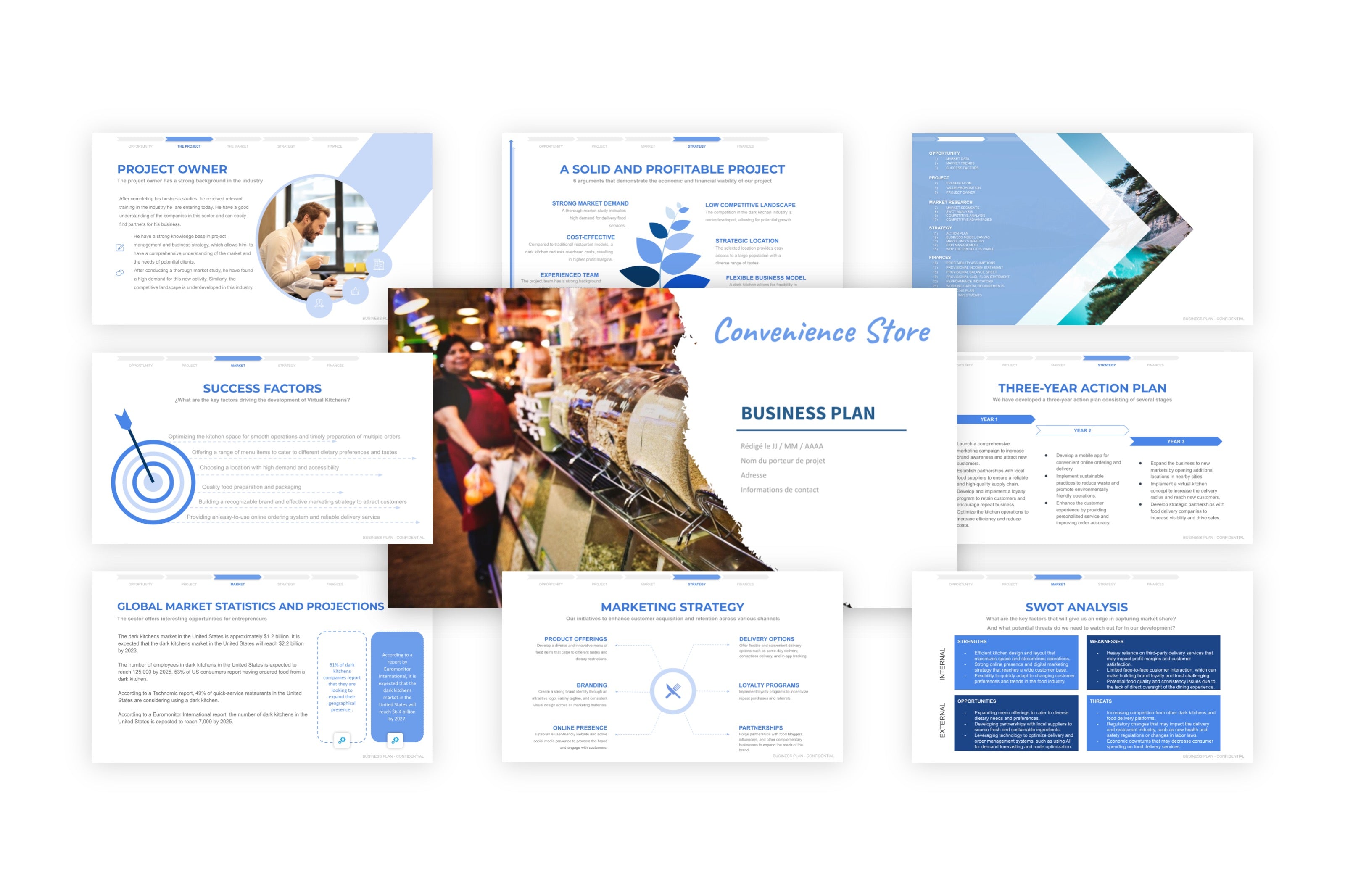
Starting a convenience store is a great idea because it offers customers a convenient way to purchase everyday items quickly, and it can be a lucrative business opportunity due to the steady demand for these items.
However, prior to that, you must have a business plan.
A business plan is a vital tool for any new project, and writing one before starting a convenience store can help to ensure success by providing a clear roadmap and objectives. Additionally, a business plan can help to identify potential risks and strategies to mitigate them.
In short, a good business plan will help make sure your convenience store is profitable .
What are the necessary elements for a business plan for a convenience store? What is the best way to structure it? Which key financial data points should be included? What are some tips for writing a business plan in the most efficient way possible?
Exciting news! The forthcoming article holds all the answers to these questions!
One last thing: it's your decision whether to start your business plan from scratch.
Instead, you can download our detailed business plan for a convenience store and adjust it to match your preferences.

How to draft a business plan for a convenience store
Do you need to develop a business plan for your convenience store.
Yes, you need to develop a business plan for your convenience store.
Establishing a strong business plan will afford you the chance to:
- get familiar with the convenience store market
- stay on top of trends and integrate them into your project
- recognize what makes a convenience store viable
- understand the everyday essential items, snack preferences, and convenience factors for customers
- come up with a unique value proposition for your corner store
- conduct a competitive analysis
- find competitive advantages for your convenience store
- find a business model that secures a healthy net income
- design and implement a robust and strategic action plan for business advancement
- assess potential risks involved in operating a convenience store, such as theft prevention, inventory management, and customer safety
Our team has created a business plan for a convenience store that is designed to make it easier for you to achieve all the elements listed.
How to organize a business plan for a convenience store?
A well-constructed business plan covers all the necessary content, metrics, and financial information. It needs to be organized so that it can be easily read and understood.
When we built and designed our business plan for a convenience store , we structured it in a proper way.
We've divided it into 5 sections (Opportunity, Project, Market Research, Strategy and Finances).
1. Market Opportunity
The section that comes first is titled "Market Opportunity."
Access relevant data and metrics for the convenience store, assisting you in analyzing the opportunities and challenges within the retail convenience store industry.
This section is revamped twice a tear to make sure data is up to date.
2. Project Presentation
The "Project" section is where you introduce your convenience store. You can describe the range of products available, including snacks, beverages, basic groceries, household essentials, the store layout, convenient location, 24/7 operation, and the unique value proposition that provides quick and convenient shopping for everyday needs.
At the end of this section, provide a brief introduction about yourself and your commitment to providing convenience and essential products to customers.
Explain your range of offerings, your convenient store layout, and how you plan to create a welcoming and accessible shopping experience at your convenience store. Highlight your dedication to customer convenience, your well-stocked inventory, and your friendly and efficient service that caters to the needs of the community through your convenience store.
You'll see that we've given you written content in our business plan. Modify it to suit your concept precisely.
3. Market Research
The next item on the list is the "Market Research" section.
This section describes the target audience for your convenience store.
It includes a comprehensive analysis of competitors in the convenience store industry and emphasizes your store's unique selection of everyday items and competitive advantages.
A tailored SWOT analysis is provided as well.
4. Strategy
In the "Strategy" section, you'll find a comprehensive 3-year action plan, detailing the initiatives and steps needed to transform your convenience store into a highly profitable endeavor.
Furthermore, there is a marketing strategy for a convenience store, a way to manage risks, and a completed Business Model Canvas included in this section.
5. Finances
In conclusion, the "Finances" section is where you can showcase the financial plan for your project.

How to write the Executive Summary for a convenience store?
The Executive Summary provides a condensed preview of the business plan of your convenience store.
Make it concise and no longer than 2 pages. Include only the important elements.
The purpose of this document is to generate interest in the reader regarding your business plan.
In the Executive Summary of your convenience store, provide answers to these questions: what products and services does your convenience store offer? who is your target audience? are there other convenience stores in the area? what funding do you require?
How to do the market analysis for a convenience store?
Conducting a market study for your convenience store enables you to grasp external factors like customer demands for quick and accessible essentials, competition within the retail industry, and emerging trends in convenience shopping.
By conducting an extensive market analysis, a convenience store can understand customer preferences, offer a wide range of daily necessities, optimize pricing strategies, and execute targeted marketing campaigns, ultimately leading to a loyal customer base, increased sales, and a prominent position in the local convenience market.
This is what you'll find in the "Market Research" section of our business plan for a convenience store :
- market trends and data about convenience stores, including consumer shopping patterns, grab-and-go food trends, and the impact of digital convenience
- a list of potential audiences for a convenience store
- the competitive comparison
- the competitive advantages for a convenience store

The key points of the business plan for a convenience store
What's the business model of a convenience store, business model of a convenience store.
A convenience store's business model centers around offering a wide range of everyday products and necessities in a convenient location with extended operating hours. Revenue is generated through product sales, potentially offering additional services such as ATM withdrawals or utility bill payments.
The business model focuses on maintaining a well-stocked store, delivering efficient and friendly customer service, effective marketing to attract local residents or passersby, and building strong customer relationships based on convenience and reliability.
Success depends on product selection and availability, delivering convenience to customers, fostering positive customer experiences and loyalty, and continuously adapting to changing consumer needs and preferences in the convenience store industry.
Business model ≠ Business plan
Do not confuse the terms 'business plan' and 'business model'.
A business model outlines the way a company creates value, generates revenue, and operates.
In a business plan, you rely on the Business Model Canvas as a concise way to present the operational framework of your business.
And, of course, there is a Business Model Canvas (already completed) in our business plan for a convenience store .
How do you identify the market segments of a convenience store?
Market segmentation for your convenience store involves dividing your potential customers into different groups based on their convenience needs, purchasing habits, and demographics.
These categories may include factors such as on-the-go shoppers, college students, commuters, or customers seeking specific products (e.g., snacks, beverages, toiletries).
By segmenting your market, you can offer a range of products and services that cater to each segment's convenience requirements. For example, you might provide a selection of grab-and-go snacks and drinks for on-the-go shoppers, offer a variety of affordable and practical items for college students, stock essential supplies for commuters, or develop a section dedicated to specialty products sought by specific customer groups.
Market segmentation allows you to target your marketing efforts effectively, optimize your product assortment, and create a convenient shopping experience that aligns with the needs and preferences of each customer segment.
In the business plan for a convenience store , you will find a comprehensive market segmentation that will help you identify your potential customers.
How to conduct a competitor analysis for a convenience store?
Without surprise, you won't be the only convenience store in your area. There will be other stores offering a range of everyday essentials and convenience items to customers.
Understanding your competitors' strengths and weaknesses is critical when developing your business plan.
Be mindful of their weaknesses (such as limited product variety, inadequate store layout, or poor customer service).
Why should you focus on these elements? Well, these weaknesses can hinder the success of convenience storees. By addressing these aspects, you can offer a wide range of essential products and convenience items, provide extended operating hours and quick service, and deliver a clean and well-stocked store environment, positioning your convenience store as a go-to destination for quick and convenient shopping needs.
It's what we call competitive advantages—focus on nurturing them to gain a competitive edge.
Here are some examples of competitive advantages for a corner store: convenient location, wide range of everyday essentials, personalized customer service.
How to draft a SWOT analysis for a corner store?
A SWOT analysis can be used to identify strengths, weaknesses, opportunities and threats in order to help inform decisions and develop a successful business plan for a convenience store.
As you can guess, there is indeed a completed and editable SWOT matrix in our business plan for a convenience store
The strengths for a convenience store
S represents Strengths in SWOT, referring to the project's internal factors that contribute to its positive performance.
For a convenience store, strengths could include a wide selection of products, convenient store locations, competitive pricing, and friendly customer service.
The weaknesses for a convenience store
W represents Weaknesses, highlighting the areas or aspects of the project that need attention.
For a convenience store, potential weaknesses include limited selection of products, lack of competitive pricing, limited operating hours, and limited customer service.
The opportunities for a convenience store
O represents Opportunities, which are the positive external factors or possibilities that can benefit the project.
In the case of a convenience store, potential opportunities may include offering a delivery service, expanding store hours, stocking a larger variety of items, and providing discounts to loyalty customers.
The threats for a convenience store
The "T" in SWOT denotes Threats, which are potential adverse circumstances or conditions originating from the external environment.
How to develop a marketing plan for a corner store?
Including a marketing strategy in your business plan is necessary to capture customers and generate profits.
A corner store can attract local residents by implementing a targeted marketing strategy that emphasizes the store's convenient location, diverse selection of everyday essentials, and personalized customer service.
Convenience shoppers won't visit your convenience store without proper promotion; emphasizing the wide range of products, convenient location, and friendly service is necessary.
Are you utilizing marketing tactics to promote your corner store? Consider offering convenient store hours or delivery services, running targeted advertising campaigns to reach your local community, and utilizing social media platforms to showcase your variety of products and personalized customer service.
Don't panic if you're completely unfamiliar with marketing and communication.
How to build financial projections for a corner store?
A solid business plan must include detailed financial information such as projected income, expenses, cash flow, and balance sheets.
As you prepare your business plan, it is important to include revenue forecasts for your convenience store.
Your business plan's readiness for banks or investors greatly relies on a revenue forecast that is both relevant and credible.
Our financial plan for a convenience store is user-friendly, providing automated validations that allow you to rectify any assumptions swiftly. This guarantees the creation of credible projections with ease and assurance.
No doubt, you'll have to establish an initial budget for launching your convenience store. Don't overlook any expense. By the way, we've listed them all in our financial plan!
The break-even analysis is vital for your financial plan because it tells you if you whether your convenience store will be profitable or not.
- Choosing a selection results in a full page refresh.
- Opens in a new window.
Convenience store business plan template + PDF
This guide introduces a state-of-the-art AI Business Plan Generator template, meticulously designed for entrepreneurs looking to initiate or expand their convenience store operation. It's crucial to highlight that the names and financial projections mentioned in this example are purely illustrative, created to showcase the strategic planning process. These examples are carefully constructed to illustrate how you can tailor your own AI-generated Convenience Store Business Plan to navigate unique obstacles and seize the opportunities within your convenience store endeavor.
For seamless customization, we provide a 'Convenience Store Business Plan PDF' for download. This document is vital for entrepreneurs committed to developing a compelling and effective strategy for launching or growing their convenience store. The 'AI Business Plan Generator' serves as a comprehensive resource, offering profound insights into the convenience store sector. It equips you with the essential tools for efficiently operating and expanding your convenience store business.
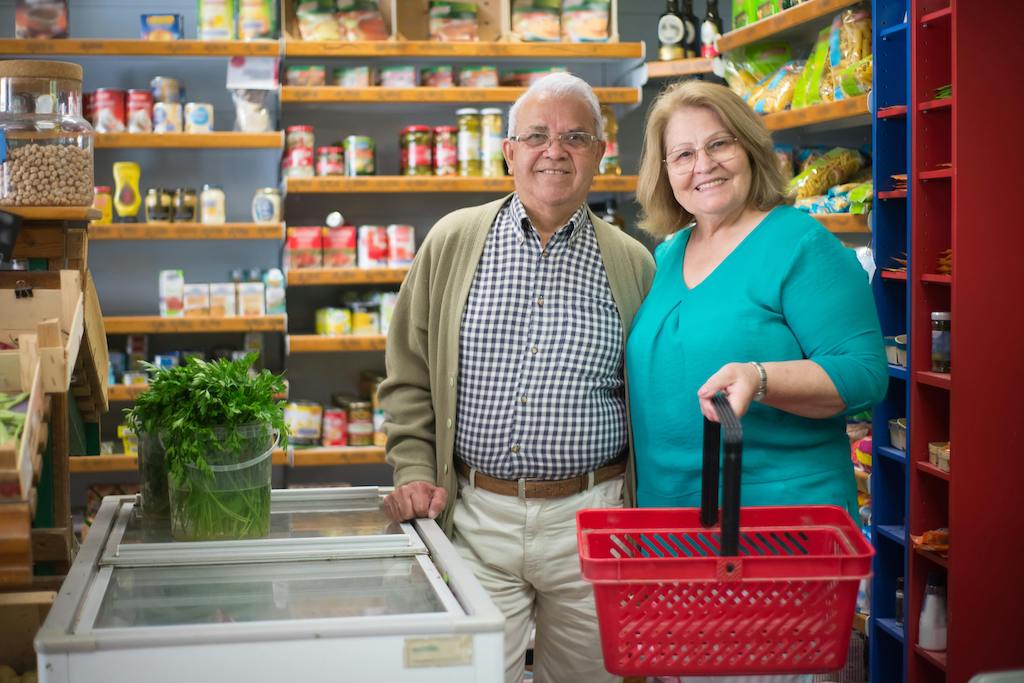
How this convenience store business plan sample was created
Create your tailored convenience store business plan effortlessly with our AI Business Plan Generator. Simply click 'Generate your business plan' and follow a series of targeted questions about your convenience store venture. Our advanced AI technology will analyze your inputs to craft a business plan that perfectly matches your convenience store's goals and needs. This streamlined and quick process usually completes in just 5-10 minutes, producing a detailed and well-organized plan. Our platform offers the ability to customize and refine your plan, ensuring it precisely reflects your unique vision for your convenience store. Upon completion, your plan is available for download, providing a clear and concise roadmap for launching and expanding your convenience store. Leverage our AI business plan generator, specially designed for convenience store enterprises, to enhance your strategic planning.

Generate your custom convenience store business plan in minutes!
Convenience store business plan sample, executive summary, business description, market research and analysis, swot analysis.
- Organizational Structure and Management Team
Products or Services
Marketing and sales strategy, operations plan, financial projections, risk analysis.
QuickStop Convenience Store, strategically nestled in the heart of Austin, Texas, embodies the simplicity and efficiency of modern convenience retail. Dedicated to providing an extensive range of products and services tailored to the fast-paced lifestyles of its patrons, QuickStop takes pride in its ability to offer quick and convenient solutions with a personalized touch. This Executive Summary encapsulates the essential components of our business plan, delineating the direction and future aspirations of QuickStop.
Our vibrant retail establishment caters to a diverse demographic, including a mix of local residents, commuting professionals, and transient customers seeking expedited purchasing experiences. This blend of consumers is central to our business model, which revolves around a comprehensive product assortment that includes snacks, beverages, tobacco products, lottery tickets, basic groceries, household items, and more. Supplementing our product offerings, QuickStop also provides value-added services such as ATM access, bill payments, mobile phone top-ups, and postage services, emphasizing the multifaceted nature of our operations.
QuickStop thrives amidst formidable competitors in the sector, such as national chains like 7-Eleven and Circle K, along with local entities CityMart Express and Neighborhood Mini Market. While these rivals bring brand recognition and widespread presence, QuickStop's differentiation lies in our commitment to community-centric engagement, premium customer service, and notably, adaptability—keys to winning the hearts and patronage of our customers.
Operating as a Limited Liability Company, QuickStop is steered by a robust management team with extensive industry-specific expertise. Samantha Lee, our General Manager, steers strategic planning with over a decade of experience in the sector. Operations Manager Alex Johnson guarantees efficiency in daily activities, while CFO Maria Gonzalez oversees our financial health. Additionally, Marketing Director David Singh is on the frontline, pioneering growth through innovative campaigns, and HR Manager Emily Wang ensures we have the best talent concentrated on delivering outstanding service.
Our marketing and sales strategy is multifaceted and deeply integrated with community engagement. We leverage social media, loyalty programs, and SEO to drive traffic while maintaining a firm pulse on seasonal trends and local alliances. Flyers and local ad spaces further solidify our footing in the Austin market.
At QuickStop, the operational workflow is fine-tuned to precision, maintaining meticulous quality control and inventory management protocols to ensure excellence at every transaction. Our supplier relationships, particularly with FreshGoods Inc. and SnackHaven Distributors, are strategically crafted to support a responsive and reliable inventory replenishment system.
Financially, QuickStop is positioned for prosperity, with sales forecasted to rise from $500,000 in the first year to $700,000 by year five. With projected net profits increasing from $50,000 to $120,000 over the same period, our robust business model anticipates sustainable growth. The financial projections are rooted in conservative estimations and lay out a roadmap for the financial trajectory of our enterprise.
However, we are cognizant of the challenges that lie ahead. Our risk analysis identifies potential market fluctuations, operational hurdles, and financial unknowns that could inhibit progress. To combat these, we have formulated comprehensive mitigation strategies and contingency plans, ensuring QuickStop remains resilient.
To conclude, QuickStop Convenience Store is positioned as a burgeoning business with a clear vision. Through a combination of strategic managerial oversight, customer-centric operational tactics, and a strong financial foundation, we are ready to carve a niche in the convenience store industry. QuickStop is not just a store but a hub for Austin's community—a testament to our dedication to delivering convenience and quality, day in and day out.

QuickStop Convenience Store is strategically situated in the bustling neighborhood of Austin, Texas, offering local residents and commuters a one-stop shop for their daily essentials. Our enterprise falls under the vibrant convenience store industry—a sector known for providing quick access to a range of everyday items along with additional services to cater to the fast-paced lives of consumers. This sector thrives on strategic locations, extended hours of operation, and a variety of products catering to immediate needs.
The inception of QuickStop Convenience Store was driven by a recognition of the opportunity within the community for timely and efficient access to goods and services that cater to various needs throughout the day. Established in 2018, QuickStop was founded with the purpose of providing residents with a friendly, neighborhood convenience store that not only offers a wide range of products but does so with exceptional customer service that makes every transaction feel personal and valued. Over the years, QuickStop has become a trusted name in the area, exhibiting steady growth and an expanding array of offerings.
Our mission is to be the leading local convenience store that consistently meets the daily needs of our customers with speed, convenience, and friendly service. We aim to offer a diverse range of high-quality products and supplementary services that make life easier and more enjoyable for our customers. We believe that convenience should not come at the cost of experience, which is why we strive to ensure that every customer leaves our store satisfied.
QuickStop Convenience Store operates as a Limited Liability Company (LLC), ensuring a flexible business structure that shields its members from personal liability while allowing for the efficient management and distribution of profits. This legal structure is pivotal as it aligns with our goals of growth and adaptability, providing the protections and framework necessary for long-term sustainability and scalability.
Looking at the long-term potential of QuickStop Convenience Store, we are poised to become a cornerstone establishment in our local area and potentially in neighborhoods beyond. The convenience store industry is exceptionally robust and continues to expand as the modern consumer seeks more accessible and immediate solutions for their purchasing needs. With a focus on expanding product lines, integrating technology for better service provision, and maintaining a connection with the community, QuickStop is situated perfectly to capitalize on existing market trends.
Our long-term objectives include deepening our understanding of customer preferences through engagement and feedback systems. We aim to leverage this information to tailor our inventory and services specifically to the evolving needs of our customer base. In addition, the potential introduction of private label goods and e-commerce components also presents opportunities for growth. Innovation in product offerings and accessibility, such as the adoption of online ordering and delivery services, stands as a promising avenue for QuickStop's expansion and increased market share.
By maintaining vigilance on industry trends and customer demands, QuickStop Convenience Store is committed to proactive growth and continuous improvement in all aspects of our operations. We believe that with our customer-centric approach, adaptive business model, and dedication to a high-quality shopping experience, QuickStop will not only remain relevant but thrive as a leading convenience store in our community and beyond into the future.
The convenience store industry is a major segment of the retail sector characterized by its capability to meet the immediate daily needs of consumers seeking quick, convenient shopping experiences. This industry includes establishments that primarily retail a range of merchandise like snacks, beverages, tobacco, and grocery items without the depth of assortment typically found in supermarkets. The industry is witnessing a rise in demand for healthier snacks, ready-to-eat meals, and specialty beverages. Notably, there is an increasing integration of technology for streamlining in-store operations and enhancing customer experiences through self-checkout systems and digital loyalty programs.
As of recent analysis, the industry holds a significant market size with an annual growth rate averaging approximately 2-3% over the past five years. This growth is being sustained by consumers' growing preference for quick service and the rising trend of small basket shopping. The industry is expected to maintain its growth, propelled by economic stability and the continuous need for convenient shopping options.
The target market for QuickStop Convenience Store encompasses local residents and commuters within the vicinity, ranging in age from 18 to 55 years old, which forms a diverse demographic spectrum including students, professionals, and blue-collar workers. The local consumer base is estimated at around 25,000 individuals with a growth potential pegged to community expansion and urban development plans. These consumers exhibit a need for on-the-go products, with convenience playing a pivotal role in their purchasing habits.
Market demands are primarily driven by the increasing pace of life that leaves less time for traditional shopping experiences. Consumers are leaning heavily towards grab-and-go foods, quality coffee offerings, and accessible essential items for unplanned or last-minute needs. An emerging market trend is a preference for local and artisan products, which suggests consumers are becoming more discerning and value-driven in their quick purchase decisions.
Patterns in the industry underscore the importance of location, store layout, and product mix. Recent trends indicate a significant upswing in the sale of premium snack items and organic products. Moreover, there is a notable shift towards digital and mobile payment methods with increased consumer expectations for payment convenience and transaction speed.
Our direct competitors include high-profile national chains such as 7-Eleven and Circle K, which boast extensive networks and economies of scale, providing them with notable strengths including brand recognition and a broad product range with competitive pricing. Their weaknesses often lie in a perceived lack of personalized service and less focus on local product offerings. Other competitors include smaller local enterprises like CityMart Express and Neighborhood Mini Market, whose strengths are their community-focused positioning and agility. Yet, their weaknesses can be in the form of limited marketing resources and lesser-known brands. Market share among competitors is generally driven by location advantage, product variety, and price competitiveness.
QuickStop Convenience Store must navigate potential barriers upon entry, which include high start-up costs associated with securing prime retail locations and the establishment of a robust supply chain. Additionally, stiff competition from established chains, adherence to regulatory requirements, and the need for effective marketing strategies to compete with well-known brands are hurdles to overcome. Overcoming these barriers requires diligent market analysis, strategic partnerships, astute financial planning, and the development of a strong local brand identity to differentiate ourselves from larger chains while aligning our offerings to the needs and demands of our target market.

Organizational Structure and Management
The organizational structure of QuickStop Convenience Store is designed to ensure both operational efficiency and customer service excellence. The store operates with a clear and functional hierarchy, reflected in an organizational chart which outlines roles from management to frontline employees. At the top of this hierarchy is the General Manager, who oversees all operations and reports to the LLC members. Beneath the General Manager are the Operations Manager, Chief Financial Officer, Marketing Director, and HR Manager. These managers lead their respective departments and are supported by assistant managers, clerks, and staff who handle day-to-day operations.
The management team comprises highly skilled professionals with robust backgrounds in retail and business management. Samantha Lee, serving as the General Manager, holds a Bachelor of Business Administration and brings over ten years of retail management experience. She is responsible for the overall performance of the store, leading strategic planning, and ensuring that business objectives are met. Alex Johnson, the Operations Manager, has a Diploma in Retail Management and seven years of experience in convenience store operations. His responsibilities include overseeing the day-to-day running of the store operations, inventory management, and ensuring that all functions are carried out efficiently.
Maria Gonzalez acts as the Chief Financial Officer, a Certified Public Accountant with five years of experience in financial planning and analysis specifically in the retail sector. She manages QuickStop's finances, including budgeting, accounting, and financial reporting. The Marketing Director, David Singh, with a Master’s in Marketing and eight years of experience, is tasked with handling the store's marketing efforts, branding, and customer outreach to drive sales and build brand loyalty. Emily Wang, the HR Manager with a Bachelor's in Human Resources and a certified PHR, is responsible for human resources management, including recruitment, training, and compliance with labor laws.
Currently, the store is staffed by two full-time managers, eight clerks who work in shifts to provide constant coverage during store hours, and two part-time staff for the weekends and peak times. As the business grows, QuickStop will require additional clerks and possibly another assistant manager to maintain the desired level of customer service and handle increased operational workload.
Human resources policies at QuickStop Convenience Store prioritize fair employment practices, employee development, and a positive work environment. The store follows an equal opportunity employment policy, provides comprehensive training programs, and offers competitive wages and benefits to attract and retain high-quality staff. QuickStop ensures compliance with all employment laws and emphasizes the importance of health and safety in the workplace. Acknowledging the critical role of employees in the store’s success, regular performance reviews and feedback sessions are conducted to foster professional growth and job satisfaction.
The company also engages external advisors and consultants for specialized advisory when needed. A local retail business consultant assists with optimizing store layout and product placement strategies. An accounting firm is retained for annual audits and complex tax matters, and a legal firm advises on compliance, licensing, and corporate governance issues. These relationships guarantee that QuickStop maintains high standards and updated industry practices in all its operations.
In conclusion, QuickStop Convenience Store's organizational structure and management are thoughtfully designed to ensure the business operates efficiently, responds adeptly to market demand, and lays a solid foundation for future growth. With a clear hierarchy, a strong management team, a plan for staffing needs, and systems for human resource management, QuickStop is well-equipped to achieve its strategic goals and serve the community effectively.
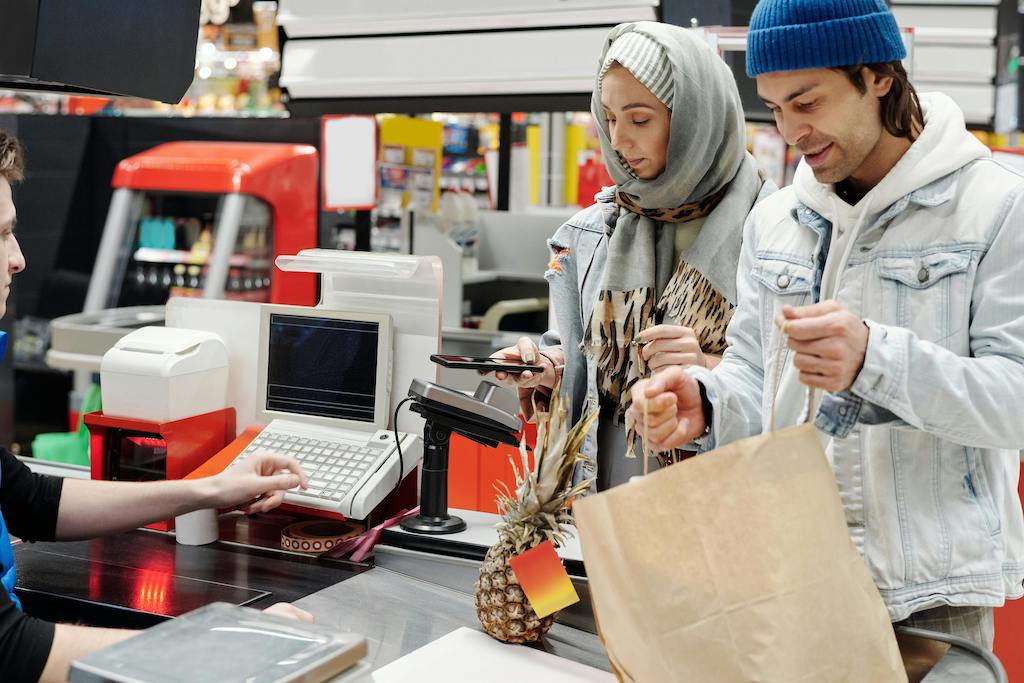
QuickStop Convenience Store offers a diverse range of products and services meticulously tailored to meet the basic and instant needs of our customers. Our product portfolio includes an assortment of snacks such as chips, candies, and chocolates, various types of beverages including sodas, juices, and energy drinks, and a selection of alcoholic drinks, where permitted by licensing laws. We stock basic grocery items like bread, milk, and eggs, alongside household necessities such as cleaning supplies, toiletries, and over-the-counter medications. For customers seeking immediate gratification, we provide ready-to-eat foods like hot dogs, sandwiches, and pastries. Additional services include lottery ticket sales, an ATM, bill payment options, mobile phone top-ups, and the availability of postage stamps, all catering to the convenience of our customers.
Our unique selling points center on providing a one-stop-shop experience with quick and seamless transactions. In contrast to larger supermarkets, QuickStop offers a more personal shopping encounter with the convenience of avoiding long lines, making it an ideal spot for quick in-and-out shopping. The competitive advantage lies in our extended hours of operation, catering to early birds and night owls alike when most other retailers are closed.
Currently, QuickStop is in the operational and expansion phase. We plan to continually assess and evolve our product offerings based on consumer trends and feedback, ensuring that we meet and exceed our customers' expectations. Future plans involve the potential introduction of organic and locally-sourced products to meet growing demand for health-oriented and community support-focused offerings. The development of a QuickStop branded line of products is also being considered to enhance customer loyalty and promote a unique store identity.
In terms of intellectual property, QuickStop utilizes trade dress protection for the distinctive design and appearance of our store interiors. Additionally, should we embark on creating our own branded products, we will pursue the necessary trademark registrations to protect our brand and proprietary items securely.
Our production process for proprietary ready-to-eat foods involves strict adherence to health and safety regulations, with all food items prepared fresh daily using quality ingredients. The process is designed for efficiency, ensuring that customers always have access to freshly made snacks and meals. Non-food items arrive pre-packaged from our variety of suppliers and are stocked promptly on our shelves for immediate sale.
Supplier relationships are a critical component of QuickStop’s operational model. We partner with a blend of local producers and national distributors to ensure a steady supply of inventory. FreshGoods Inc. is our primary supplier for perishable grocery items due to their commitment to freshness and prompt delivery services. SnackHaven Distributors is our key partner for snack products, offering a wide range and competitive wholesale pricing. We also work closely with several local bakeries and food producers to source our ready-to-eat items, ensuring that we support local businesses while providing our customers with the highest quality foods.
Overall, QuickStop Convenience Store’s current product and service offerings are aligned with market needs, with plans in place to expand and innovate as customer preferences evolve. Our relationship with suppliers ensures a consistent supply of high-quality products, and our store remains dedicated to maintaining the exceptional service that our customers have come to expect. The pursuit of distinctive products and the development of a proprietary line will further establish QuickStop as a leader in the convenience store sector.
QuickStop Convenience Store's marketing and sales strategies are devised to attract and retain a loyal customer base while maximizing revenues and market share within the Austin neighborhood and its surrounding areas. Our approach is multifaceted, encompassing targeted advertising, strategic sales initiatives, competitive pricing, and excellent customer service.
Our marketing strategy utilizes a combination of traditional and digital media to reach a broad spectrum of customers. We leverage the power of social media platforms such as Facebook and Instagram to create targeted campaigns that resonate with our demographic. Local search engine optimization (SEO) is crucial in ensuring that QuickStop appears prominently in search results when potential customers are looking for convenience store options nearby. Our presence on Google Maps and other navigational apps is optimized for maximum visibility, facilitating ease of access for mobile users on the go.
To amplify brand awareness, local community events sponsorship and participation are part of our outreach efforts. This not only enhances our reputation as a community-oriented business but also allows us to network directly with potential customers in less formal settings. In-store marketing employs clear signage for promotions and utilizes point-of-sale displays to encourage impulse buys. Seasonal promotions and discounts create buzz and increase foot traffic during peak shopping seasons.
Our sales strategy focuses on providing a seamless, quick transaction experience. This is supported by a well-trained sales team knowledgeable about the product range and able to rapidly assist customers in finding items, providing product information, and answering queries. Employees are trained to upsell when opportunity arises, such as suggesting complementary products. We also conduct periodic sales training to ensure our team is adept at handling various customer scenarios and up-to-date with new promotions.
The pricing strategy at QuickStop Convenience Store entails maintaining competitive pricing while offering exceptional value. We conduct regular competitive analyses to ensure our prices are in line with market expectations without compromising profitability. Promotional pricing and bundle deals are employed to increase sales volume, particularly for high-margin items or overstocked products.
Distribution channels include in-store purchasing as the primary channel, but we are exploring the introduction of an online ordering system with local delivery options, aligning with the trend towards e-commerce. This augmentation of our distribution strategy would appeal to tech-savvy customers and those with mobility constraints.
Promotion and advertising efforts are carefully planned throughout the year. We allocate budget for social media advertising, distribute flyers in local high traffic areas, and place ads in community publications. Strategic in-store promotional campaigns, such as "deal of the day" or "happy hour discounts," incentivize repeat visits. Moreover, we plan to introduce a loyalty program that rewards frequent customers with discounts and exclusive offers, encouraging regular patronage.
Customer service is paramount at QuickStop, and our policies reflect a commitment to exceed customer expectations. Staff are empowered to address and resolve customer complaints promptly and efficiently. We also implement a satisfaction guarantee on our house-prepared food items to ensure customers feel confident in their purchases. Feedback is actively solicited through in-store and online channels, demonstrating our dedication to listening to and acting upon the input of our clientele.
In sum, QuickStop Convenience Store’s comprehensive marketing and sales strategy, encompassing targeted advertising, competitive pricing, expanded distribution, robust promotions, and uncompromising customer service, is designed to foster growth by attracting new customers, retaining existing ones, and ensuring all receive the convenient and pleasant shopping experience they value.

The Operations Plan of QuickStop Convenience Store outlines the essential processes and systems in place that allow us to provide consistent, high-quality service and products to our customers. Our operational workflow is designed for efficiency, ensuring that daily business activities from opening to closing are executed effectively to meet customer demand.
Daily operations commence before sunrise with our opening team preparing the store for the day. This includes stocking shelves, ensuring cleanliness throughout the store, and preparing fresh food items for our ready-to-eat section. Throughout the day, clerks engage in customer service, manage checkouts, restock items as necessary, and maintain the overall appearance and safety of the store. Our closing team conducts end-of-day cleaning, accounts for inventory, and prepares the store for the following day.
The service delivery process is expedited by clearly defined roles and responsibilities. For food items, we follow a standard process that includes the selection of quality ingredients, adherence to food safety standards during preparation, packaging, and compliance with expiration management. Non-food items are received from suppliers, logged into our inventory system, and promptly placed on the shelves or designated storage areas.
Quality control measures are vital to our operation. We have established protocols to regularly inspect the quality of products received and monitor the freshness of items on the shelves. Food preparation areas are subject to daily sanitation audits, and employees must complete regular food handling and safety training. Customer feedback is also an essential part of our quality control as it provides firsthand insight into their experience and the quality they perceive.
Inventory management is streamlined through the use of an automated tracking system. This system enables us to monitor sales patterns and stock levels effectively, ensuring optimal inventory turnover and minimizing waste. Automatic reordering thresholds are set for high turnover items, and a bi-weekly review of inventory is conducted to adjust ordering according to demand fluctuations and seasonal variations.
Regarding supply chain management, QuickStop maintains strong relationships with a mix of local and national suppliers to ensure a continuous supply of products. We have negotiated terms that allow for flexible ordering, taking into consideration the lead times and delivery schedules to prevent stockouts. Our approach includes regular evaluations of supplier performance, ensuring that they meet our standards for timely delivery and product quality.
QuickStop’s facilities maintain a layout designed for convenience and speed of service, with a flow that naturally guides customers through the store. The equipment needs are continuously assessed, ensuring that all machinery, such as cash registers, refrigeration units, and food preparation equipment, are functioning efficiently. The store is equipped with surveillance systems for security purposes and positioned to provide coverage across the store, both indoors and outdoors. The facility also features storage areas strategically located to maintain organization and accessibility for employees restocking inventory.
Our operation plan exists as a living document, hyper-aware of the changing needs of the business and our customers. As QuickStop Convenience Store grows, we are prepared to upscale our operations, incorporate technology such as self-checkout machines, and refine our processes to ensure that we not only meet but exceed market demands and customer expectations. The agility and dedication embedded in our operations plan underscore our commitment to offering outstanding convenience, service, and product availability.
The Financial Projections section of QuickStop Convenience Store's business plan illustrates our expectation of financial performance over the next three to five years, outlining a detailed forecast that includes sales, profit and loss, cash flow, balance sheet, and a breakeven analysis. These projections are based on historical data, current market dynamics, competitive landscape, and projected growth of the convenience store industry.
Sales Forecast:
Over the next five years, we anticipate consistent growth in sales driven by the introduction of new product lines, the implementation of marketing strategies, and expanding customer base. Our sales forecast is as follows:
- Year 1: $500,000 - Year 2: $550,000 - Year 3: $600,000 - Year 4: $650,000 - Year 5: $700,000
This growth trajectory takes into account the increasing average transaction size and the expected rise in foot traffic due to local population growth and enhanced store visibility.
Profit and Loss Projection:
Our projected profit and loss accounts for direct costs of goods sold, operating expenses such as wages, utilities, insurance, marketing, and administrative expenses. Net profit is expected to improve as sales increase and optimized operational efficiencies take effect:
- Year 1: Net Profit of $50,000 - Year 2: Net Profit of $65,000 - Year 3: Net Profit of $80,000 - Year 4: Net Profit of $100,000 - Year 5: Net Profit of $120,000
The profit margin is anticipated to grow gradually as brand recognition strengthens and customer loyalty increases.
Cash Flow Projection:
Our cash flow projections indicate that the store will maintain adequate liquidity to sustain operations and fund growth initiatives. Initial capital investments and a business line of credit serve as buffers for managing inventory and covering any unforeseen costs. Positive net cash flows are projected by the first year end:
- Year 1: Net Cash Flow of $20,000 - Year 2: Net Cash Flow of $30,000 - Year 3: Net Cash Flow of $50,000 - Year 4: Net Cash Flow of $70,000 - Year 5: Net Cash Flow of $90,000
Balance Sheet Projection:
Assets are expected to grow along with the business, including increases in inventory and potential capital investments into store fixtures and technology. Liabilities, largely comprising accounts payable and the line of credit, will be managed prudently to maintain a healthy debt-to-equity ratio.
Break-even Analysis:
The breakeven point, where total revenue equals total expenses, is projected to occur within the first year of operation. We anticipate annual fixed costs to be approximately $450,000, with a forecasted average margin of about 30%. This margin will result in a breakeven sales level of around $480,000, which we expect to exceed within the first year, confirming the viability of QuickStop Convenience Store.
Financial Assumptions and Considerations:
The financial projections are based on several assumptions:
- A steady inflation rate not exceeding 2.5% per annum. - Consistent consumer spending within the convenience store sector. - No significant economic downturn affecting local consumer spending habits. - An increase in sales following the introduction of loyalty programs and marketing efforts.
Considerations also include potential market disruptions and competitive actions which may necessitate adjustments to our pricing or product offerings. Investment in marketing and store enhancements may increase expenses in the short term but are expected to generate long-term gains. Additionally, we will allocate funds to reserve for unforeseen events to ensure financial stability.
Together, these financial projections and underlying assumptions are employed to manage expectations, steer strategic decisions, and secure the financial health and growth prospects of QuickStop Convenience Store.

The success of QuickStop Convenience Store is contingent upon effective identification and management of potential risks that could impact our operations. Our risk analysis considers various uncertainties across market, operational, and financial domains, and outlines prudent measures to mitigate these risks and contingency plans to address potential adverse scenarios.
Identification of Potential Risks:
Market Risks:
- Economic Downturns: A decline in the economy can reduce consumer spending and affect sales volume. - Competition: New entrants or more aggressive strategies from existing competitors could erode our market share. - Technological Disruption: A failure to keep pace with retail technology could lead to a competitive disadvantage. - Changes in Consumer Preferences: An inability to adapt to changing tastes and preferences can result in lost sales.
Operational Risks:
- Supply Chain Disruptions: Unforeseen events such as natural disasters or global pandemics could interrupt our supply chain. - Employee Turnover: High levels of staff turnover can lead to increased costs and a decline in service quality. - Equipment Failure: Malfunctions or breakdowns can disrupt store operations. - Security Breaches: Theft, shoplifting, and cyberattacks pose risks to assets and information.
Financial Risks:
- Cash Flow Shortages: Insufficient liquidity could hamper the business’s ability to meet its obligations. - Cost Overruns: Unexpected increases in operational costs could affect profitability. - Interest Rate Fluctuations: Changes in interest rates could increase the cost of borrowing.
Risk Mitigation Strategies:
To mitigate market risks, we implement thorough market research to stay ahead of trends. We conduct regular competitive analysis to adjust our strategies promptly. Aggressive marketing and loyalty programs are used to retain existing customers and attract new ones.
Operational risks are circumvented through a robust supply chain featuring multiple suppliers to prevent bottlenecks, fostering a positive workplace to retain employees, maintaining equipment regularly, and employing stringent security measures, including surveillance systems and employee training on loss prevention.
Financial risks are mitigated by maintaining a strict budget, monitoring cash flow projections closely, and managing a cash reserve for emergencies. To buffer against interest rate changes, we seek to lock in favorable rates for any required loans.
Contingency Plans:
Our contingency plans are designed to ensure business continuity under various adverse scenarios:
- Economic Downturns: We plan to increase promotions and introduce budget-friendly product lines to maintain sales volume. - Competition: Continual service and product enhancements and diversification to stay competitive. - Supply Chain Disruptions: Alternative local suppliers and stockpiling of non-perishable high-turnover items will be used to manage supply risks. - Employee Turnover: Cross-training employees and maintaining an active pool of qualified candidates to fill vacancies rapidly.
Insurance and Legal Considerations:
Insurance protection forms a critical part of risk management. QuickStop Convenience Store maintains comprehensive insurance coverage, including general liability, property insurance, workers' compensation, business interruption insurance, and cyber liability insurance to protect against a range of potential threats. Additionally, we ensure all business activities comply with federal, state, and local laws—particularly those concerning licensing for food and alcohol sales, employment practices, and health and safety regulations.
In summary, by identifying risks across various spectrums and setting mitigation and contingency measures, QuickStop Convenience Store not only prepares to handle challenges but also positions itself to adapt and thrive even under difficult circumstances. Legal compliance and appropriate insurance safeguards further shield the business from unforeseen liabilities, fortifying its resilience in the face of risks.

More business plan templates

Gym business plan

Insurance agency business plan

Moving company business plan
How to Write a Business Plan for a Convenience Store
- Small Business
- Business Planning & Strategy
- Write a Business Plan
- ')" data-event="social share" data-info="Pinterest" aria-label="Share on Pinterest">
- ')" data-event="social share" data-info="Reddit" aria-label="Share on Reddit">
- ')" data-event="social share" data-info="Flipboard" aria-label="Share on Flipboard">
Feasibility Analysis for Pet Store
How to write a restaurant proposal, how to prepare a business plan for a window cleaning business.
- How to Start and Run a Successful Bakery
- How to Write a Business Plan Outline
The U.S. Bureau of Labor Statistics reported about 25,900 general convenience stores in operation during 2008. These convenience stores range from small, limited inventory stores to large, high-volume locations. This fair amount of competition makes the convenience store business plan a necessity to ensure the store’s longevity and competitiveness.
Create the general business description for your convenience store. List the registered name and business structure of your business, such as sole proprietorship or Limited Liability Corporation. Use this section to summarize the convenience store’s financial outlook. Include a brief breakdown of the startup costs and equity needed for your store.
Identify the products and services that your convenience store will provide. Include a description of its general merchandise, along with any additional services that the convenience store will provide, such as lottery sales and deli items. Break the items into categories and detail each service.
Research the convenience store industry in your area as the information will assist you in completing a market analysis. Use resources such as Convenience Store News, the U.S. Bureau of Labor Statistics, U.S. Census and the Texas Grocery & Convenience Association for information. Seek assistance from the local U.S. Small Business Administration, if you encounter research difficulties.
Begin the marketing analysis with an overview of the industry’s economic outlook. Explain the current and forecast state of your area’s convenience store industry, the overall economic climate of the area and the target market, or customer profile, of the store’s intended customers. Follow the overview with a detailed analysis of the convenience store industry, your convenience store’s target market.
Include a competitive analysis. Display the number of convenience stores in your store’s area that will compete for the customer’s business. Identify your store’s strengths, weaknesses, opportunities and threats. Explain the strategies your business will use to compete with the competition while overcoming the identified weaknesses and threats.
Develop a marketing plan that will create maximum visibility for your convenience store. Identify the signage you will use to attract customers. Explain how your store will create and maintain regular customers, as well as walk-in traffic. Explain the pricing that your convenience store will use for its products and services. Include a condensed products and services list in this section.
Explain the convenience store’s organizational structure. Include an organizational chart for quick reference. Be sure to identify whether the staff are full-time or part-time employees. Include the salary information for each position, along with the costs for any benefits or training sessions, such as lottery or deli training.
Provide details on your convenience store’s location and operations. Give an exact address if the location has already been secured. List the store’s hours of operations, including weekend and holiday hours.
List the fixtures, equipment and furniture the store will need to operate efficiently, including cash registers, coolers and shelving. Identify the legal requirements that your store must meet and list them, along with their costs. Include requirements such as zoning laws, licensing and vending requirements, taxes and building lease information. List your supplier and merchandising information. Include each supplier’s costs, delivery fees and turnaround times.
Complete a profit and loss statement, cash flow analysis, balance sheet and personal financial statement. Use forecast and projected figures if your store has yet to open for business. Make reasonable and attainable assumptions. Include easy-to-read charts of your projections for quick reference.
Complete the executive summary and place it at the front of the business plan. Use this section to summarize the business plan’s information. Limit the executive summary to no more than two pages. Include a summary of the convenience store’s management team, mission statement and forecast sales goals.
- MasterCard International: The Plan
- The Finance Resource: Free Convenience Store Business Plan
- Valuation Resources: Convenience Stores
- Texas Grocery & Convenience Association
- Texas State Historical Association: National Convenience Stores
Writing professionally since 2004, Charmayne Smith focuses on corporate materials such as training manuals, business plans, grant applications and technical manuals. Smith's articles have appeared in the "Houston Chronicle" and on various websites, drawing on her extensive experience in corporate management and property/casualty insurance.
Related Articles
How to write a day spa business plan, how to write a business plan for a restaurant or food business, how to write a clothing boutique business plan, how to create a business plan & where should the executive summary be located, how to write a farm business plan, how to create a food service business plan, a checklist for opening a store, how to write a business plan for an existing business, how to write a startup airline business plan, most popular.
- 1 How to Write a Day Spa Business Plan
- 2 How to Write a Business Plan for a Restaurant or Food Business
- 3 How to Write a Clothing Boutique Business Plan
- 4 How to Create a Business Plan & Where Should the Executive Summary Be Located?

Convenience Store Business Plan Template
- Convenience Store Business Plan Summary
Putting together a business plan for your convenience store business is a worthwhile endeavor. If you follow our template, by the time you are done, you will truly be an expert. You will really understand the convenience store business, your competition and your customers. You will have developed a marketing plan and will really understand what it takes to launch and grow a successful convenience store business.
Finish Your Convenience Store Business Plan in 1 Day!
Don’t you wish there was a faster, easier way to finish your convenience store business plan?
With Growthink’s Ultimate Business Plan Template you can finish your plan in just 8 hours or less!
Click here to finish your convenience store business plan today.
OR, Let Us Develop Your Plan For You
Since 1999, Growthink has developed business plans for thousands of companies who have gone on to achieve tremendous success.
Click here to see how our professional business plan consulting services can create your business plan for you.
CONVENIENCE STORE BUSINESS PLAN OUTLINE
- Convenience Store Business Plan Home
- 1. Executive Summary
- 2. Company Overview
- 3. Industry Analysis
- 4. Customer Analysis
- 5. Competitive Analysis
- 6. Marketing Plan
- 7. Operations Plan
- 8. Management Team
- 9. Financial Plan
- 10. Appendix
Other Helpful Business Plan Articles & Templates


Convenience Store Business Plan [Sample Template]
By: Author Tony Martins Ajaero
Home » Business Plans » Wholesale & Retail
Are you about starting a convenience store? If YES, here is a complete sample convenience store business plan template & feasibility study you can use for FREE .
There are some folks who may not have the financial muscle to buy things in bulk. This is exactly one of the reasons why retail stores are in existence. This is one business that people have continued to delve into it. It is also true that the needs of the people are being met on a daily basis.
Also, it is no doubt that there is a good return on investment in this trade. Here is a business plan template that you may want to use to tweak yours;
A Sample Convenience Store Business Plan Template
Industry overview.
One of the easy to enter and thriving business line that an entrepreneur how is looking towards starting a business of his or her own is to go into retailing business. The retail business is indeed a wide business of which convenience store business falls under.
Simply put, a convenience store is usually a small store that stocks a wide range of everyday items that are used in households.
It is common to find commodities such as groceries, soft drinks, snack foods, candy, toiletries, tobacco products, and even call cards, newspapers and magazines et al. Some convenience stores even go as far as securing license to retail alcoholic drinks such as liquors, spirits, beers and wines et al while some secure license to operate a mobile money center or a money transfer center.
Starting a convenience store business is just like starting any other retailing business- it will require start – up capital(money), planning (feasibility studies, market survey, budgeting), and of course time. Convenience stores have become an essential part of our everyday lives.
No doubt, the items that are sold in convenience stores are in demand all over the world, making them a good and profitable business to start.
If you are considering starting this type of business, then you must hunt for the right location; with the right location, items in stock, and good pricing structure, you can start making profit as soon as possible after opening your convenience store.
Basically, a convenience store does not necessarily need to be part of a gas (petrol) station chain of business. As a matter of fact, it is common to find convenience stores located alongside a busy road, in a busy community, in an urban area, or near a railway or railroad station or other transport hub.
In some countries like the united states, United Kingdom and France et al, convenience stores are known to be opened 24 hours a day and 7 days a week.
The convenience store industry is indeed a very large industry and pretty much thriving in all the parts of the world. Statistics has it that in the United States of America alone, there are about 40,849 legally registered convenience stores responsible for employing about 140,238 employees and the industry rakes in a whooping sum of $28bn annually.
It is important to state that, the top convenience store chains in the U.S. account for just less than 30.0 percent of sales, and no single operator has control over the pricing trend , advertising trend, distribution model or customer loyalty et al in the Industry.
Over the years, convenience stores have experienced tremendous growth in all cities in the United States of America. In response to the ever growing demand for convenience and time saving options, convenience store owners have opened additional stores thereby creating chains of stores across different cities.
They are always ready to expanded into new markets and of course adapt to the changing trend in consumer tastes and increase sales.
Over and above, the convenience store industry is a profitable industry and it is open for any aspiring entrepreneur to come in and establish his or her business; you can chose to start on a small scale in a street corner like the average mom and pop business or you can chose to start on a large scale with several outlets (chains of stores) in key cities.
Executive Summary
Bee & Jay Convenience Store™ is a neighborhood convenience store that will be located in a centralized area between a residential neighborhood and a busy business district in downtown Los Angeles, California. We conducted our feasibility studies and market survey and we came to the conclusion that Los Angeles is the right location for us to launch our convenience store.
We are in the convenience store business to make profits at the same to give our customers value for their money and time whenever they patronize us. We want to give people who patronize our convenience store the opportunity to choose from a wide range of both locally and imported quality items from different manufacturing brands at highly affordable prices
We are aware that there are several small convenience stores and chains of convenience stores all around Los Angeles, which is why we spent time and resources to conduct our feasibility studies and market survey so as to enable us locate the business in an area that will support the growth of the business and also for us to be able offer much more than our competitors will be offering.
We ensured that our facility is easy to locate and our outlet is well secured and equipped with the various payment of options available in the U.S. Beyond retailing quality and affordable items in our convenience store, will ensure that our customer care is second to none in the whole of Los Angeles – California.
We know that our customers are the reason why we are in business which is why we will go the extra mile to get them satisfied and get what they are looking for whenever they visit our convenience store and also to become our loyal customers and ambassadors in and around our neighborhood.
Bee & Jay Convenience Store™ will ensure that all our customers are given first class treatment whenever they visit our store. We have a CRM software that will enable us manage a one on one relationship with our customers no matter how large the numbers of our customer base may grow to.
We will ensure that we get our customers involved in the selection of brands that will be on our racks and also when making some business decisions that will directly or indirectly affect them.
Bee & Jay Convenience Store™ is owned by Mrs. Bella Brown – Jacobson and family. She has successfully managed several retailing business both in Los Angeles and New York prior to opening her own convenience store. She will run the business alongside her immediate family members.
Our Products
Bee & Jay Convenience Store™ is going to operate a standard and registered neighborhood convenience store that will retail a wide range of items from both locally manufacturers and international manufacturers just like any other registered and standard convenience store in the United States and in any part of the world.
Aside from retailing items, we will secure license to carry out money transfer and mobile money services. We are in the convenience store business to make profits and give our customers value for their money. These are some of the products that we will retail in our convenience store;
- Soft drinks
- Toiletries,
- Newspapers and magazines
- Tobacco products
- Food service
- Packaged beverages
- Candy and snacks
- Non – alcoholic beverages
- Other Related Items and services (Mobile money outlets and money transfer services)
Our Mission and Vision Statement
- Our vision is to establish a one stop convenience store in Los Angeles – California and in other cities in the United States of America.
- Our mission is to establish a convenience store business that will make available a wide range of household needs (items) from top brands at affordable prices to the residence of Los Angeles – California and other cities in the United States of America where we intend opening our outlets and selling our franchise.
Our Business Structure
Bee & Jay Convenience Store™ do not intend to start a convenience business like the usual mom and pop business around the street corner; our intention of starting a convenience store business is to build a standard convenience store that will be a one – stop shop for household needs which is why we will ensure that we put the right structure in place that will support the kind of growth that we have in mind while setting up the business.
We will ensure that we only hire people who are qualified, honest, customer centric and are ready to work to help us build a prosperous business that will benefit all the stake holders (the owners, workforce, and customers).
As a matter of fact, profit-sharing arrangement will be made available to all our management staff and it will be based on their performance for a period of five years or more especially when we start selling our franchise or running chains of convenience stores.
In view of that, we have decided to hire qualified and competent hands to occupy the following positions;
- Chief Executive Officer (Owner)
- Store Manager
Merchandize Manager
Sales and Marketing Manager
Information Technologist
- Accountants / Cashiers
Job Roles and Responsibilities
Chief Executive Officer – CEO (Owner):
- Increases management’s effectiveness by recruiting, selecting, orienting, training, coaching, counseling, and disciplining managers; communicating values, strategies, and objectives; assigning accountabilities; planning, monitoring, and appraising job results; developing incentives; developing a climate for offering information and opinions; providing educational opportunities.
- Creating, communicating, and implementing the organization’s vision, mission, and overall direction – i.e. leading the development and implementation of the overall organization’s strategy.
- Responsible for fixing prices and signing business deals
- Responsible for providing direction for the business
- Creates, communicates, and implements the organization’s vision, mission, and overall direction – i.e. leading the development and implementation of the overall organization’s strategy.
- Responsible for signing checks and documents on behalf of the company
- Evaluates the success of the organization
Store Manager:
- Responsible for managing the daily activities in the store
- Ensure that the store facility is in tip top shape and conducive enough to welcome customers
- Maintains office supplies by checking stocks; placing and expediting orders; evaluating new products.
- Ensures operation of equipment by completing preventive maintenance requirements; calling for repairs.
- Updates job knowledge by participating in educational opportunities; reading professional publications; maintaining personal networks; participating in professional organizations.
- Enhances department and organization reputation by accepting ownership for accomplishing new and different requests; exploring opportunities to add value to job accomplishments.
- Defines job positions for recruitment and managing interviewing process
- Carries out staff induction for new team members
- Responsible for training, evaluation and assessment of employees
- Interfaces with third – party providers (vendors)
- Control the sales floor inventory
- Ensures that goods and products are properly arranged
- Supervises the entire sales staff and workforce
- Any other duty as assigned by the CEO
- Manage vendor relations, market visits, and the ongoing education and development of the organizations’ buying teams
- Help to ensure consistent quality of liquors, wines and beers on our rack
- Responsible for the purchase of wines, beers and liquors for the organizations
- Responsible for planning sales, monitoring inventory, selecting the merchandise, and writing and pricing orders to vendors
- Ensures that the organization operates within stipulated budget.
- Manage external research and coordinate all the internal sources of information to retain the organizations’ best customers and attract new ones
- Model demographic information and analyze the volumes of transactional data generated by customer purchases
- Identify, prioritize, and reach out to new partners, and business opportunities et al
- Responsible for supervising implementation, advocate for the customer’s needs, and communicate with clients
- Develops, executes and evaluates new plans for expanding increase sales
- Documents all customer contact and information
- Represents the company in strategic meetings
- Helps to increase sales and growth for the company
- Manage the organization website
- Handles ecommerce aspect of the business
- Responsible for installing and maintenance of computer software and hardware for the organization
- Manage logistics and supply chain software, Web servers, e-commerce software and POS (point of sale) systems
- Manages the organization’s CCTV
- Handles any other technological and IT related duties.
Accountant / Cashier
- Responsible for preparing financial reports, budgets, and financial statements for the organization
- Provides managements with financial analyses, development budgets, and accounting reports; analyzes financial feasibility for the most complex proposed projects; conducts market research to forecast trends and business conditions.
- Responsible for financial forecasting and risks analysis.
- Performs cash management, general ledger accounting, and financial reporting
- Responsible for developing and managing financial systems and policies
- Responsible for administering payrolls
- Ensuring compliance with taxation legislation
- Handles all financial transactions for the organization
- Serves as internal auditor for the organization
Client Service Executive
- Ensures that all contacts with customer (e-mail, walk-In center, SMS or phone) provides the client with a personalized customer service experience of the highest level
- Through interaction with customers on the phone, uses every opportunity to build client’s interest in the company’s products and services
- Manages administrative duties assigned by the store manager in an effective and timely manner
- Consistently stays abreast of any new information on Bee & Jay Convenience Store™ products, promotional campaigns etc. to ensure accurate and helpful information is supplied to our customers when they make enquiries
- Responsible for cleaning the store facility at all times
- Ensure that toiletries and supplies don’t run out of stock
- Cleans both the interior and exterior of the store facility
- Any other duty as assigned by the restaurant manager.
SWOT Analysis
Our intention of starting just one outlet of our convenience store in Los Angeles – California is to test run the business for a period of 2 to 4 years to know if we will invest more money, expand the business and then open other chains of convenience stores all over California and perhaps also sell franchise through the United States of America and Canada.
We are quite aware that there are several convenience stores all over Los Angeles and even in the same location where we intend locating ours, which is why we are following the due process of establishing a business.
We know that if a proper SWOT analysis is conducted for our business, we will be able to position our business to maximize our strength, leverage on the opportunities that will be available to us, mitigate our risks and be welled equipped to confront our threats.
Bee & Jay Convenience Store™ employed the services of an expert HR and Business Analyst with bias in retailing to help us conduct a thorough SWOT analysis and to help us create a Business model that will help us achieve our business goals and objectives. This is the summary of the SWOT analysis that was conducted for Bee & Jay Convenience Store™;
Our location, the business model we will be operating on (one stop physical store and online store), varieties of payment options, wide range of household needs from local and international manufacturing brand and our excellent customer service culture will definitely count as a strong strength for Bee & Jay Convenience Store™.
A major weakness that may count against us is the fact that we are a new convenience store in Los Angeles and we don’t have the financial capacity to engage in the kind of publicity that we intend giving the business.
- Opportunities:
The fact that we are going to be operating our convenience store in one of the busiest district in Los Angeles – California provides us with unlimited opportunities to sell our items to a large number of people.
We have been able to conduct thorough feasibility studies and market survey and we know what our potential customers / residence within the location where our convenience store will be located will be looking for when they visit our convenience store. We are well positioned to take on the opportunities that will come our way.
We are quite aware that just like any other business, one of the major threats that we are likely going to face is economic downturn. It is a fact that economic downturn affects purchasing power. Another threat that may likely confront us is the arrival of a new convenience store in same location where ours is located or even the arrival of a petrol / gas station and shopping malls et al.
MARKET ANALYSIS
- Market Trends
Unlike in the days of old when it was trendy to find convenience stores attached to a petrol / gas station, in recent time a convenience store does not necessarily need to be part of a gas (petrol) station chain of business.
As a matter of fact, it is common to find convenience stores located alongside a busy road, in a busy community, in an urban area, or near a railway or railroad station or other transport hub. In some countries like the united states, United Kingdom and France et al, convenience stores are known to be opened 24 hours a day and 7 days a week.
If you keep tabs on the convenience store business and retailing business generally, you would generally have noticed that It is now a common phenomenon for retail outlets to leverage on technology to effectively predict consumer demand patterns and to strategically position their store to meet their needs; in essence, the use of technology help retailers to maximize supply chain efficiencies.
No doubt data collected from customers goes a long way to help retail stores serve them better. Another common trend in the retailing industry is the pricing system.
Aside from having varieties and quality of the items in a convenience store, one of the easiest ways for players in this line of business to sell the items on their racks as fast as they can and keep re – stocking is to ensure that the prices of their items are a bit lower than what is obtainable in elsewhere. For example, it is common to see items with prices in this format; $3.99, $99 and $199 et al as against $4.00, $100 and $200.
Our Target Market
When it comes to selling items that are found in convenience stores, there is indeed a wide range of available customers. In essence, our target market can’t be restricted to just a group of people, but all those who resides in the locations where we intend opening our convenience store.
One thing is certain, we will ensure that we only retail quality and affordable items (household needs) in our convenience store. In view of that, we have positioned our convenience store to service the residence of Los Angeles – California and every other location where our convenience stores will be located all over the United States of America and Canada.
We have conducted our market research and we have ideas of what our target market would be expecting from us. We are in business to items (retail household needs) to the following groups of people;
- Bachelors and Spinsters
- Corporate Executives
- Business People
- About to wed couples
- Expectant Mothers
- Sports Men and Women
Our competitive advantage
Bee & Jay Convenience Store™ is launching a standard and registered convenience store that will indeed become the preferred choice of residence of Los Angeles – California and in every other locations where our chains of convenience stores will be opened.
Our convenience store is located in a corner piece property on a busy road directly opposite one of the largest residential estates in Los Angeles and few meters away from a busy business district. We have enough parking space that can accommodate well over 25 cars per time.
One thing is certain, we will ensure that we have a wide range of quality and affordable items (household needs) available in our store at all times. It will be difficult for customers to visit our store and not see the items that they are looking for.
One of our business goals is to make Bee & Jay Convenience Store™ a one stop alcohol shop. Our excellent highly experienced and qualified management, customer service culture, online store, various payment options and highly secured facility with enough packing space will also serve as a competitive advantage for us.
SALES AND MARKETING STRATEGY
- Sources of Income
Bee & Jay Convenience Store™ is established with the aim of maximizing profits in the convenience store and retailing industry and we are going to go all the way to ensure that we do all it takes to sell a wide range of products to a wide range of customers.
Bee & Jay Convenience Store™ will generate income by retailing the following items (household needs);
- Other Related Items and services (mobile money shop and money transfer services et al)
Sales Forecast
It is important to state that our sales forecast is based on the data gathered during our feasibility study, market survey and also some of the assumptions readily available on the field. One thing is common with convenience store business, the larger a convenience store (including varieties of quality items at affordable prices), the larger the numbers of customers that will patronize them.
Although we may not be as large as the biggest convenience stores or retailers in the United States, but we will ensure that within our capacity we make available a wide range of items (household needs) et al from different brands both local and foreign manufacturers in our store.
Below are the sales projections that we were able to come up with for the first three years of operations;
- First Year-: $75,000
- Second Year-: $250,000
- Third Year-: $700,000
N.B : This projection is done based on what is obtainable in the industry and with the assumption that there won’t be any major economic meltdown and the arrival of a competitor in same location as ours within the period stated above. Please note that the above projection might be lower and at the same time it might be higher.
- Marketing Strategy and Sales Strategy
Before choosing a location for Bee & Jay Convenience Store™, we conduct a thorough market survey and feasibility studies in order for us to be able to be able to penetrate the available market and become the preferred choice for residence of Los Angeles – California and in every other cities where our chains of convenience stores will be opened.
We have detailed information and data that we were able to utilize to structure our business to attract the numbers of customers we want to attract per time.
We hired experts who have good understanding of the convenience store / retailing industry to help us develop marketing strategies that will help us achieve our business goal of winning a larger percentage of the available market in Los Angeles – California.
In other to continue to be in business and grow, we must continue to sell the products that are available in our store which is why we will go all out to empower or sales and marketing team to deliver. In summary, Bee & Jay Convenience Store™ will adopt the following sales and marketing approach to win customers over;
- Introduce our convenience store by sending introductory letters to residence, business owners and organizations in and around Los Angeles – California
- Open our convenience store with an open house party for people in the community
- Advertise our business in community based newspapers, local TV and radio stations
- List our business on yellow pages ads (local directories)
- Leverage on the internet to promote our business
- Engage in direct marketing
- Encourage word of mouth marketing (referrals) from satisfied and loyal customers
Publicity and Advertising Strategy
Despite the fact that our convenience store is well located, we will still go ahead to intensify publicity for the business. We are going to explore all available means to promote our convenience store.
Bee & Jay Convenience Store™ has a long term plan of opening chains of convenience stores in various locations all around the United States of America and Canada which is why we will deliberately build our brand to be well accepted in Los Angeles – California before venturing out.
As a matter of fact, our publicity and advertising strategy is not solely for winning customers over but to effectively communicate our brand to the public. Here are the platforms we intend leveraging on to promote and advertise Bee & Jay Convenience Store™;
- Place adverts on both print (community based newspapers and magazines) and electronic media platforms
- Sponsor relevant community programs
- Leverage on the internet and social media platforms like; Instagram, Facebook , twitter, et al to promote our brand
- Install our Bill Boards on strategic locations all around Los Angeles – California
- Engage in road show from time to time in and around the location of convenience store
- Distribute our fliers and handbills in target areas in the community where our convenience store is located
- Position our Flexi Banners at strategic positions in the location where our convenience store is located.
Our Pricing Strategy
Pricing is one of the key factors that gives leverage to convenience stores and retailing business generally, it is normal for consumers to go to places (convenience stores) where they can get items / household goods at cheaper price which is why big player in the convenience store / retail industry like attract loads of consumers.
We know we don’t have the capacity to compete with other bigger retailers and malls, but we will ensure that the prices of all the items that are available in our liquor store are competitive with what is obtainable amongst liquor retail stores within our level and in our location.
- Payment Options
At Bee & Jay Convenience Store™, our payment policy is all inclusive because we are quite aware that different people prefer different payment options as it suits them. Here are the payment options that will be available in every of our outlets;
- Payment by cash
- Payment via Point of Sale (POS) Machine
- Payment via online bank transfer (online payment portal)
- Payment via Mobile money
In view of the above, we have chosen banking platforms that will help us achieve our payment plans without any itches.
Startup Expenditure (Budget)
When it comes to starting a convenience store business the major areas that you look towards spending the bulk of your cash is in of course renting or leasing a standard store facility. Aside from that, you are not expected to spend much except for paying of your employees and the stocking of your store.
This is the key areas where we will spend our start – up capital;
- The Total Fee for Registering the Business in California – $750.
- Legal expenses for obtaining licenses and permits as well as the accounting services (software, P.O.S machines and other software) – $1,300.
- Marketing promotion expenses for the grand opening of Pappy J & Sons Liquor Store in the amount of $3,500 and as well as flyer printing (2,000 flyers at $0.04 per copy) for the total amount of – $3,580.
- Cost for hiring Consultant – $2,500.
- Insurance (general liability, workers’ compensation and property casualty) coverage at a total premium – $2,400.
- Cost for payment of rent for 12 month at $1.76 per square feet in the total amount of $105,600.
- Cost for Shop remodeling (construction of racks and shelves) – $20,000.
- Other start-up expenses including stationery ($500) and phone and utility deposits – ($2,500).
- Operational cost for the first 3 months (salaries of employees, payments of bills et al) – $60,000
- The cost for Start-up inventory (stocking with a wide range of both locally and imported quality items from different manufacturing brands) – $70,000
- Storage hardware (bins, rack, shelves, food case) – $3,720
- The cost for counter area equipment (counter top, sink, ice machine, etc.) – $9,500
- Cost for store equipment (cash register, security, ventilation, signage) – $13,750
- Cost of purchase and installation of CCTVs – $5,000
- The cost for the purchase of furniture and gadgets (Computers, Printers, Telephone, TVs, Sound System, tables and chairs et al) – $4,000.
- The cost of Launching a Website – $600
- The cost for our opening party – $7,000
- Miscellaneous – $10,000
We would need an estimate of $250,000 to successfully set up our convenience store in Los Angeles – California. Please note that this amount includes the salaries of all the staff for the first month of operation.
Generating Funding / Startup Capital for Bee & Jay Convenience Store™
Bee & Jay Convenience Store™, is a family business that is solely owned and financed by Mrs. Bella Brown – Jacobson and family. They do not intend to welcome any external business partner which is why he has decided to restrict the sourcing of the start – up capital to 3 major sources.
These are the areas we intend generating our start – up capital;
- Generate part of the start – up capital from personal savings
- Source for soft loans from family members and friends
- Apply for loan from my Bank
N.B: We have been able to generate about $100,000 (Personal savings $75,000 and soft loan from family members $25,000) and we are at the final stages of obtaining a loan facility of $150,000 from our bank. All the papers and document have been signed and submitted, the loan has been approved and any moment from now our account will be credited with the amount.
Sustainability and Expansion Strategy
The future of a business lies in the numbers of loyal customers that they have the capacity and competence of the employees, their investment strategy and the business structure. If any of these factors is missing from a business (company), then it won’t be too long before the business close shop.
Bee & Jay Convenience Store™ will ensure that all the factors listed above are reinforced on a regular basis and also we will engage in continuous capacity building of our workforce. As a matter of fact, profit-sharing arrangement will be made available to all our management staff and it will be based on their performance for a period of three years or more.
We will make sure that the right foundation, structures and processes are put in place to ensure that staff welfare is well taken of. Our company’s corporate culture is designed to drive our business to greater heights and training and re – training of our workforce is at the top burner. We have the plans of
Check List / Milestone
- Business Name Availability Check:>Completed
- Business Registration: Completed
- Opening of Corporate Bank Accounts: Completed
- Securing Point of Sales (POS) Machines: Completed
- Opening Mobile Money Accounts: Completed
- Opening Online Payment Platforms: Completed
- Application and Obtaining Tax Payer’s ID: In Progress
- Application for business license and permit: Completed
- Purchase of Insurance for the Business: Completed
- Leasing of facility and remodeling the shop: In Progress
- Conducting Feasibility Studies: Completed
- Generating capital from family members: Completed
- Applications for Loan from the bank: In Progress
- Writing of Business Plan: Completed
- Drafting of Employee’s Handbook: Completed
- Drafting of Contract Documents and other relevant Legal Documents: In Progress
- Design of The Company’s Logo: Completed
- Graphic Designs and Printing of Packaging Marketing / Promotional Materials: In Progress
- Recruitment of employees: In Progress
- Purchase of the Needed furniture, racks, shelves, computers, electronic appliances, office appliances and CCTV: In progress
- Creating Official Website for the Company: In Progress
- Creating Awareness for the business both online and around the community: In Progress
- Health and Safety and Fire Safety Arrangement (License): Secured
- Opening party / launching party planning: In Progress
- Compilation of our list of products that will be available in our convenience store: Completed
- Establishing business relationship with vendors – wholesale suppliers of various brands of products that we intend retailing: In Progress
Related Posts:
- Mini Grocery Store Business Plan [Sample Template]
- Toy Store Business Plan [Sample Template]
- Fruit and Vegetable Store Business Plan [Sample Template]
- Amway Business Plan [Sample Template]
- Head Shop Business Plan [Sample Template]

Convenience Store Business Plan Template [Updated 2024]
Convenience Store Business Plan
If you want to start a convenience store or expand your current business, you need a business plan.
The following sample business plan and template gives you the key elements to include in a winning business plan. It can be used to create a convenience store start up business plan or a plan to grow your existing business.
You can download our Business Plan Template (including a full, customizable financial model) to your computer here.
Below are links to each of the key sections of a successful convenience store business plan. Once you create your plan, download it to PDF to show banks and investors.
I. Executive Summary II. Company Overview III. Industry Analysis IV. Customer Analysis V. Competitive Analysis VI. Marketing Plan VII. Operations Plan VIII. Management Team IX. Financial Plan
Comments are closed.
Convenience Store Business Plan Home I. Executive Summary II. Company Overview III. Industry Analysis IV. Customer Analysis V. Competitive Analysis VI. Marketing Plan VII. Operations Plan VIII. Management Team IX. Financial Plan


Convenience Store Business Plan
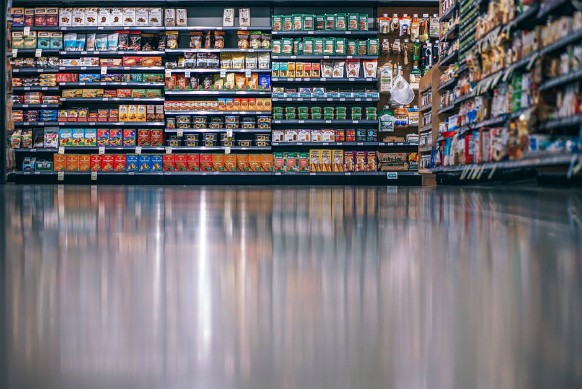
Planning to start your own convenience store business? You need a business plan first. Gone are the days when you can just start a business at any time you want as long as you have cash. The market has become too saturated that businesses come and go at a very fast rate. Investors are now very reluctant to pour their hard-earned investments in short-term deals as they are fearful they might not get enough earnings.
- Food Truck Business Plan Examples – PDF
- Bookkeeping Business Plan Examples – PDF
That is the reason why business plans are important when you start a business. It provides investors as well as other stakeholders necessary information about the company and its numerous activities. To help you create your own convenience store business plan, here are some examples (in PDF) you can use as reference. They are easy to download and they are all free as well.
Convenience Store Business Plan Example
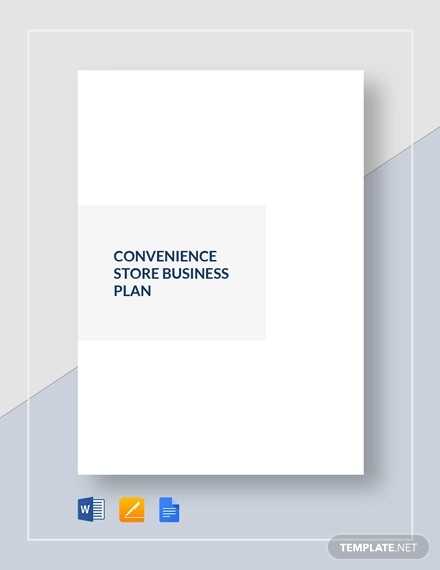
- Google Docs
Size: A4, US
Summary Convenience Store Business Plan Example
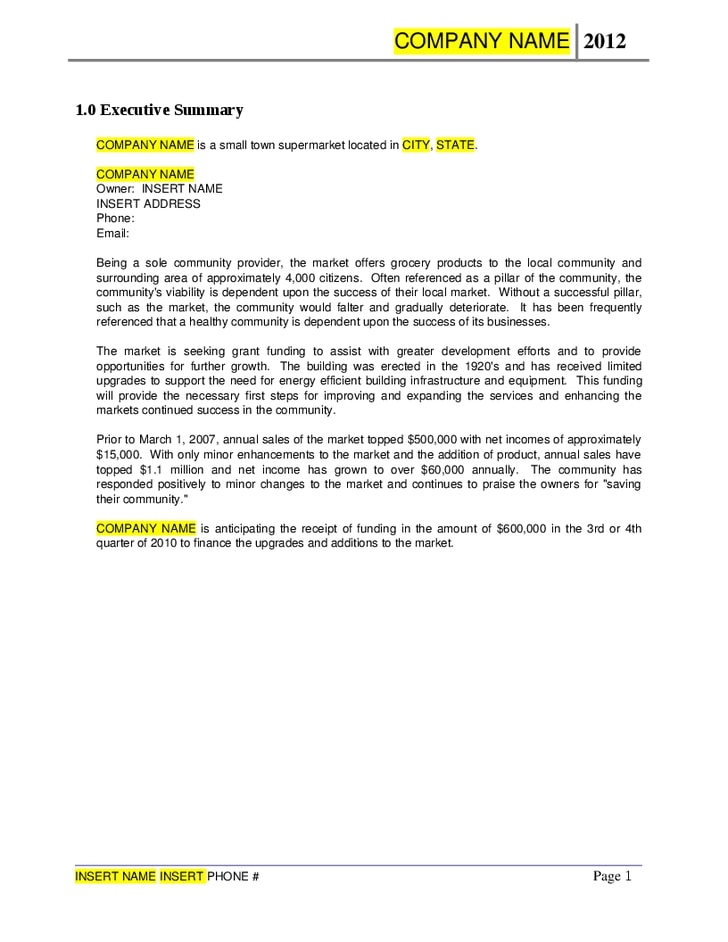
Size: 75 KB
Easy Convenience Store Business Plan Example
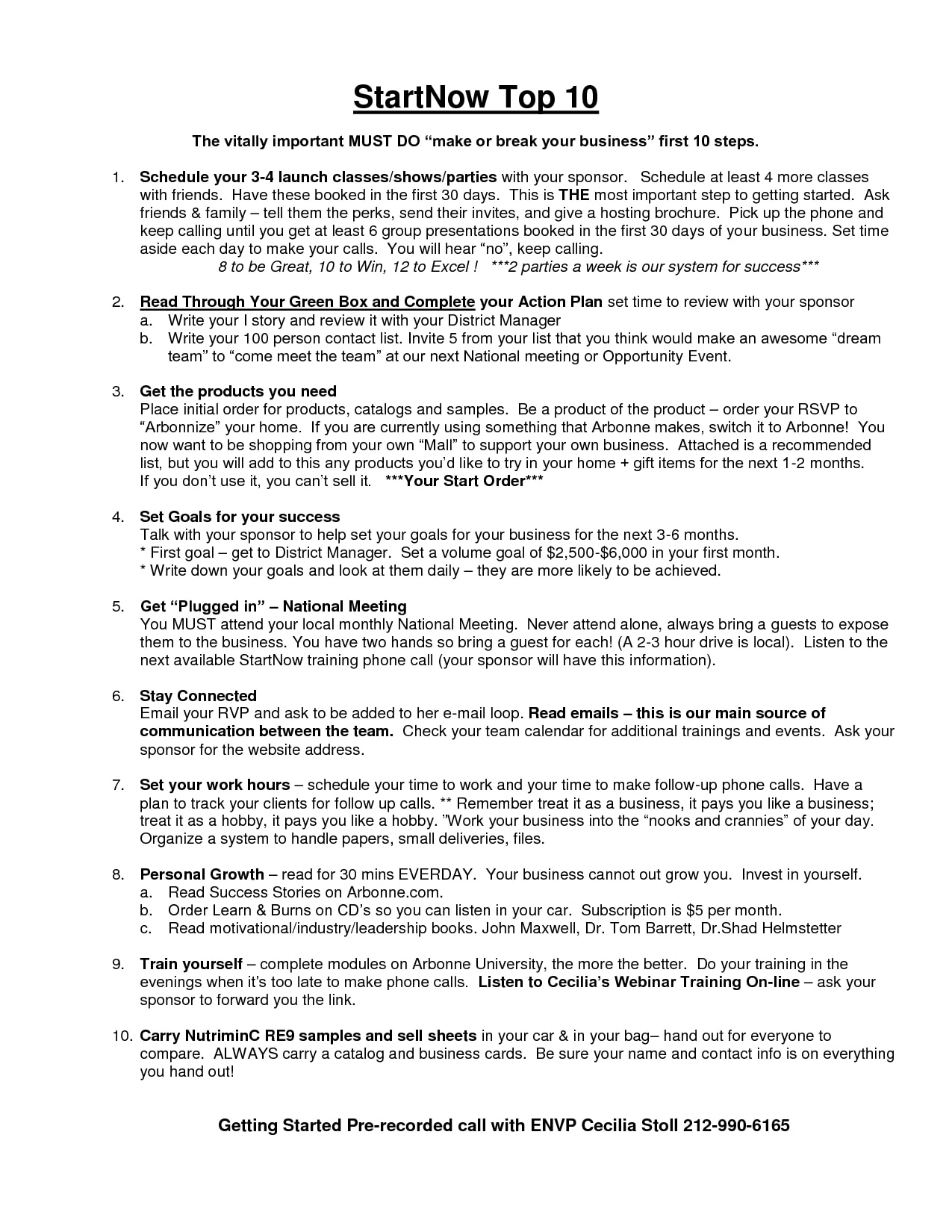
Size: 344 KB
Market Data Convenience Store Business Plan Example
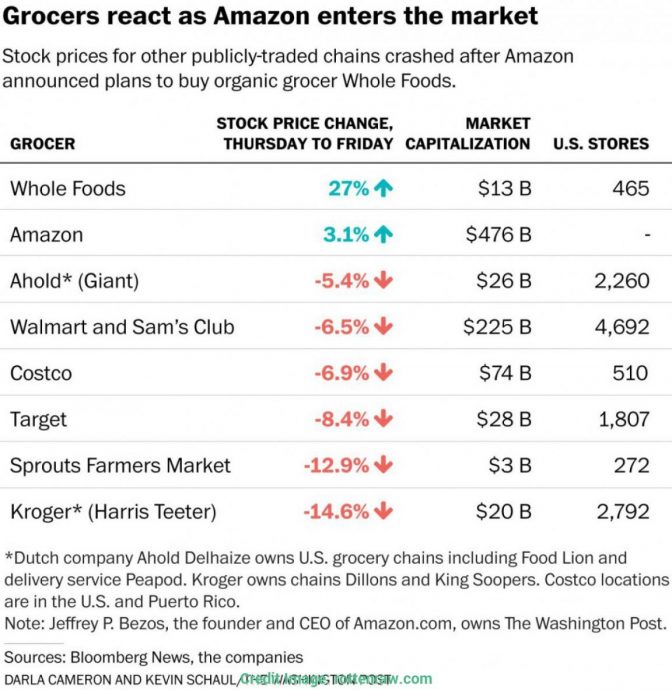
Size: 77 KB
Grocery Convenience Store Business Plan Example
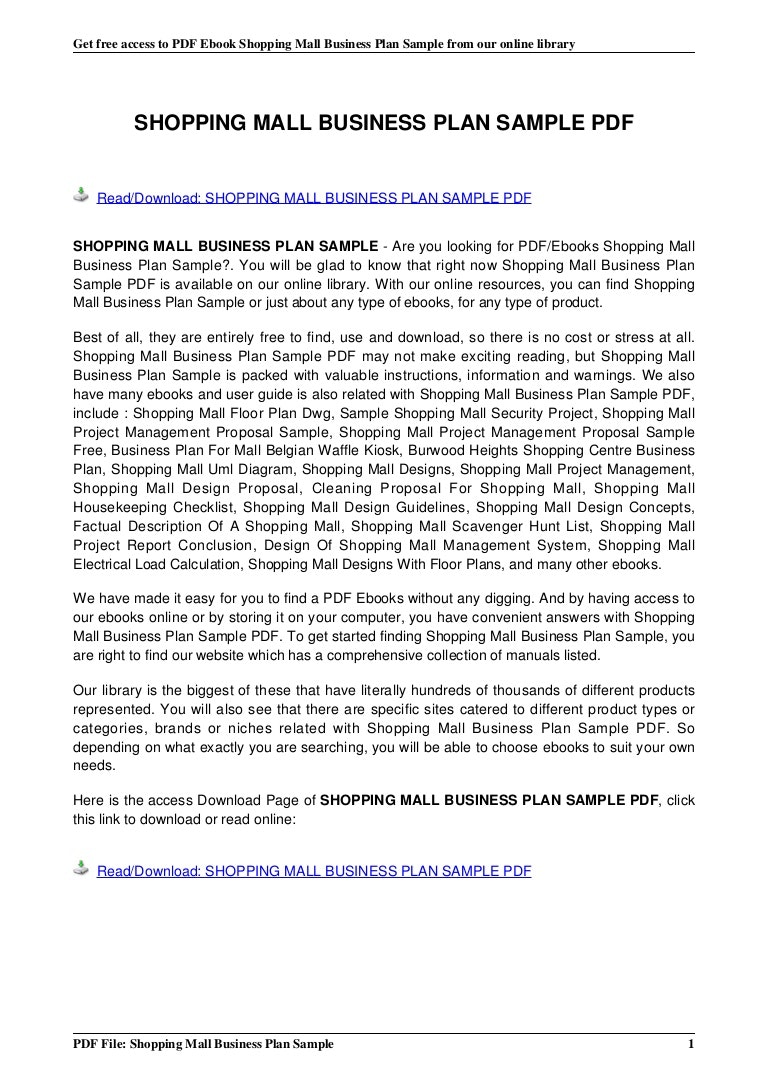
Size: 166 KB
How to Create a Business Plan
Listed below are some tips in creating a business plan. Take note that the tips provided below are not meant for a convenience store business plan only but for other types of business plan as well.
Even if you plan on starting a single proprietorship, you still need a couple of hands to help you out in establishing your business. That is why getting a team is important so that they don’t only help you create a business plan but also assist you in handling daily business operations.
You may or may not consider them as future business partners, so you need to clarify with them specific roles they will be handling. But if you already have a team in place, then there should be little to no problems in creating the business plan. Your team can either be composed of a combination of friends, relatives, business colleagues, or even individuals of whom you don’t have any previous relationships with but want to start a business with you.
Do research
Research has shown that the main reason why businesses fail is due to the lack of research. Take note that research is not only conducted at the beginning but a continuous process for the business to achieve long-term sustainability. Nevertheless, research is still important when the business is still being established, specifically in the creation of a business plan.
There are numerous research methods you can use especially when you will be using respondents as the main data for your business plan. Interviews (phone, email, personal), questionnaires, observations, and focus groups are among the data gathering methods you can use to gather data from respondents.
But if your research does not need respondents and is strictly focused on theories, then all you basically need are research materials. Research materials pertain to books, journals, publications, and online sources. Never assume anything in your business plan, as every information you provide should be backed up by facts and established data. Creating assumptions will only cause negative results for your eventual business and you will greatly suffer from heavy financial losses.
Focus on marketing and finance
A business plan has two main sections: marketing and finance. Marketing focuses on the creation of the product and how the product will be sold in the market while finance focuses on the earning capabilities of the business. That is the reason why marketing and finance have their own separate sections in the business plan.
Marketing is probably the most important aspect of any business as it involves the creation and distribution of the product. Marketing does not only involve advertising and promotion, but the latter is still important in making sure people are aware of that kind of product or service being sold in the market. Marketing is also involved with the creation of the product, not starting with the raw materials that are needed to be purchased, but starting with a plan on how that specific product will benefit a certain market segment.
In terms of finance, this relates to how the product can result to revenues and profits. There are numerous financial analysis methods that companies use to create revenue and profit forecasts. Using these methods may not be 100% accurate, but they provide a necessary blueprint for all forms of financial data the company will eventually be undergoing.
Most companies create a five-year financial analysis which covers all the costs the company will be incurring as well as the revenue and profit streams. The reason for this is to mainly provide data for investors as their decision to invest or not will depend on the stated financial analysis. Of course, they don’t only want to retrieve the initial amount they invested but also the interest that comes with it.
Consult with industry experts
Research is not the only method in creating an effective business plan. Consulting with industry experts is another way to make sure you incorporate the right data and information in the business plan. Industry experts are individuals who have achieved success in their respective industry or fields (i.e., entrepreneurship, technology, sales and marketing, finance, etc.).
Take note that industry experts may or may not provide you with confidential information, as they may be using the said information for their own purposes. But whatever information they provide, it will be highly useful when you will be establishing your own business.
Customizable Convenience Store Business Plan Example
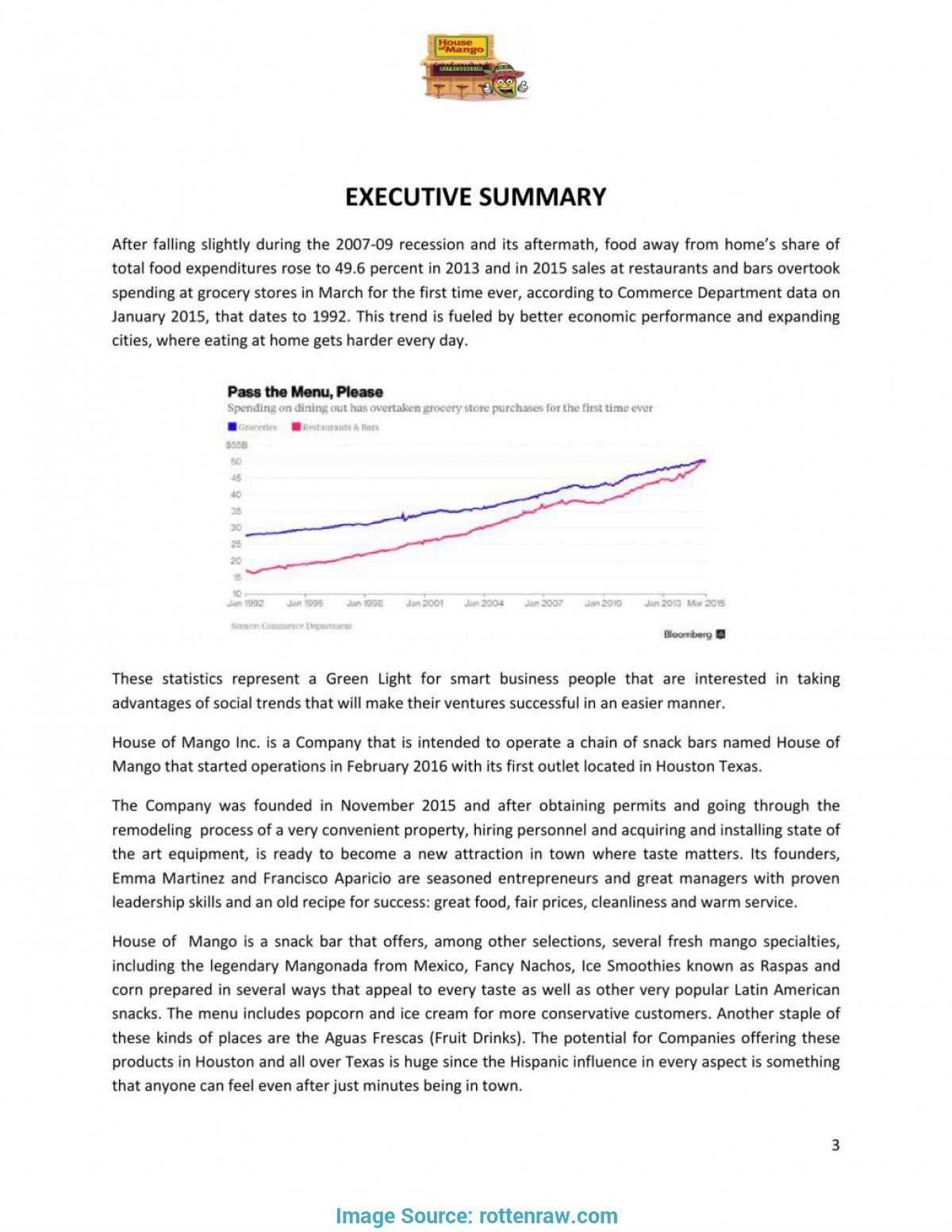
Size: 199 KB
Minimal Convenience Store Business Plan Example

Size: 104 KB
Coffee Convenience Store Business Plan Example
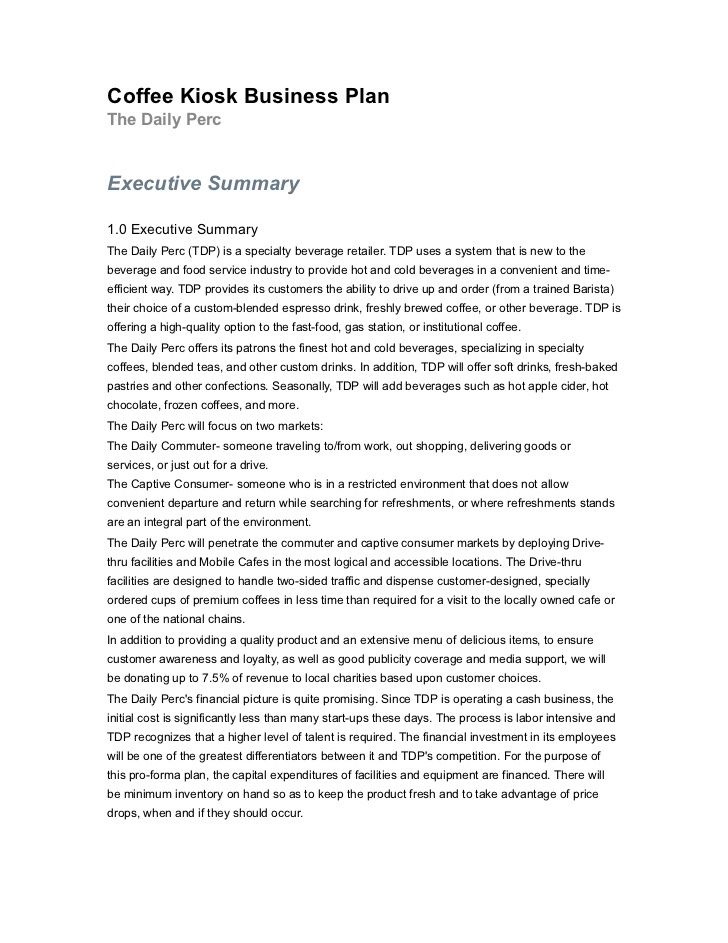
Size: 112 KB
What Products to Sell in a Convenience Store
A convenience store is basically a mini-supermarket. But you can’t pick up each and every item and sell them in your convenience store, in this case you might as well open your own supermarket. To help you narrow down the items you can sell in the convenience store, here are some products you should definitely sell.
Soft drinks, fruit juices, water
The liquids are grouped together by soft drinks, fruit juices, and water. These are the most important items to sell in a convenience store and this should be on the top of your priority list when buying supplies (although you may want to stock up more on water compared to soft drinks and fruit juices).
According to research, water and soft drinks are the most profitable items in a convenience store. These items can easily rake in large profits for your business, so make sure to get a deal with wholesalers so that you can get at least a week worth of supplies.
Healthy snacks
Convenience stores are not known to sell healthy snacks, but major convenience store chains such as 7-Eleven, Lawson, and Mini Stop started to change that trend. They have incorporated sandwiches and low-calorie meals and have proven to be a big hit among customers. You should implement this in your own convenience store as well.
The only problem when it comes to selling healthy snacks is the storage. These kinds of food are usually perishable, so you need a proper storage system so that these foods will still be editable even if it’s stored for more than a few hours. You can make your own snacks or find individual sellers and arrange a deal so that you can sell their food for a higher price. Take note when you will be making and selling your own snacks, you have to take account of the overhead costs when making these food items.
A convenience store is never complete without junk foods. Even if healthy foods are being sold, people will still go for the ever so popular chips, chocolates, and other processed food. You can also consider soft drinks as junk food.
Similar to soft drinks and water, junk foods are one of the most salable items in a convenience store. They are sold by the hundreds every day and people just keep on buying them. You can go for local junk foods or purchase imported ones.
Bath essentials
Convenience stores do not only center around food and drinks. Most convenience stores also sell bath (and laundry essentials). These products include soap, toothbrush, toothpaste, shampoo, conditioner, lotion, feminine wash, and laundry detergent, to name a few.
Bath essentials have also been a staple in convenience stores because they provide convenience to customers who are looking at other alternatives aside from the supermarket. Additionally, individuals most likely forgot to purchase these items at the supermarket so they turn to convenience stores instead. So, it is the responsibility of the convenience store to provide these items to customers.
School supplies
Aside from bath essentials, school supplies are also the non-food products that are sold in a convenience store. School supplies are targeted mostly at students and individuals who are working for an academic institution. Similar to bath essentials, school supplies are sold to individuals who are looking at another venue to purchase these items. The reasons might involve the person forgetting to purchase the product in a store or the person just wanting to purchase the product in a location that is more convenient to him or her.
Until only recently, convenience stores have also started selling medicine (prescription and non-prescription). Business owners have created an idea to merge a pharmacy and a convenience store into one business. And the result is a pharmacy-convenience store industry which has promisingly become very profitable.
Setting up a pharmacy together with a convenience store is much more difficult since there are numerous licenses and requirements that need to be accomplished first before the business can open. Additionally, employees also need to be registered pharmacists as this is a requirement by most countries in regards to people working in a pharmacy.
Medicines are not a requirement to be sold in a convenience store. Even non-prescription medicines are still very salable and they are not as expensive as the prescription ones.
Most Popular Convenience Stores Around the World
US-based 7-Eleven is the largest convenience store in the world. The store currently has over 8,600 stores in North America and around 43,500 stores throughout Latin America, Europe, Asia, and Australia.
FamilyMart is one of the most popular convenience stores in Asia. It was founded in Japan and operations quickly expanded to China, Taiwan, Vietnam, the Philippines, and recently in the US.
This Indonesia-based convenience store has over 3,000 stores across Jakarta, Bali, Sumatra, and Sulawesi.
Tesco Express
Tesco Express is the biggest convenience store in the United Kingdom. Tesco currently operates 6,500 stores around the world.
Ministop is another Japan-based convenience store which has proven to be very successful outside its home soil. It currently has stores in the Philippines, Korea, Vietnam, and Indonesia.
CBA is the Eastern Europe equivalent of 7-Eleven. Founded 1992 in Hungary, CBA currently boasts 5,000 stores across Romania, Serbia, Bulgaria, Slovakia, Croatia, and Poland.
Matrix Convenience Store Business Plan Example
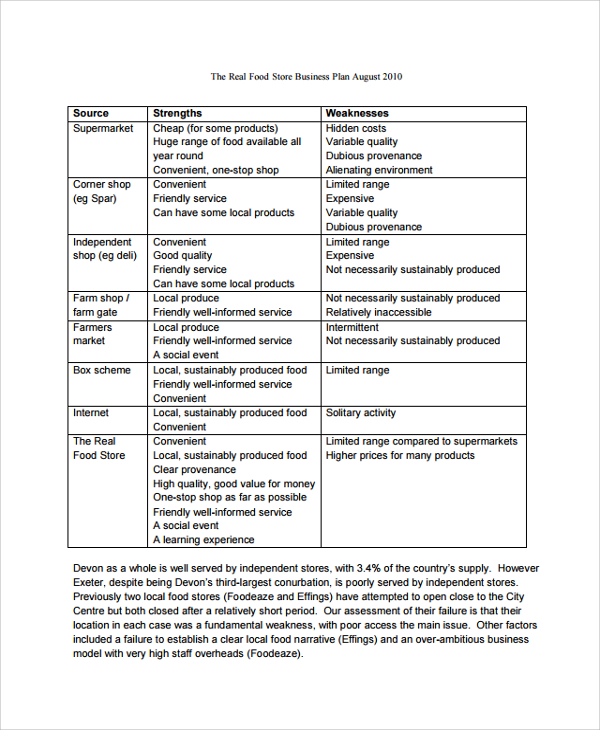
Convenience Store Expenses Business Plan Example
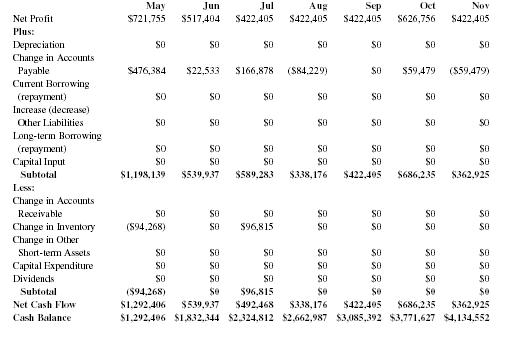
Size: 33 KB
We hope you found this article to be informative as well helpful when you will be creating your own convenience store business plan.

Text prompt
- Instructive
- Professional
Create a study plan for final exams in high school
Develop a project timeline for a middle school science fair.
Gardners Candies Unveils Ambitious National Grocery and Convenience Store Growth Plan
TYRONE, Pa., March 26, 2024 (GLOBE NEWSWIRE) -- Gardners Candies, Inc., the legendary Pennsylvania-based chocolatier, is launching an aggressive strategy to infiltrate grocery and convenience store shelves across the nation.
New Chief Operating Officer Jim Westover is leading the initiative, which includes bolstered production capabilities. Westover joined Gardners Candies earlier this year. Previously president of Pittsburgh-based LandOpt, he also has helped drive sales growth at Yogi Bear’s Jellystone Park Camp-Resorts and Bruster’s Real Ice Cream.
Gardners Candies products are already sold in more than 150 retail locations, including Sheetz, Giant Eagle, GetGo, Giant Food Stores and CVS. Sales in those outlets have surged by 30% over the past two years. The brand’s premier product, the Original Peanut Butter Meltaway, is crafted with a unique, proprietary peanut butter that melts in seconds. Created in the 1960s, the Penn State food science department was involved in its development.
The brand is focusing on introducing its iconic, premium confections to customers of Wawa, Kroger, Publix, UDF and Menard’s, as well as other national grocers and convenience store operators.
"Over the last few years, we’ve seen increased interest among regional retailers who see the value of carrying Gardners’ premium chocolates,” said Bill Sarris, CEO of Sarris Candies, Inc., which owns Gardners. “With Jim’s leadership and our new manufacturing capacity, Gardners Candies is poised to become a true national brand."
Photos of Westover and Gardners Candies logo here: https://www.dropbox.com/scl/fo/40jcth38rybd0y7rjhgp7/h?rlkey=ca1unw71btj9p9zfnbfjp3bll&dl=0
About Gardners Candies, Inc.
Gardners Candies was founded in 1897 by sixteen-year-old entrepreneur James “Pike” Gardner in Tyrone, Pennsylvania. The brand operates several stores in communities across Central Pennsylvania, distributes a variety of products to retailers across three states, and is most renowned for its famous Original Peanut Butter Meltaways. Beyond regional storefronts and online sales, Gardners Candies offers fundraising programs, business and custom gifting solutions, and private label services for various companies. Acquired by Sarris Candies, Inc. in 1997, Gardners Candies has continued to uphold a legacy of providing quality, locally sourced products with dedicated customer service. For more information, visit https://www.gardnerscandies.com/.
Contact: Ritter Communications, Brad Ritter [email protected] 740.815.1892

Moscow Quick Stop
Location & hours.
Suggest an edit
14380 Highway 57
Moscow, TN 38057
Amenities and More
Powered by Health Department Intelligence
Recommended Reviews
- 1 star rating Not good
- 2 star rating Could’ve been better
- 3 star rating OK
- 4 star rating Good
- 5 star rating Great
Select your rating
People Also Viewed

Dodge’s Southern Style

CVS Pharmacy
County Line Grocery

Exxon On the Run

Scootie’s One-Stop

Walmart Neighborhood Market
Best of Moscow
Things to do in Moscow
Convenience Stores Near Me
Rite Aid Pharmacy Near Me
Other Convenience Stores Nearby
Find more Convenience Stores near Moscow Quick Stop

IMAGES
VIDEO
COMMENTS
6. Financial Plan. The financial plan is perhaps, with the executive summary, the most important section of any business plan for a convenience store. Indeed, a solid financial plan tells lenders that your business is viable and can repay the loan you need from them.
Speedy Pete's Convenience Store will have the following milestones complete in the next six months. 1/1/202X - Finalize purchase of retail land. 2/15/202X - Begin construction on the convenience store. 3/1/202X - Finalize contracts for gas and grocery supplier. 4/15/202X - Purchase all store inventory and supplies.
The convenience store industry is one of the few industries which have seen a constant increase in revenue along with the increase in business locations with time. The total sales from the US convenience store industry increased by approximately $80 billion within the course of one year from 2015 to 2016. The number of convenience stores has ...
Convenience Store Business Plan Template. If you want to start a convenience store business or expand your current one, you need a business plan. Over the past 20+ years, we have helped over 7,000 entrepreneurs and business owners create business plans to start and grow their convenience stores.
A business plan helps you stand apart from your competitors and prepares you for challenges and opportunities alike. Industry Overview. The convenience store industry generated a whopping amount of 532.9 billion dollars in 2020 and continues to grow at a rapid pace moving forward, too.. As convenience stores provide access to a variety of things including packaged food, fresh groceries, and on ...
Convenience store industry sales rose 8.6% to $86.3 billion for 20xx. Overall U.S. retail sales grew by only 6.3%, and grocery sales followed with 2.4% growth, proving once again that the convenience store industry has become a powerful force in U.S. retailing. Pre-tax profit margin in the convenience store industry was the highest since 1988 ...
A business plan is not a one-shot exercise as maintaining it current is the only way to keep visibility on your future cash flows. A business plan has 2 main parts: a financial forecast outlining the funding requirements of your convenience store and the expected growth, profits and cash flows for the next 3 to 5 years; and a written part which ...
1. Don't worry about finding an exact match. We have over 550 sample business plan templates. So, make sure the plan is a close match, but don't get hung up on the details. Your business is unique and will differ from any example or template you come across. So, use this example as a starting point and customize it to your needs.
By using our Convenience Store Business Plan Template, you can experience several benefits: Time and Effort Saving: Leverage our ready-made template that simplifies the planning process. Focus on fine-tuning your convenience store concept and business tactics rather than building a plan from scratch. Clarity and Direction: Our template provides ...
This plan covers all the information and data required to attract funding for a convenience store. The sections mentioned below aren't limited, and you can add more per your need. 1. Executive Summary. [Sender.Store] is a convenience store located in [Sender.City] [Sender.State]. It aims to serve various schools, residential areas, and ...
Starting a convenience store is a great idea because it offers customers a convenient way to purchase everyday items quickly, and it can be a lucrative business opportunity due to the steady demand for these items.. However, prior to that, you must have a business plan. A business plan is a vital tool for any new project, and writing one before starting a convenience store can help to ensure ...
For seamless customization, we provide a 'Convenience Store Business Plan PDF' for download. This document is vital for entrepreneurs committed to developing a compelling and effective strategy for launching or growing their convenience store. The 'AI Business Plan Generator' serves as a comprehensive resource, offering profound insights into ...
Convenience Store Operations Plan While the earlier sections of your business plan explained your goals, your operations plan describes how you will meet them. Your operations plan should have two distinct sections as follows.
1. Create the general business description for your convenience store. List the registered name and business structure of your business, such as sole proprietorship or Limited Liability ...
Convenience Store Business Plan Summary. Putting together a business plan for your convenience store business is a worthwhile endeavor. If you follow our template, by the time you are done, you will truly be an expert. You will really understand the convenience store business, your competition and your customers. You will have developed a ...
A convenience store business plan is a detailed document that outlines the objectives, strategies, and operational processes of establishing and running a convenience store. It serves as a roadmap ...
Cost for store equipment (cash register, security, ventilation, signage) - $13,750. Cost of purchase and installation of CCTVs - $5,000. The cost for the purchase of furniture and gadgets (Computers, Printers, Telephone, TVs, Sound System, tables and chairs et al) - $4,000. The cost of Launching a Website - $600.
Convenience Store Business Plan. If you want to start a convenience store or expand your current business, you need a business plan. The following sample business plan and template gives you the key elements to include in a winning business plan. It can be used to create a convenience store start up business plan or a plan to grow your existing ...
Food Truck Business Plan Examples - PDF. Bookkeeping Business Plan Examples - PDF. That is the reason why business plans are important when you start a business. It provides investors as well as other stakeholders necessary information about the company and its numerous activities. To help you create your own convenience store business plan ...
TYRONE, Pa., March 26, 2024 (GLOBE NEWSWIRE) -- Gardners Candies, Inc., the legendary Pennsylvania-based chocolatier, is launching an aggressive strategy to infiltrate grocery and convenience ...
Dollar General. 0.8 miles away from Moscow Quick Stop. Dollar General Moscow is proud to be America's neighborhood general store. We strive to make shopping hassle-free and affordable with more than 15,000 convenient, easy-to-shop stores. Our stores deliver everyday low prices on items… read more.
Regular. $3.66. From Business: Sinclair Oil's iconic DINO-SAUR has been fueling America since 1916 and is proud to provide innovations such as DINOCARE™ A TOP TIER™ Gasoline that will keep…. Showing 1-29 of 29. Convenience Store in Moscow on YP.com. See reviews, photos, directions, phone numbers and more for the best Convenience Stores in ...
See other industries within the Retail Trade sector: Automobile Dealers , Automotive Parts, Accessories, and Tire Retailers , Beer, Wine, and Liquor Retailers , Book Retailers and News Dealers , Building Material and Supplies Dealers , Clothing and Clothing Accessories Retailers , Department Stores , Electronics and Appliance Retailers View ...
Industry: Scientific Research and Development Services , Other Chemical Product and Preparation Manufacturing , Warehouse Clubs, Supercenters, and Other General Merchandise Retailers , Grocery and Convenience Retailers , Commercial physical research See All Industries, Chemical preparations, nec, Miscellaneous general merchandise Grocery stores ...